Max Mason. No. 6785.
Images


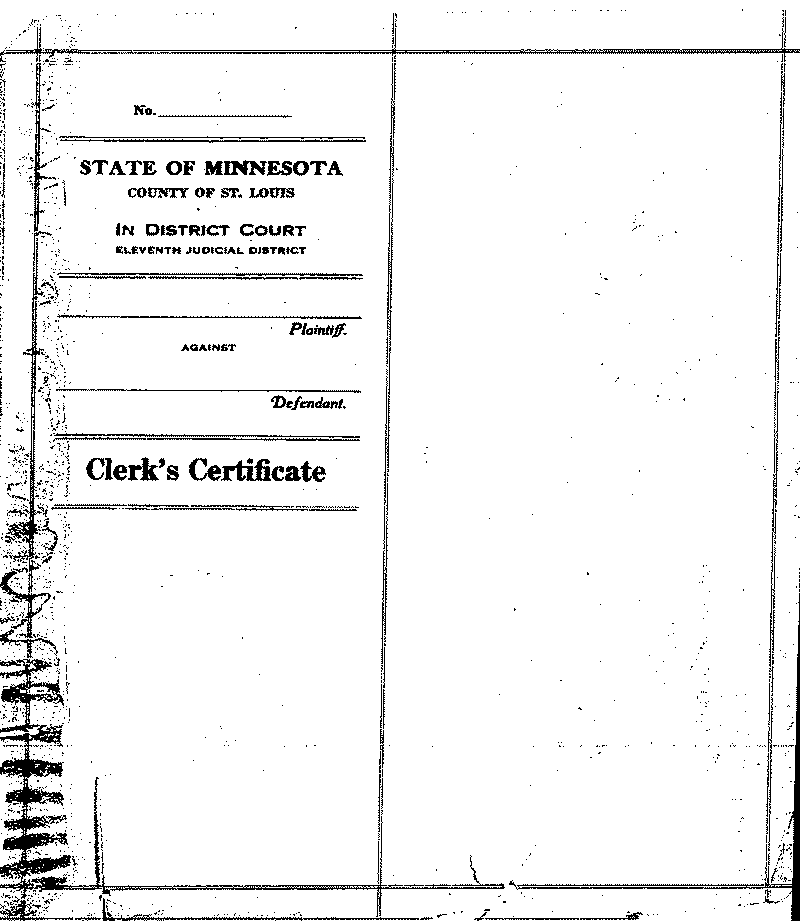
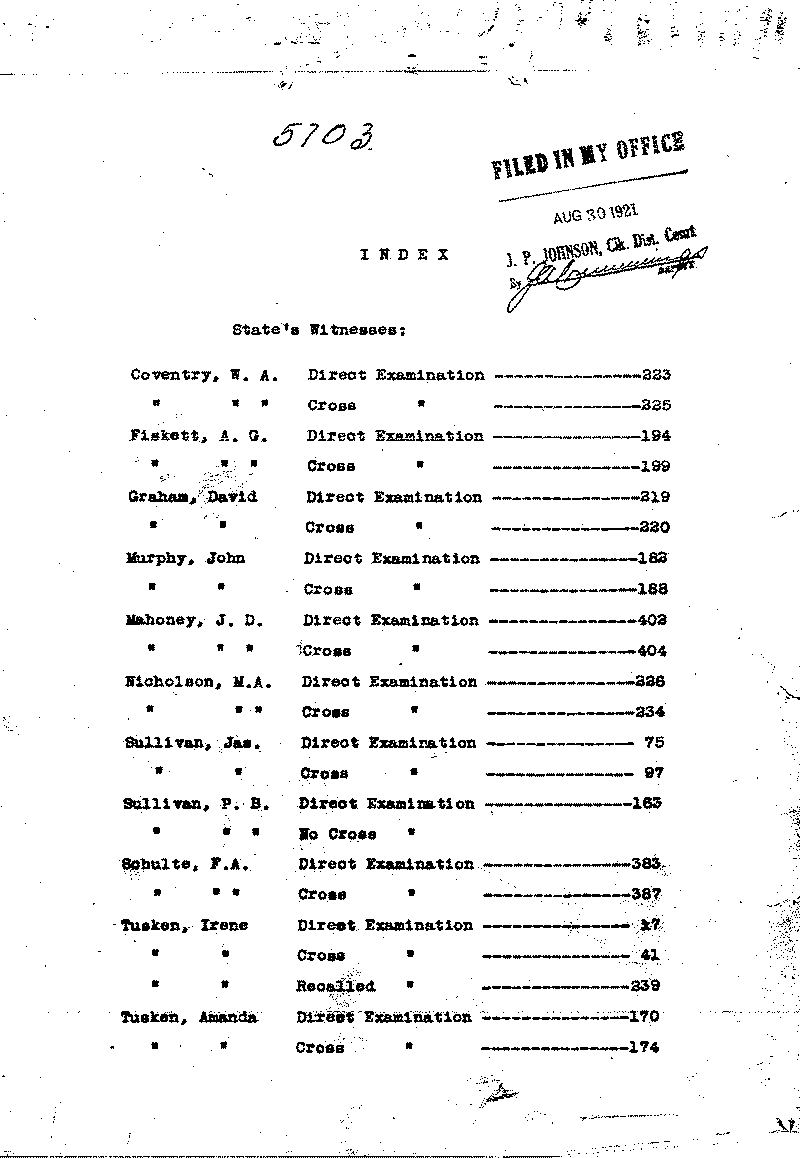
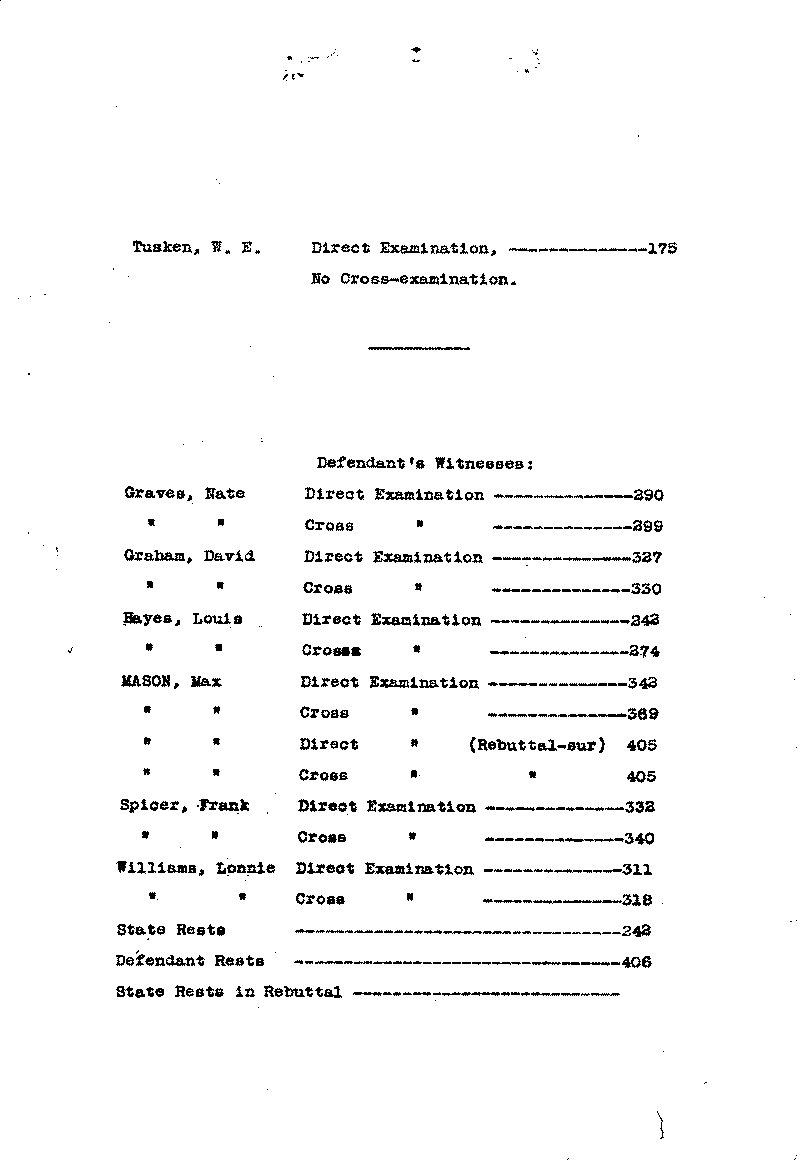
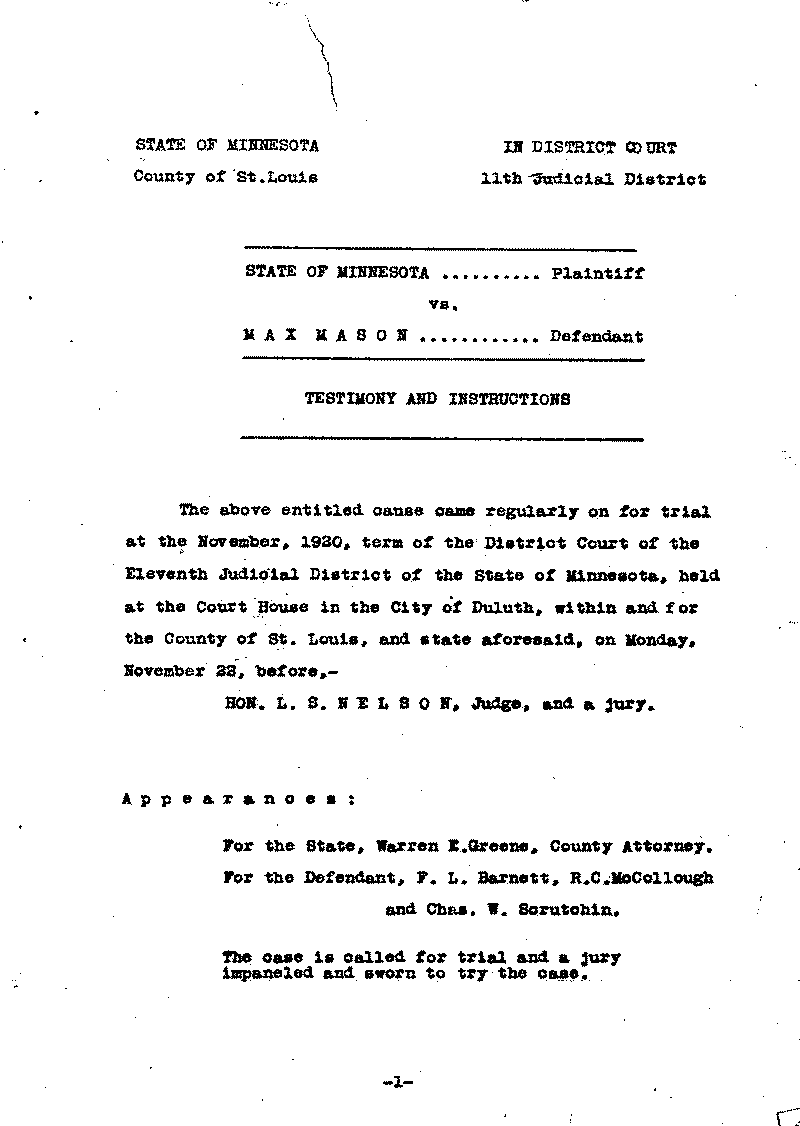


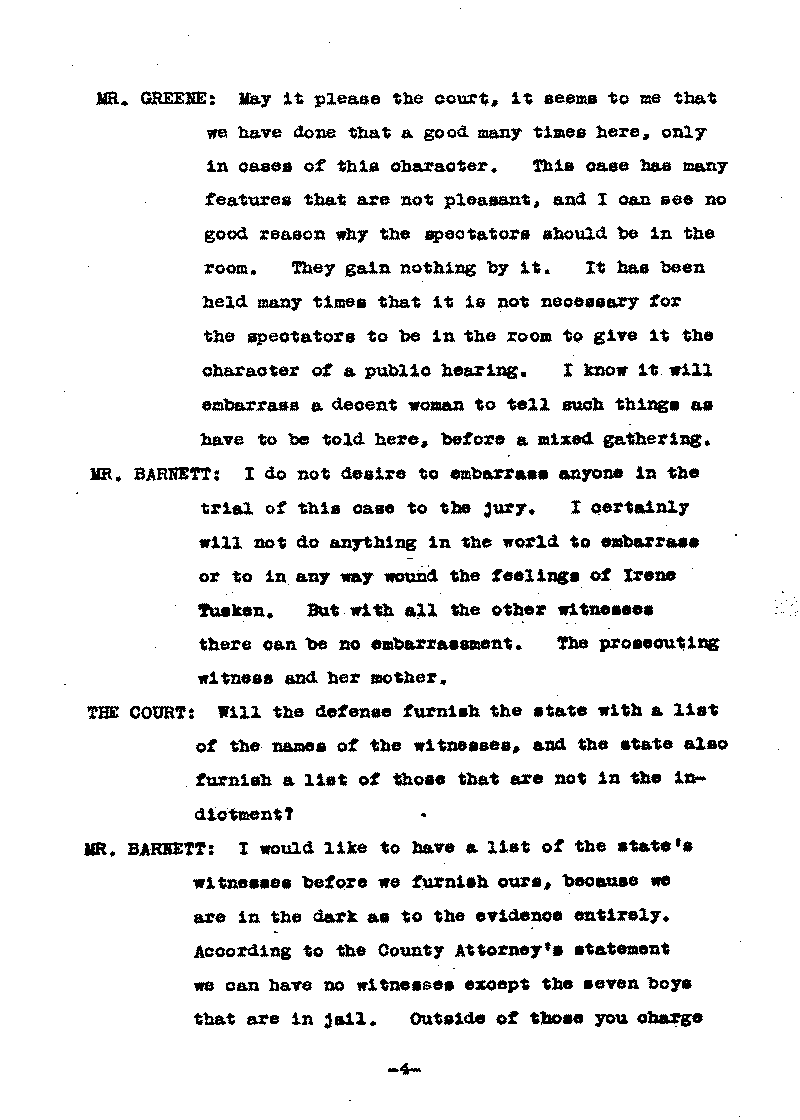

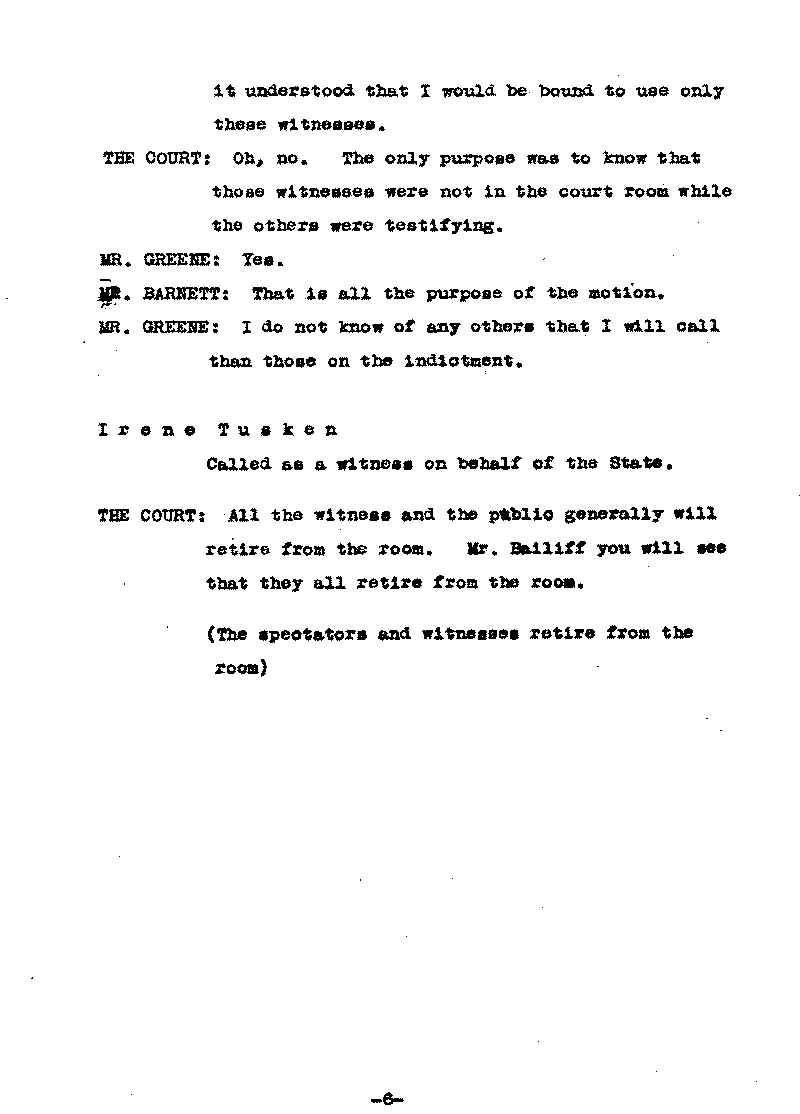
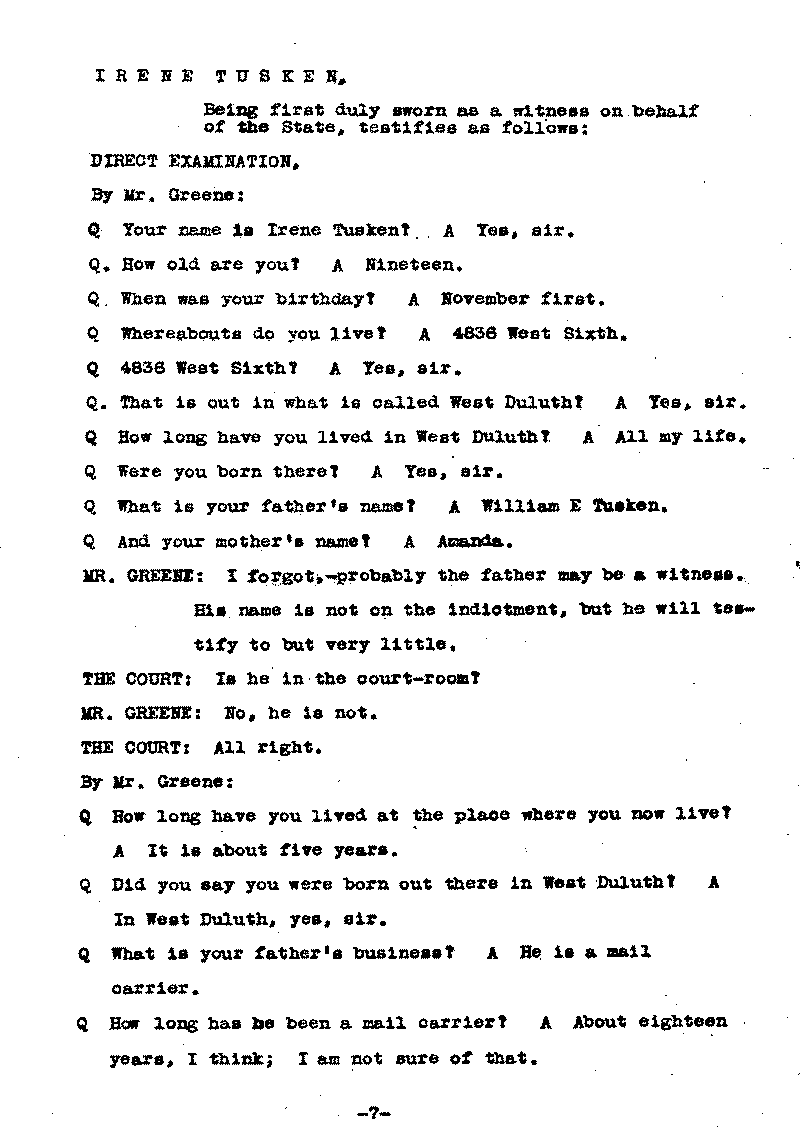
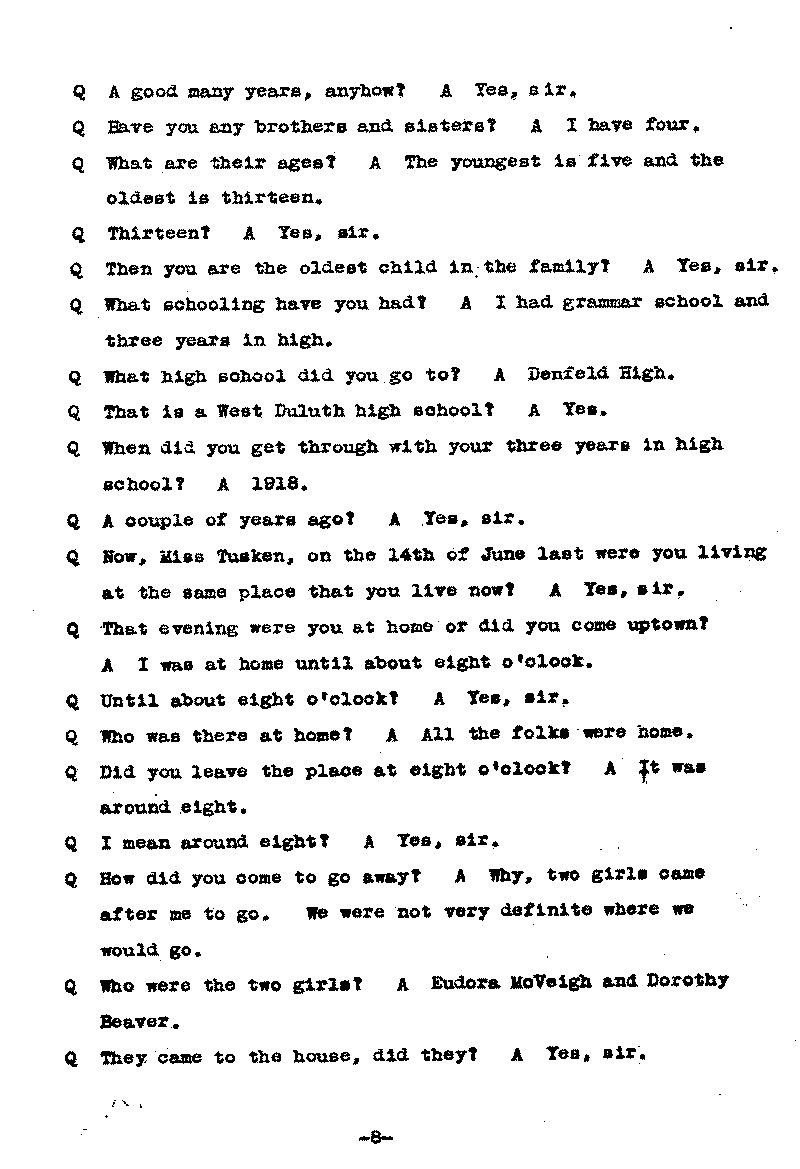


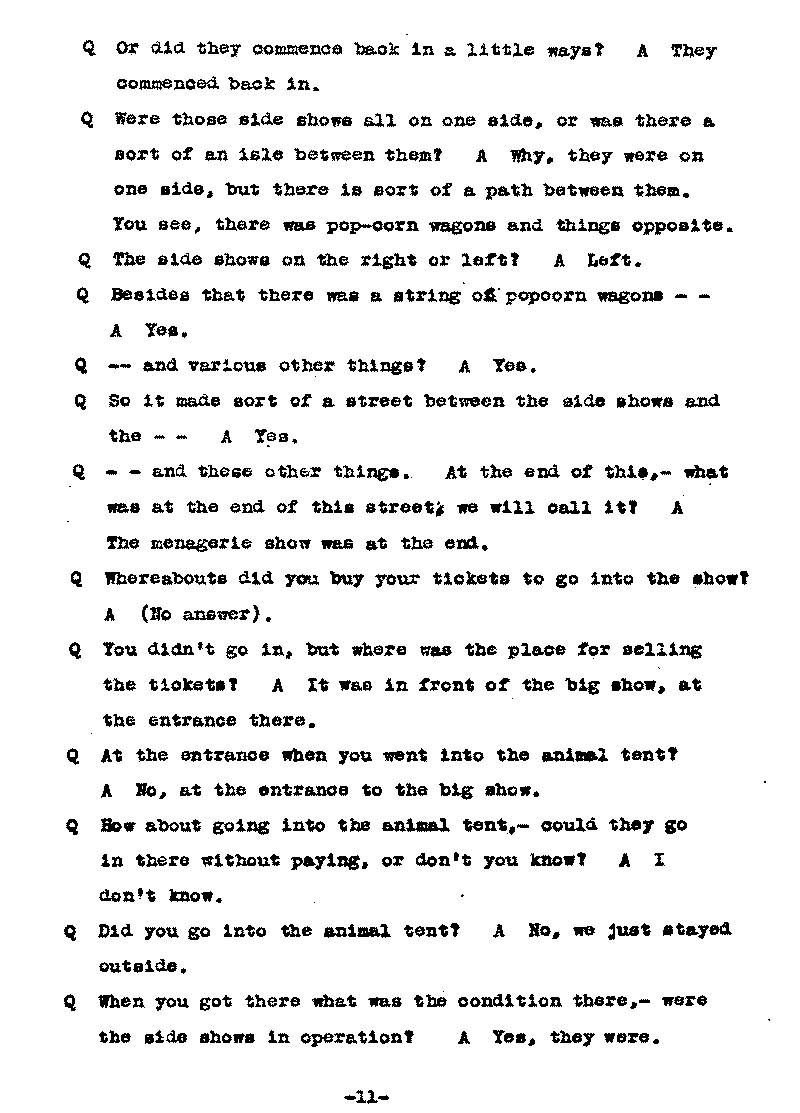
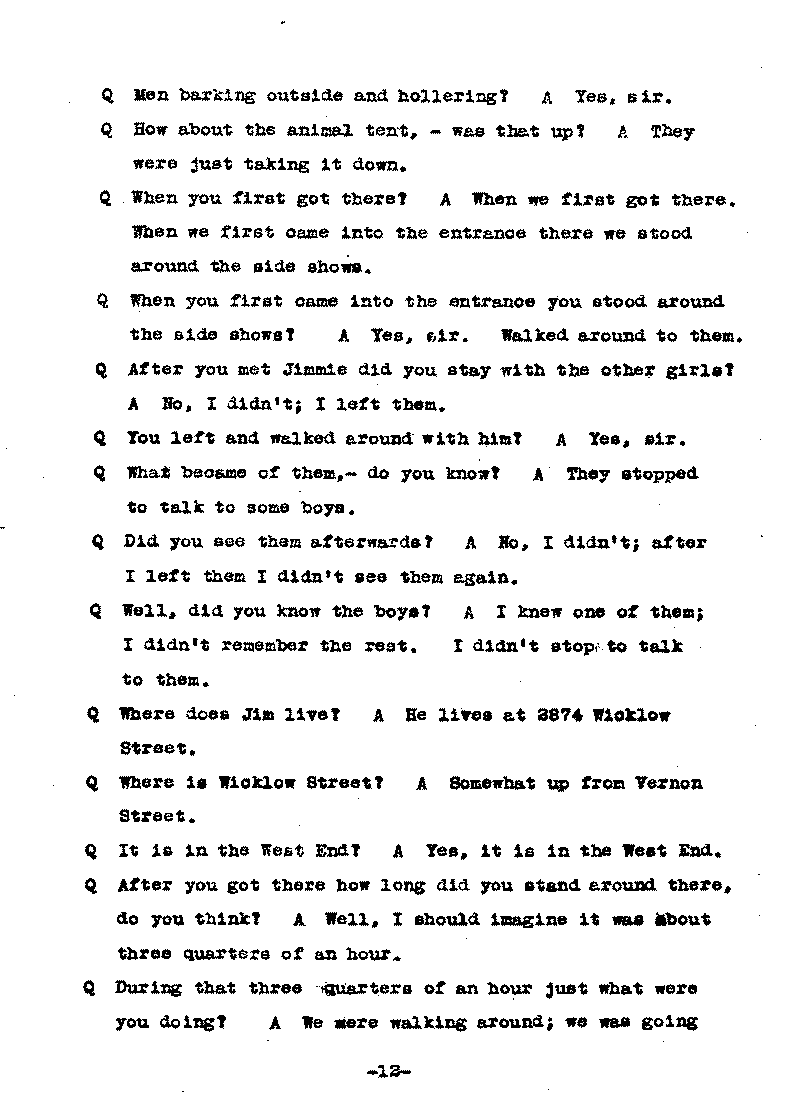



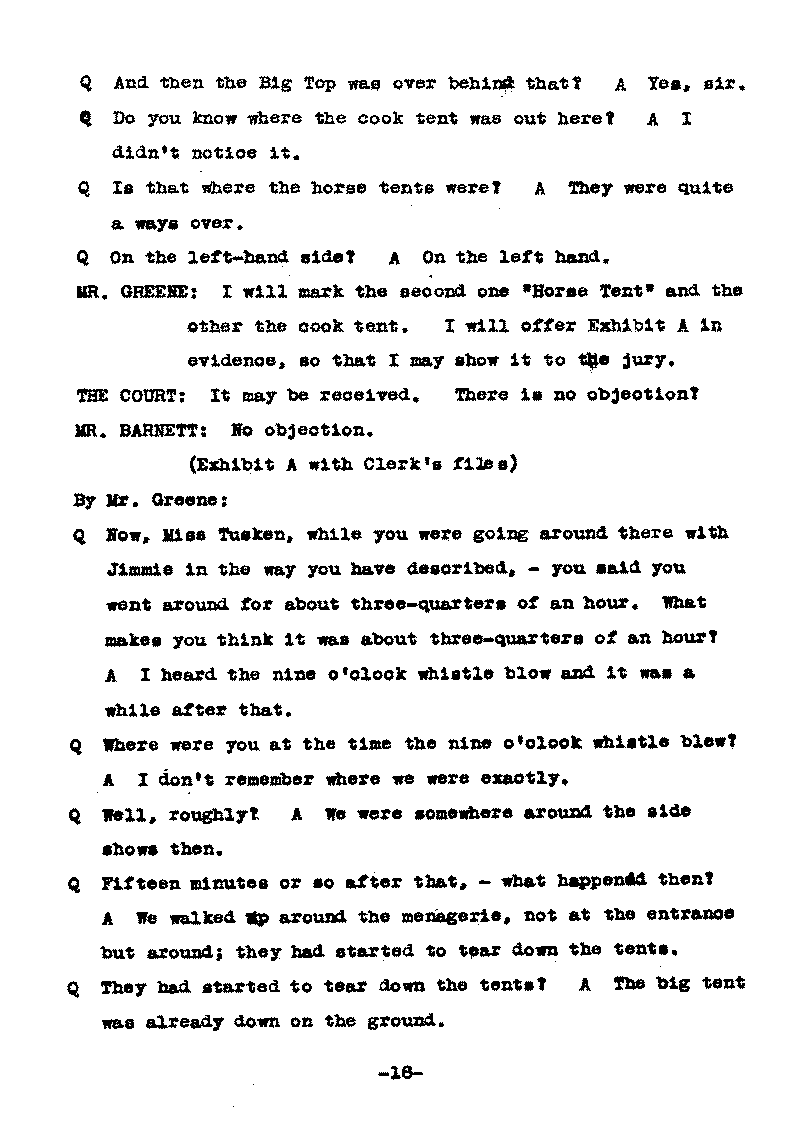


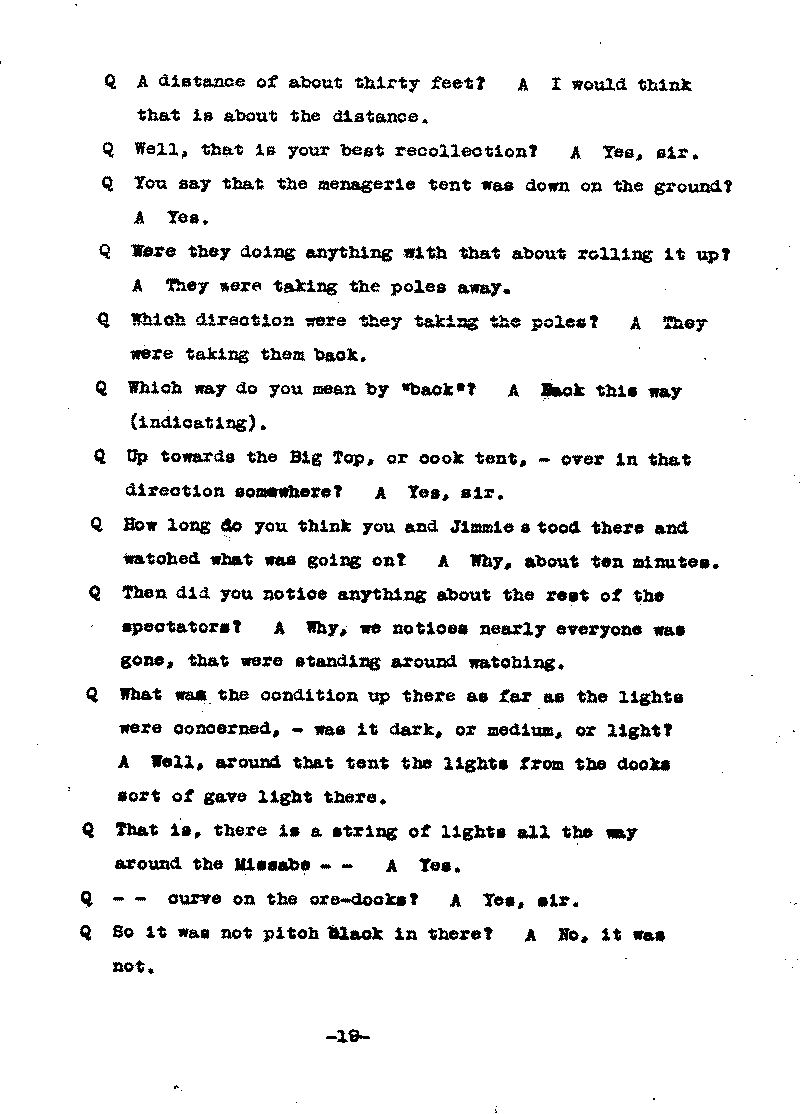
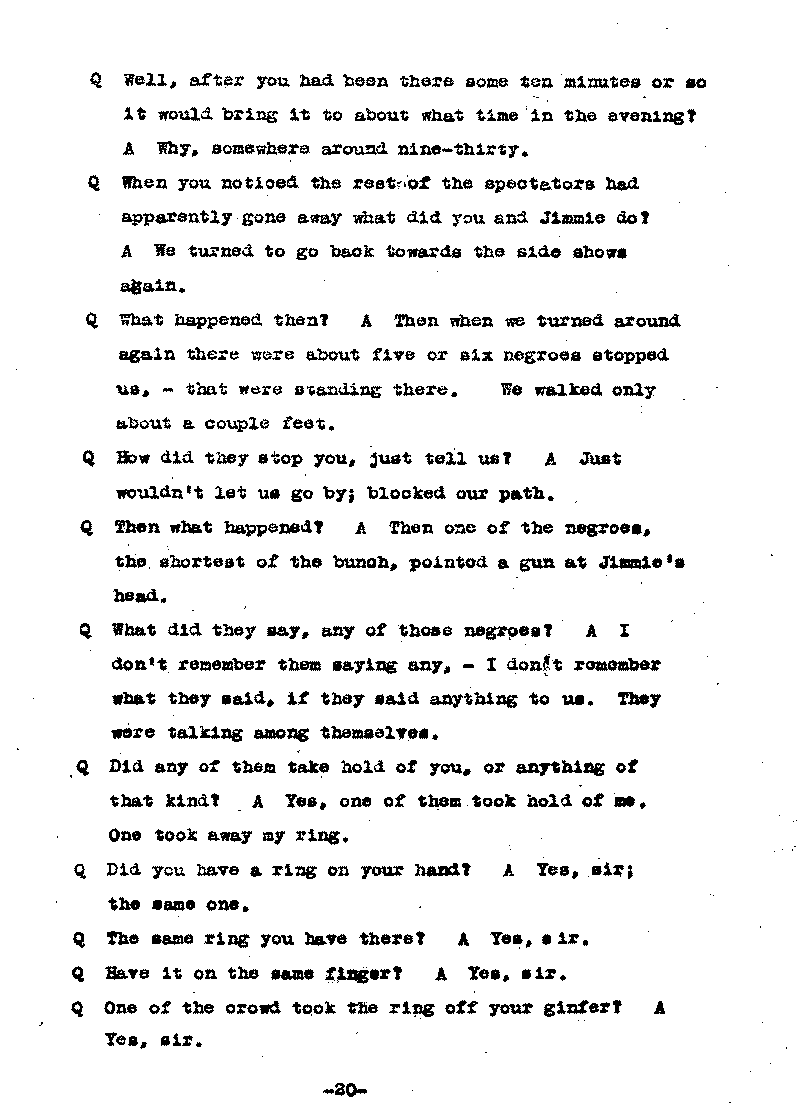
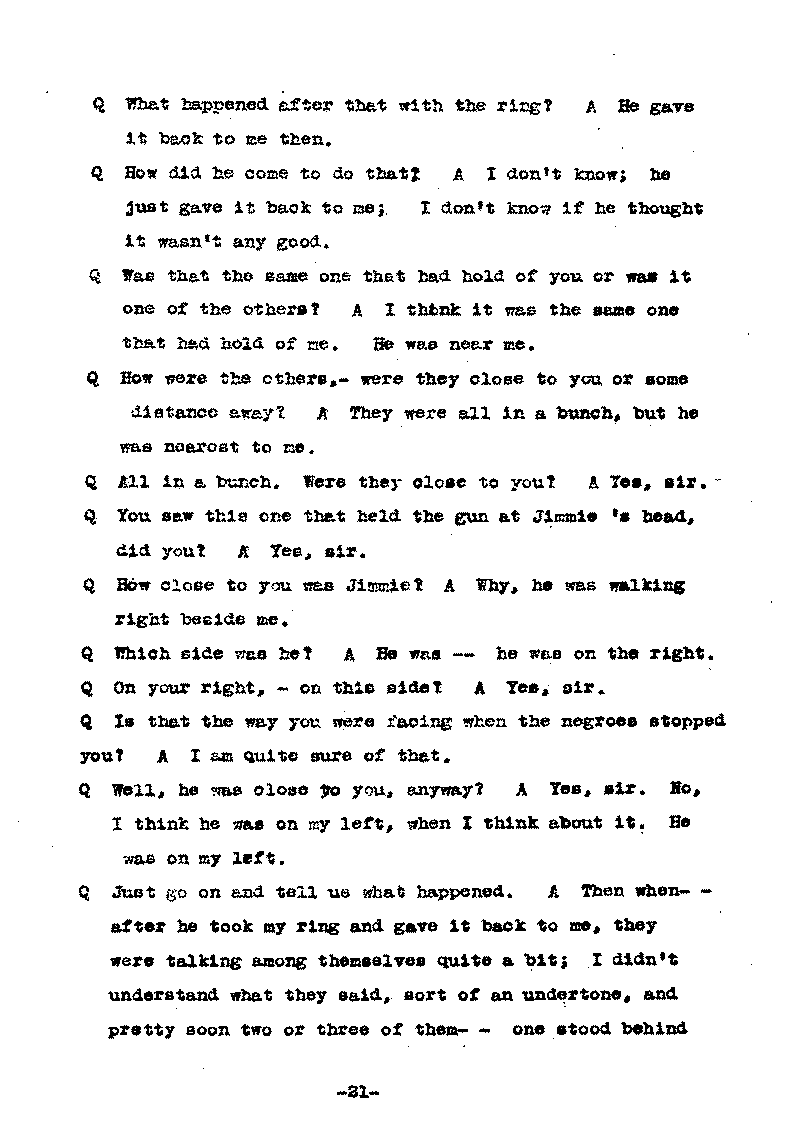
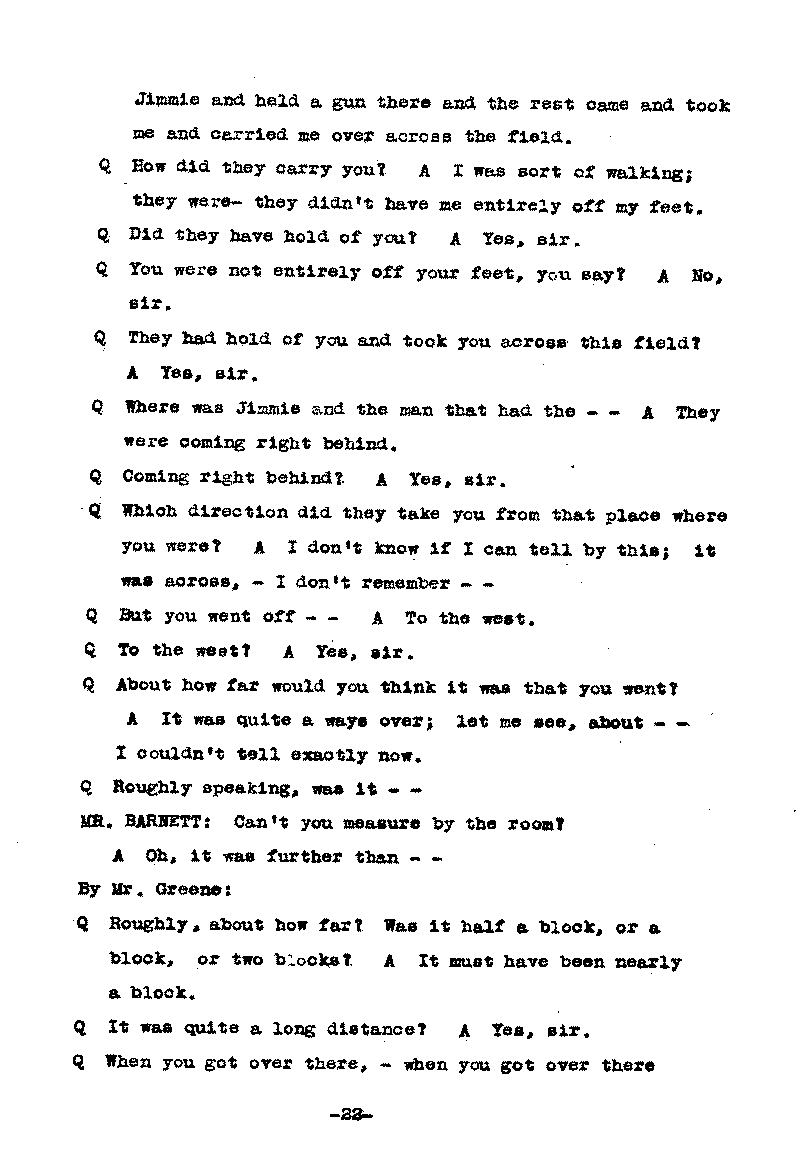
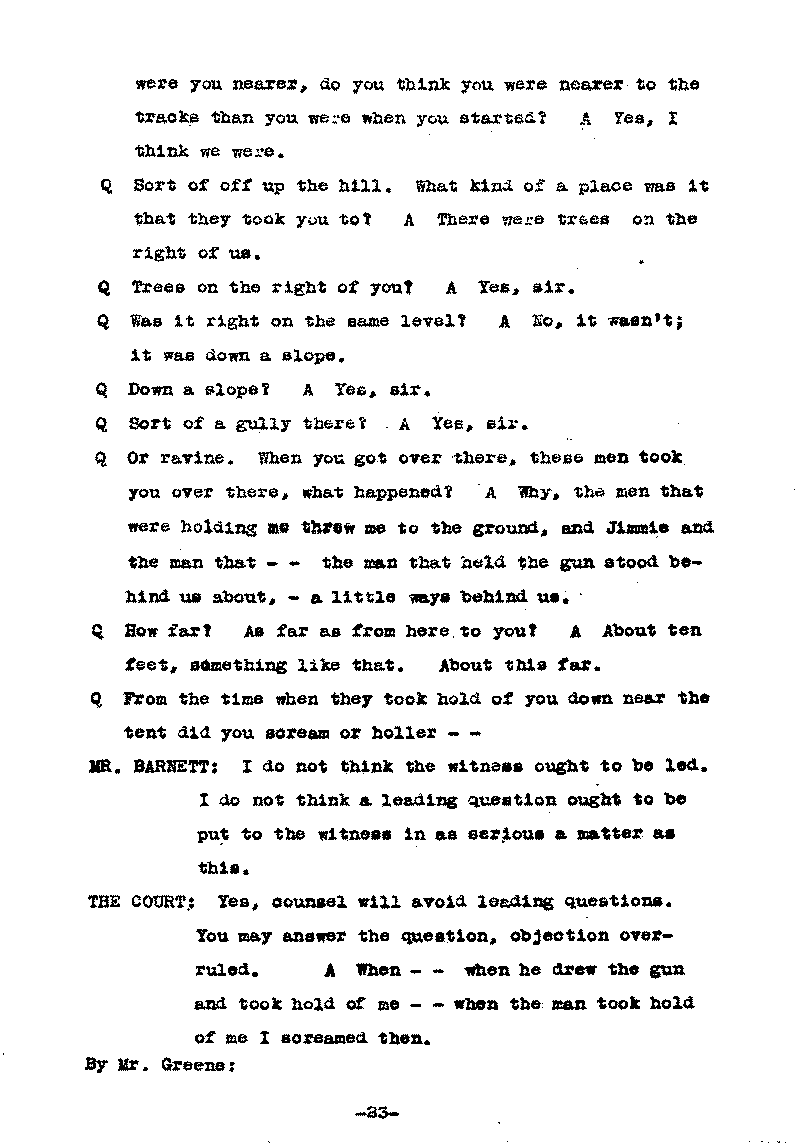


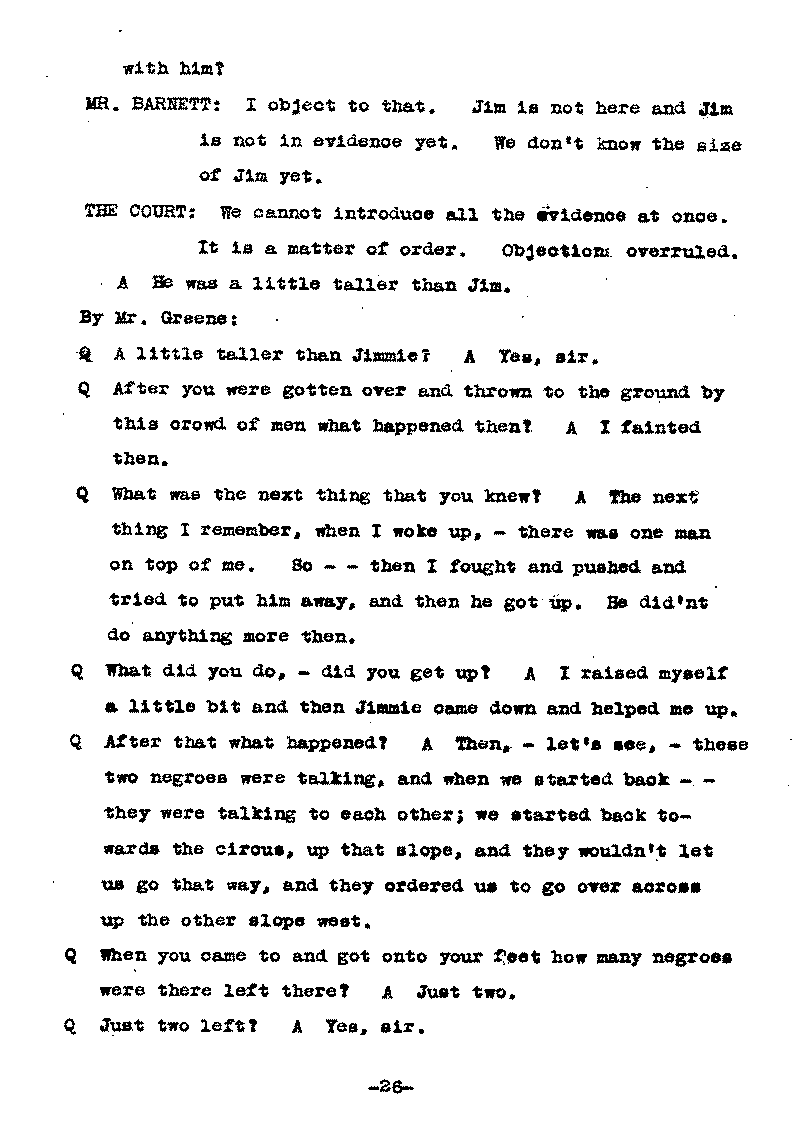
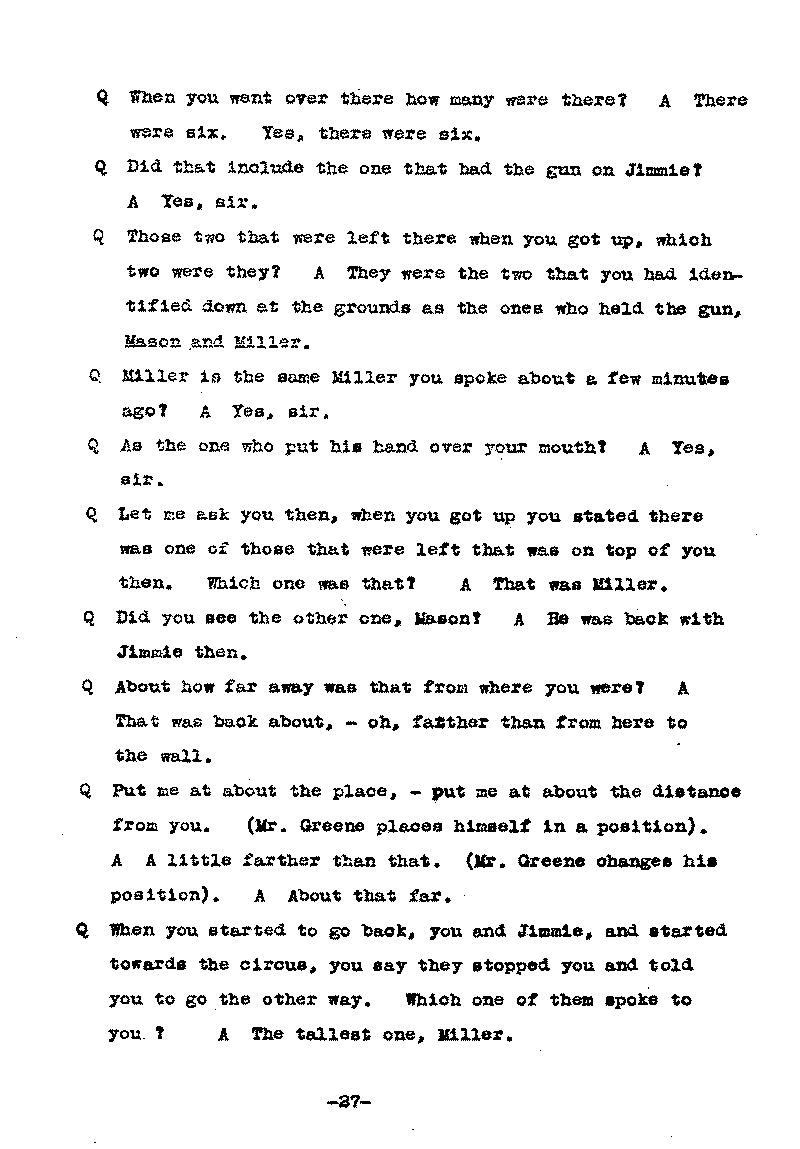
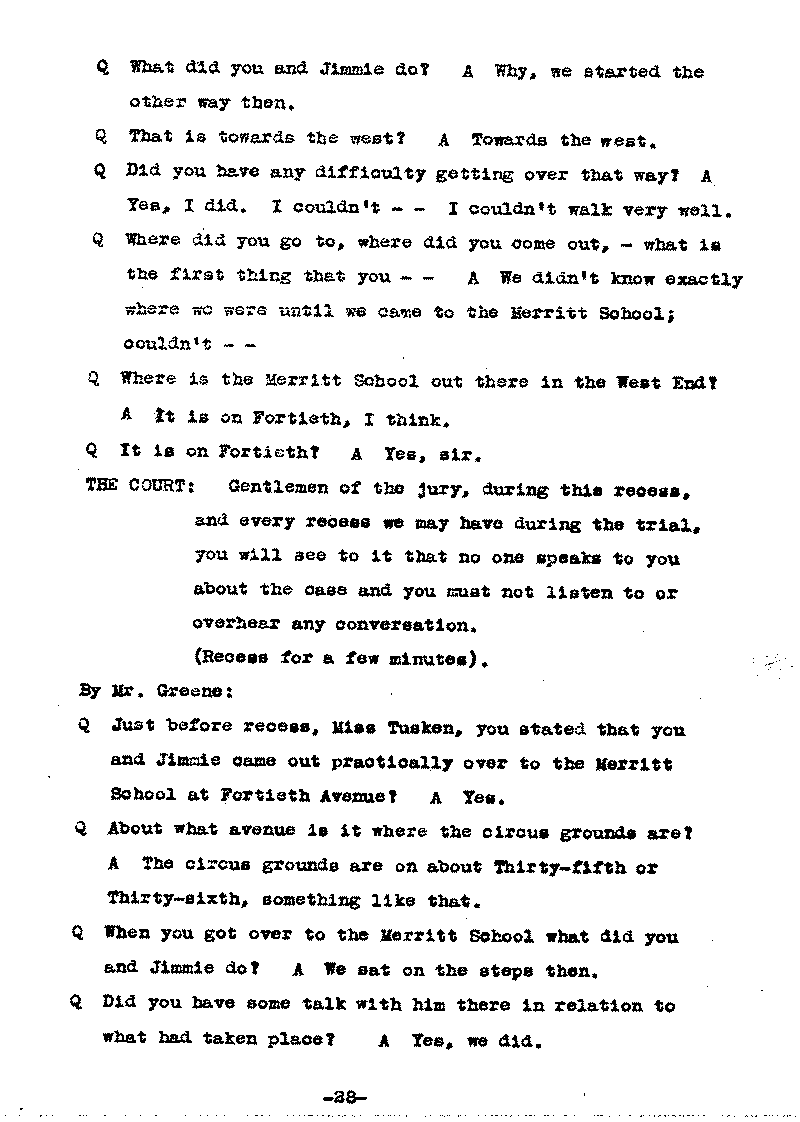

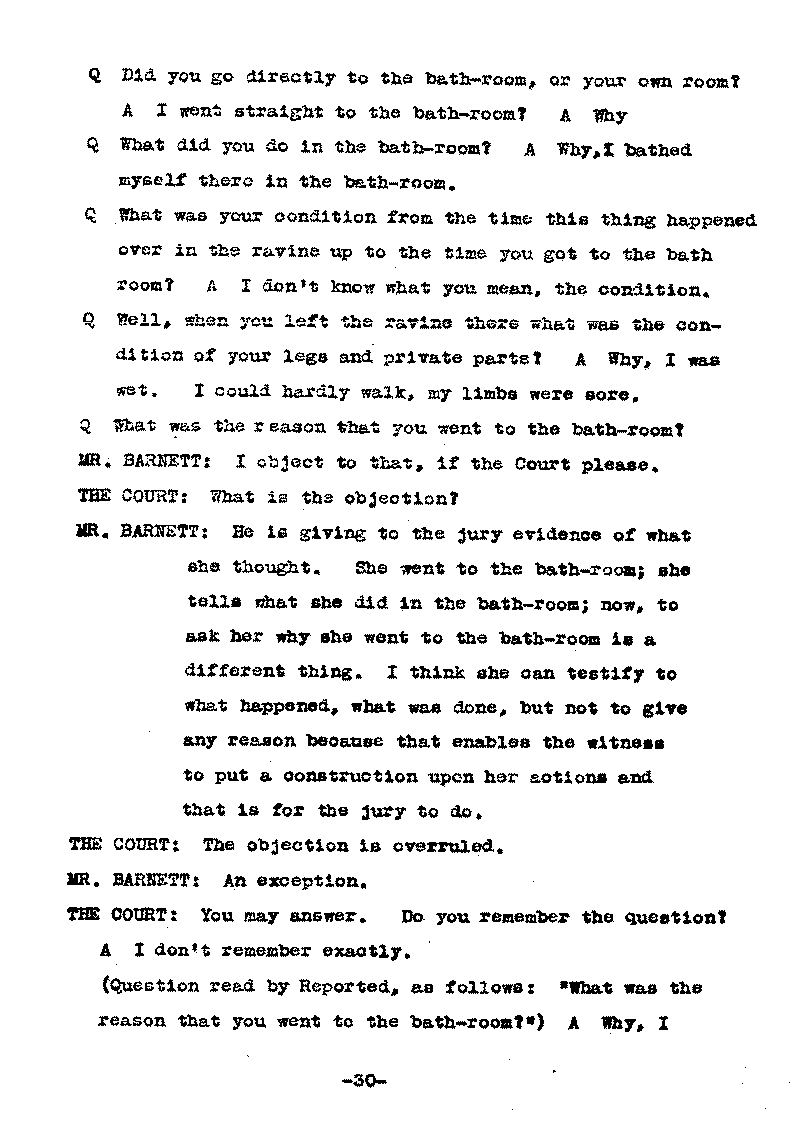

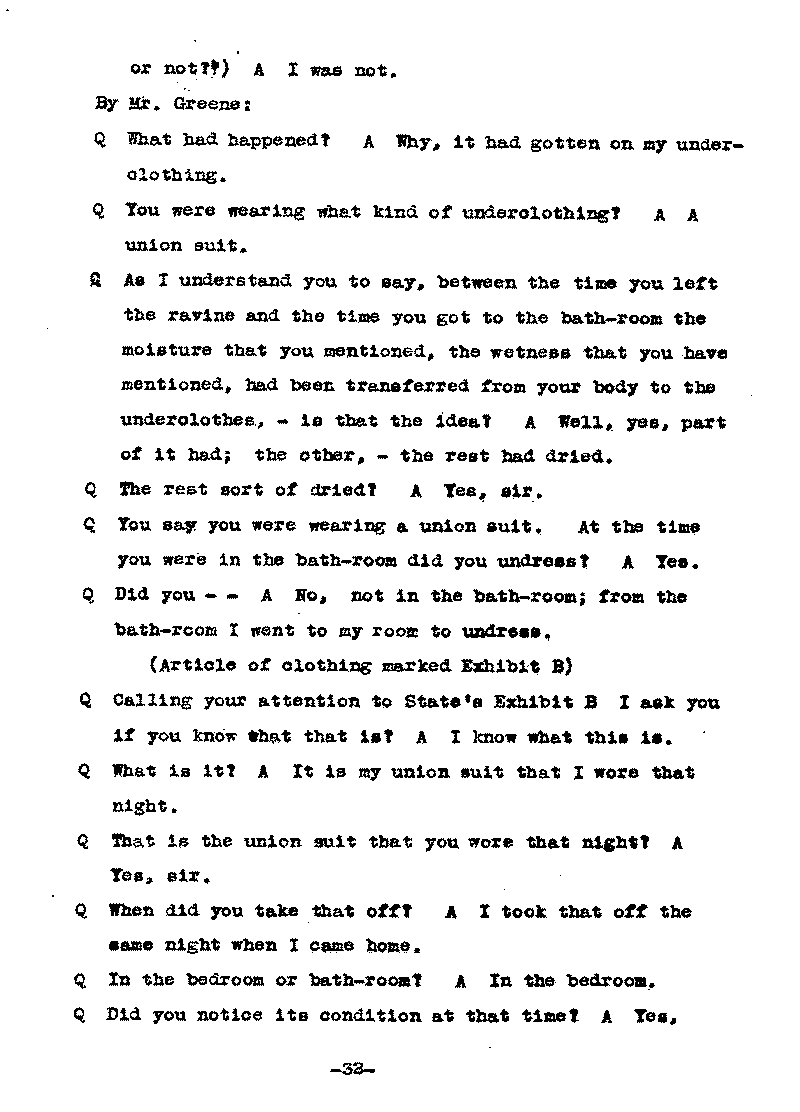
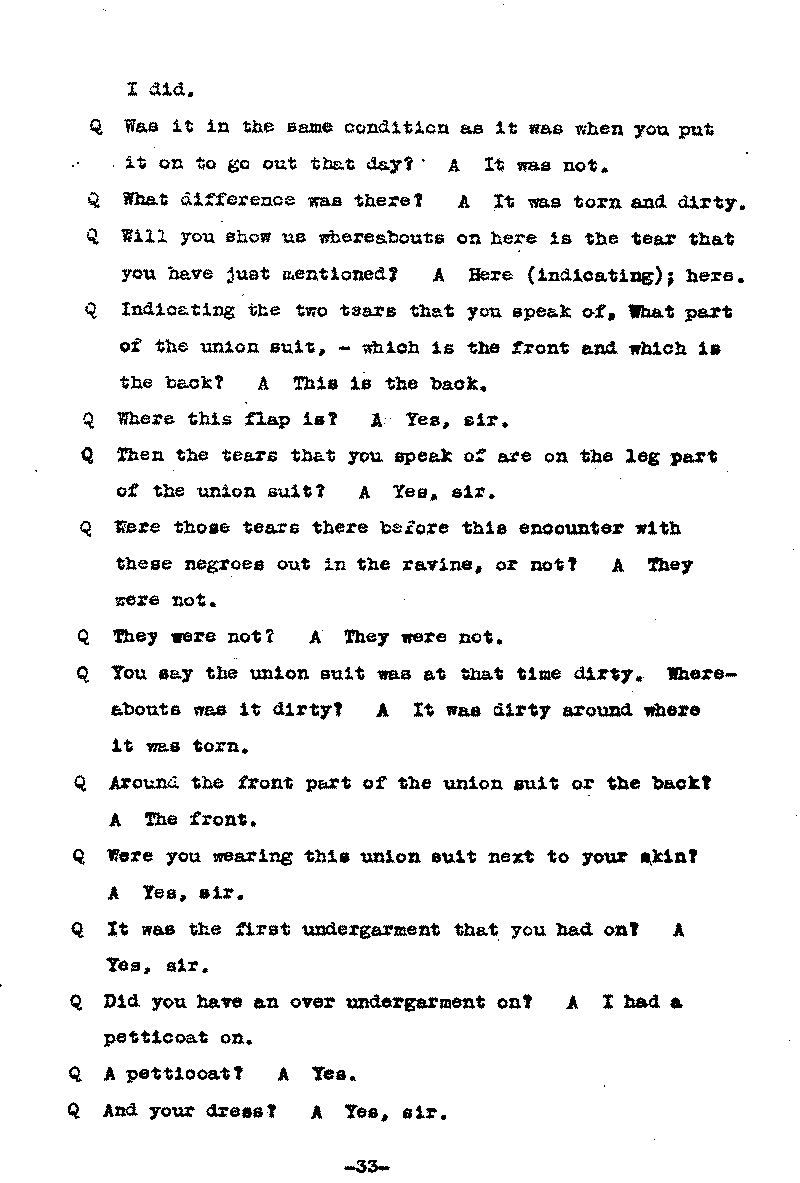
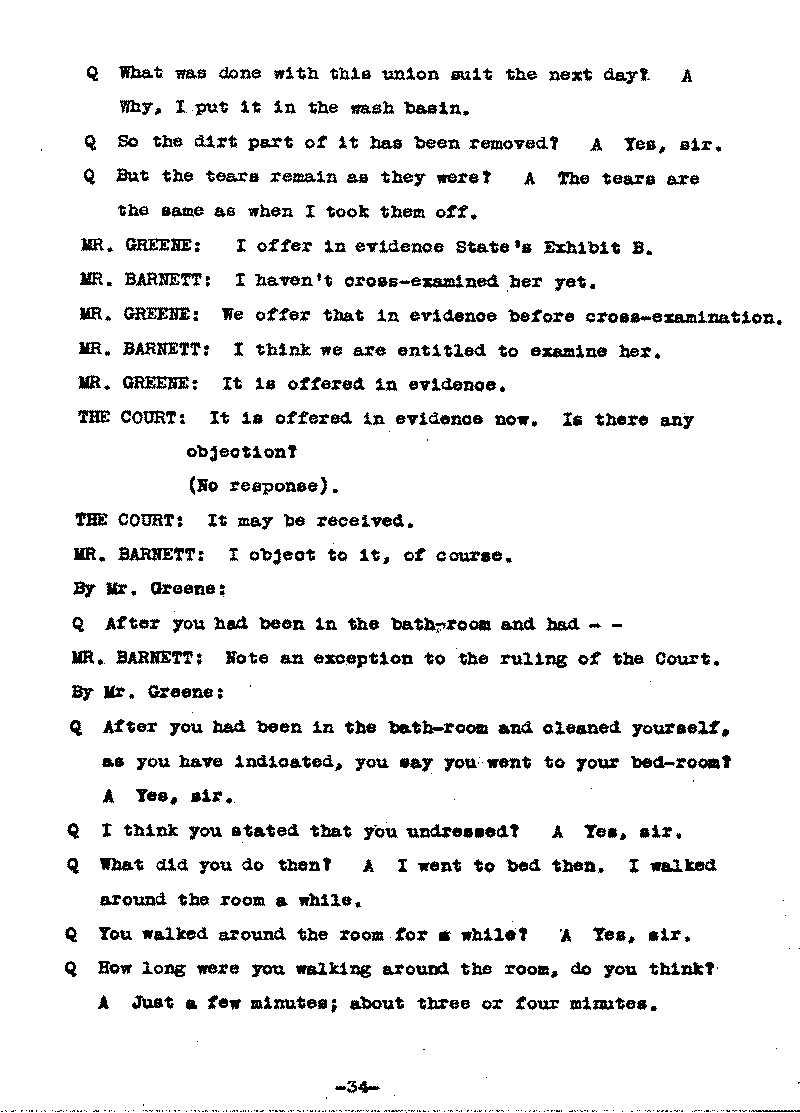

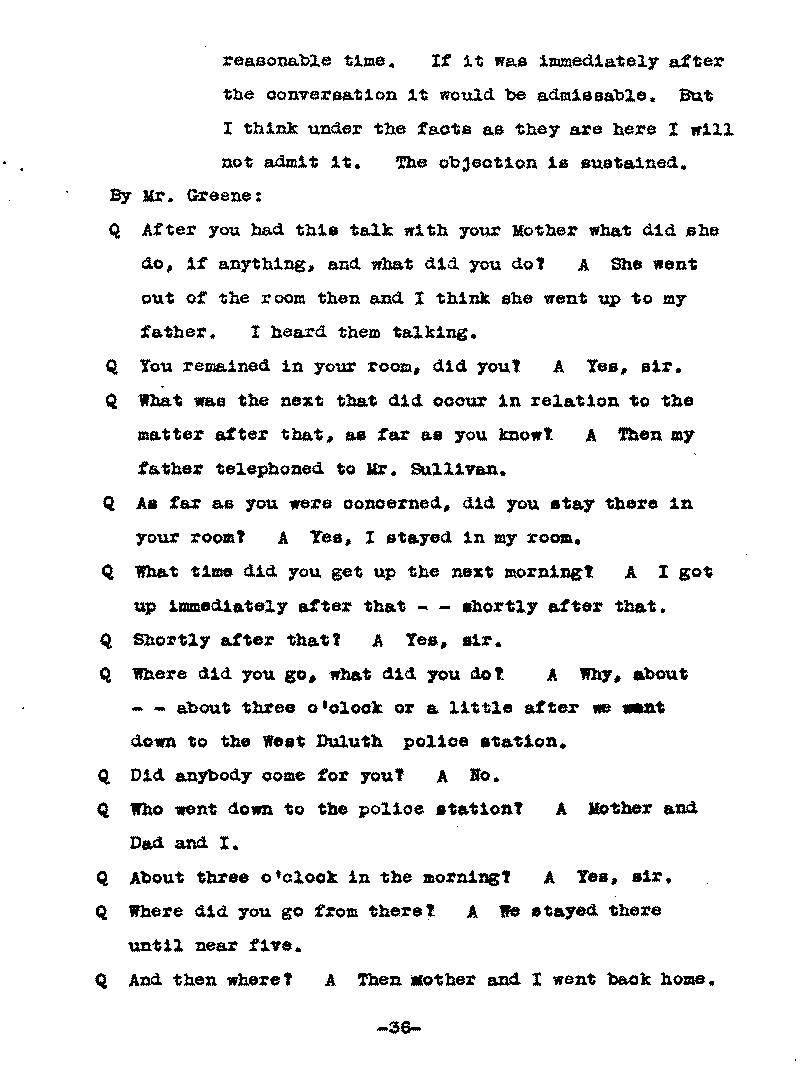

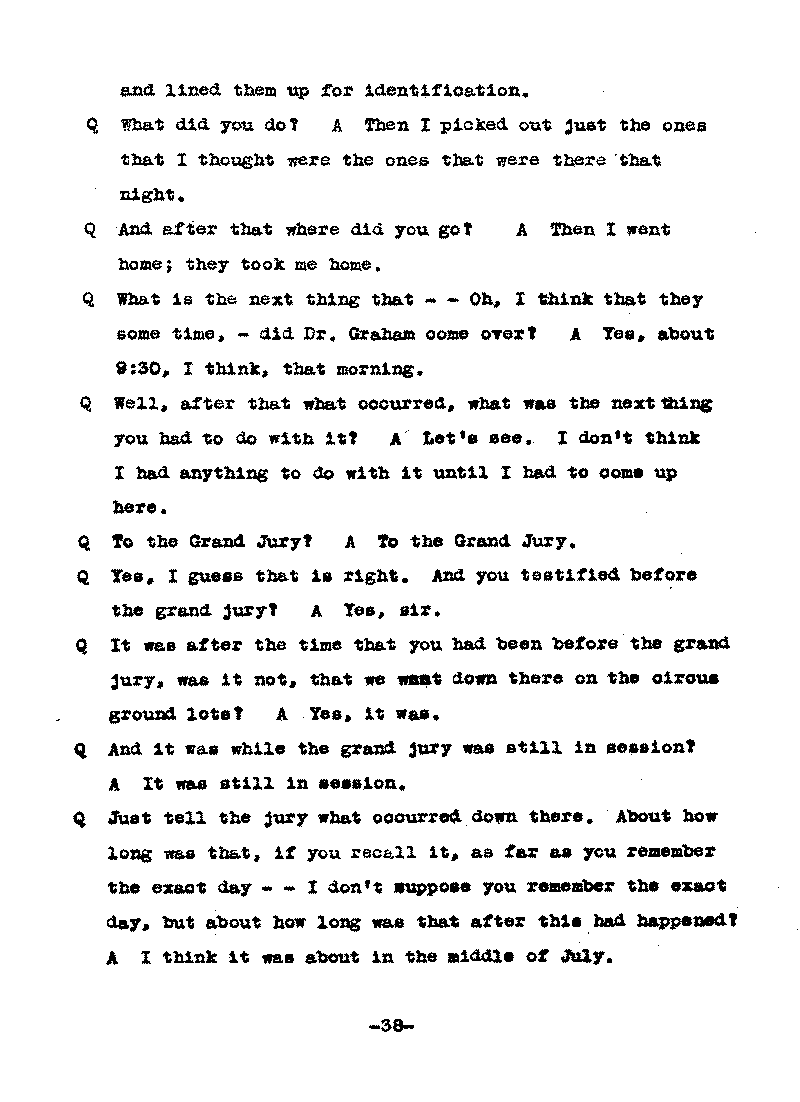
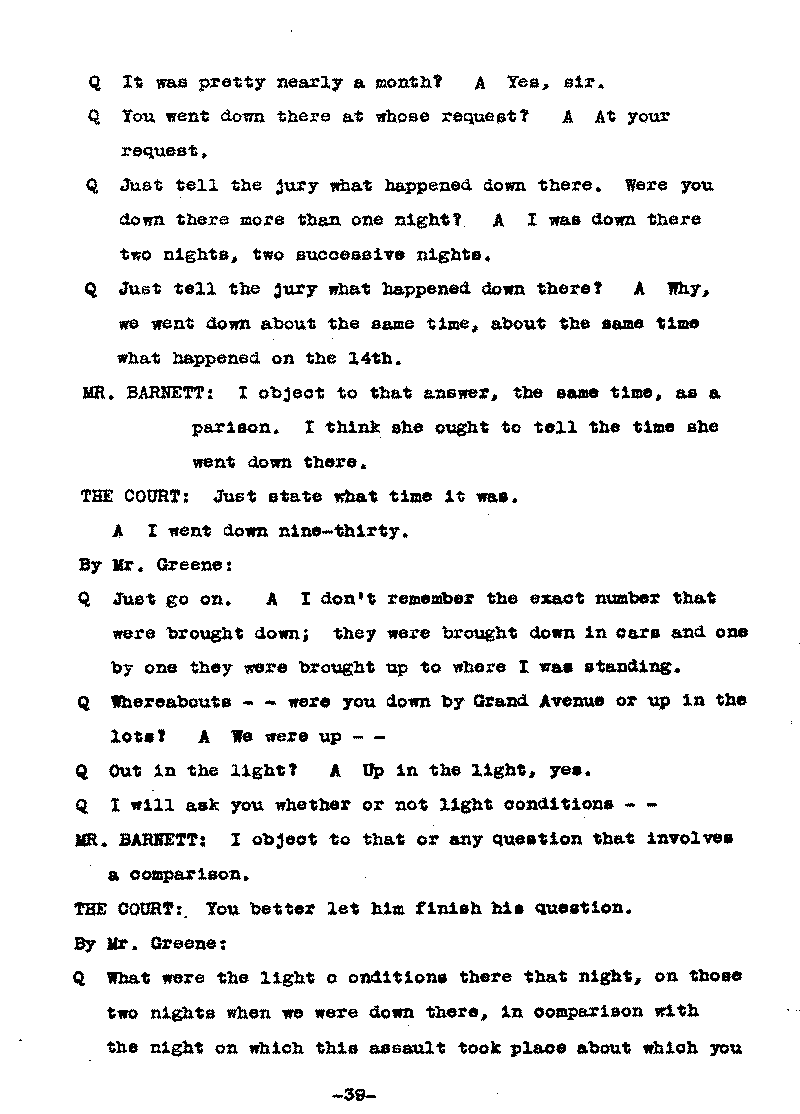

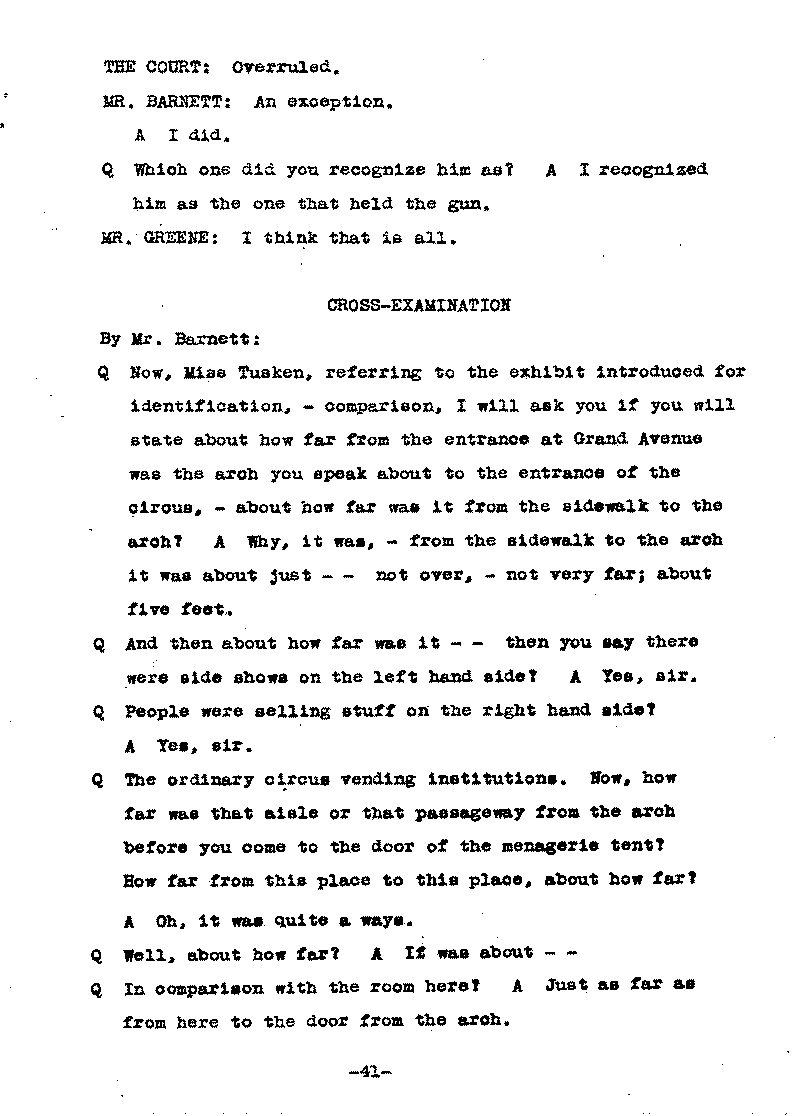
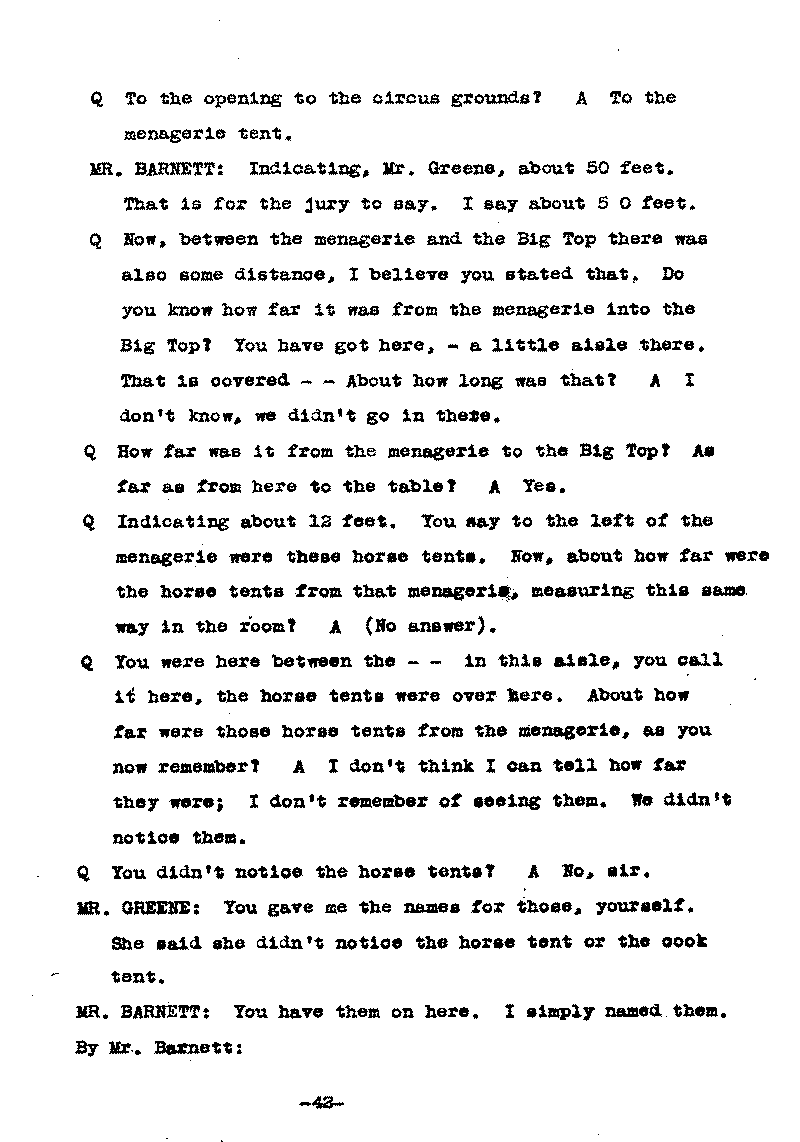


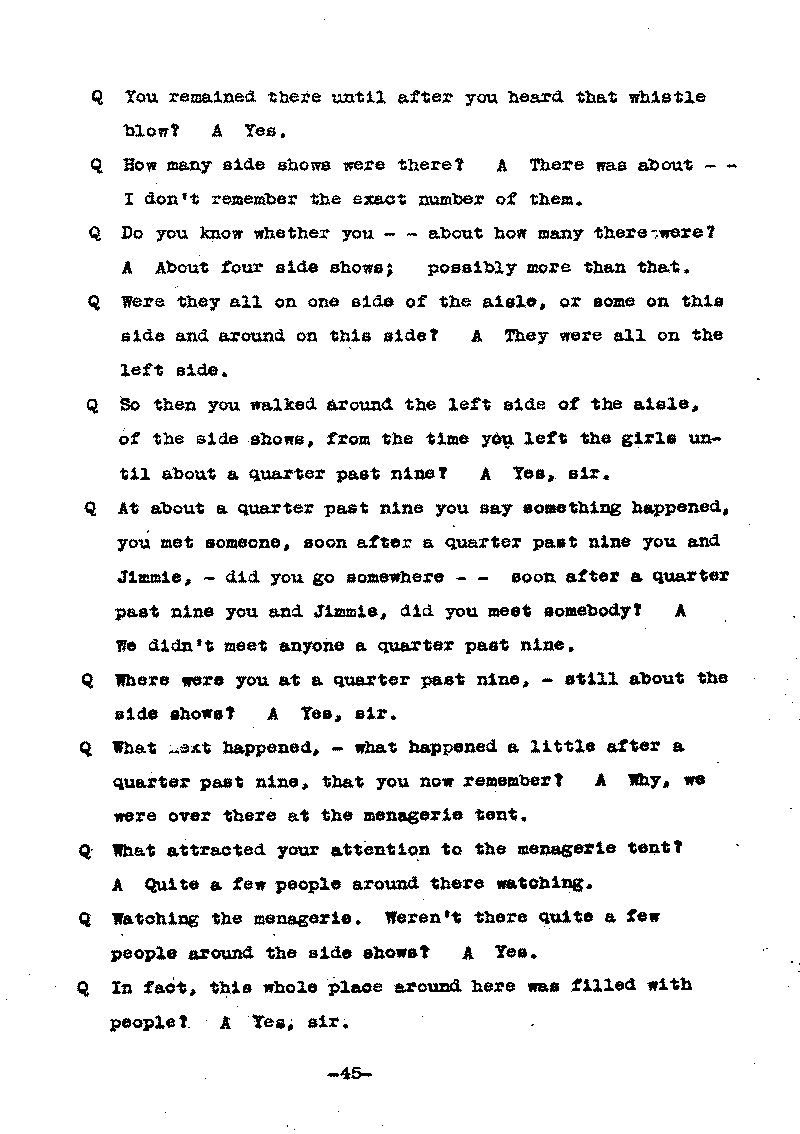
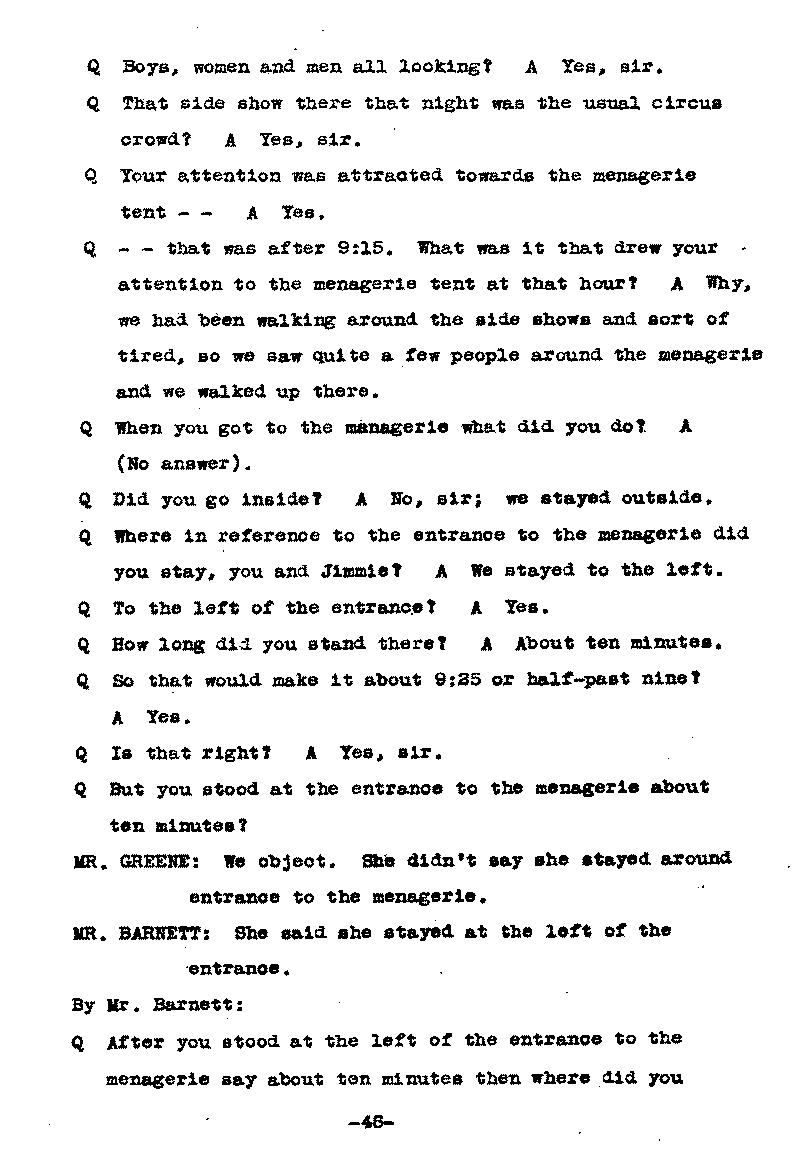
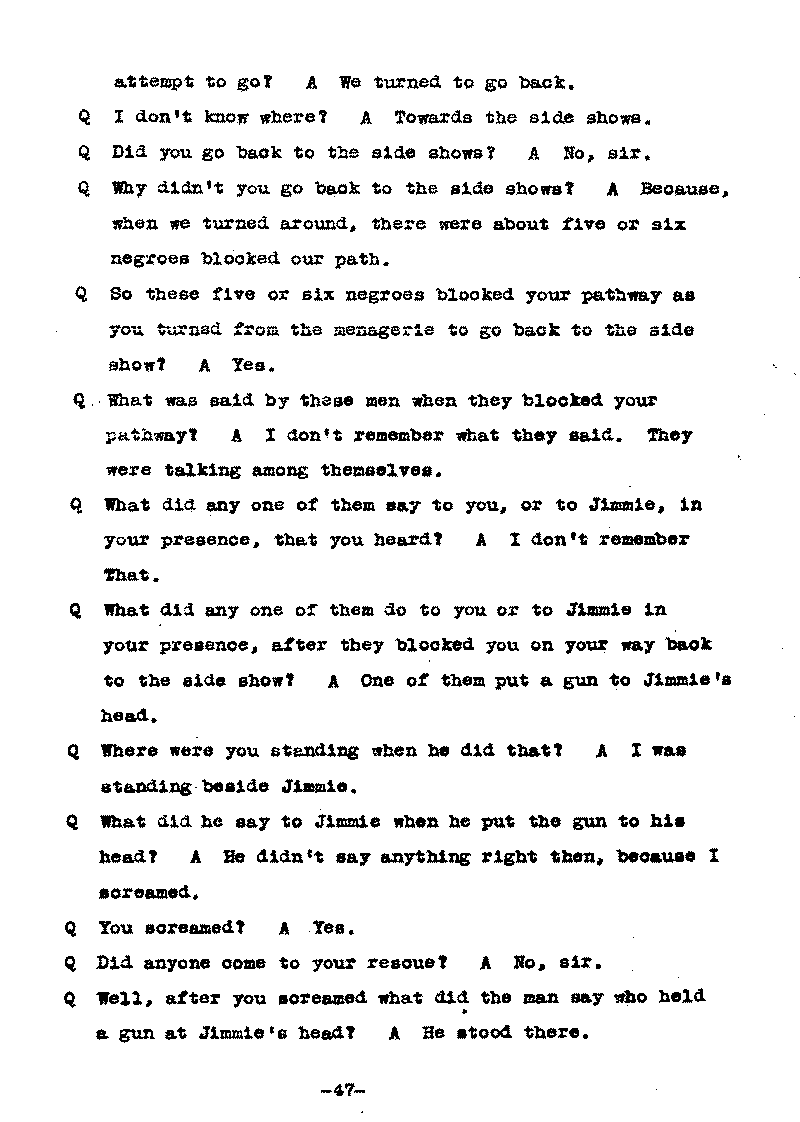
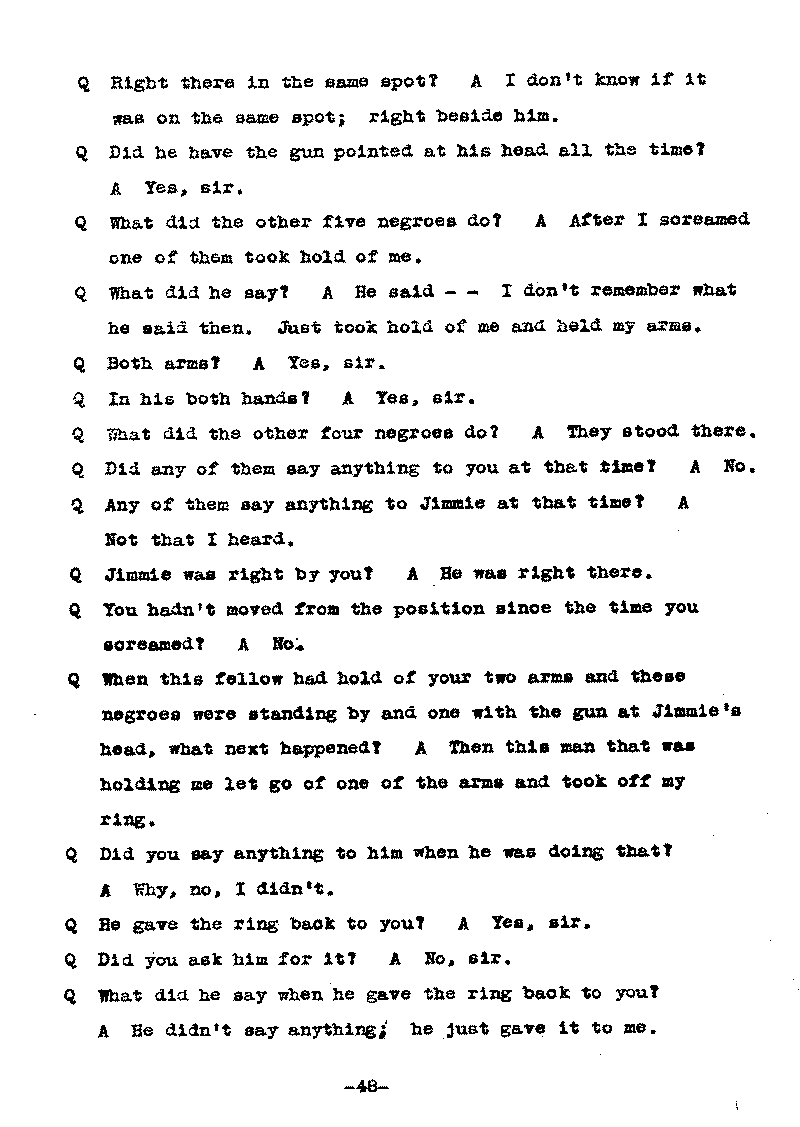
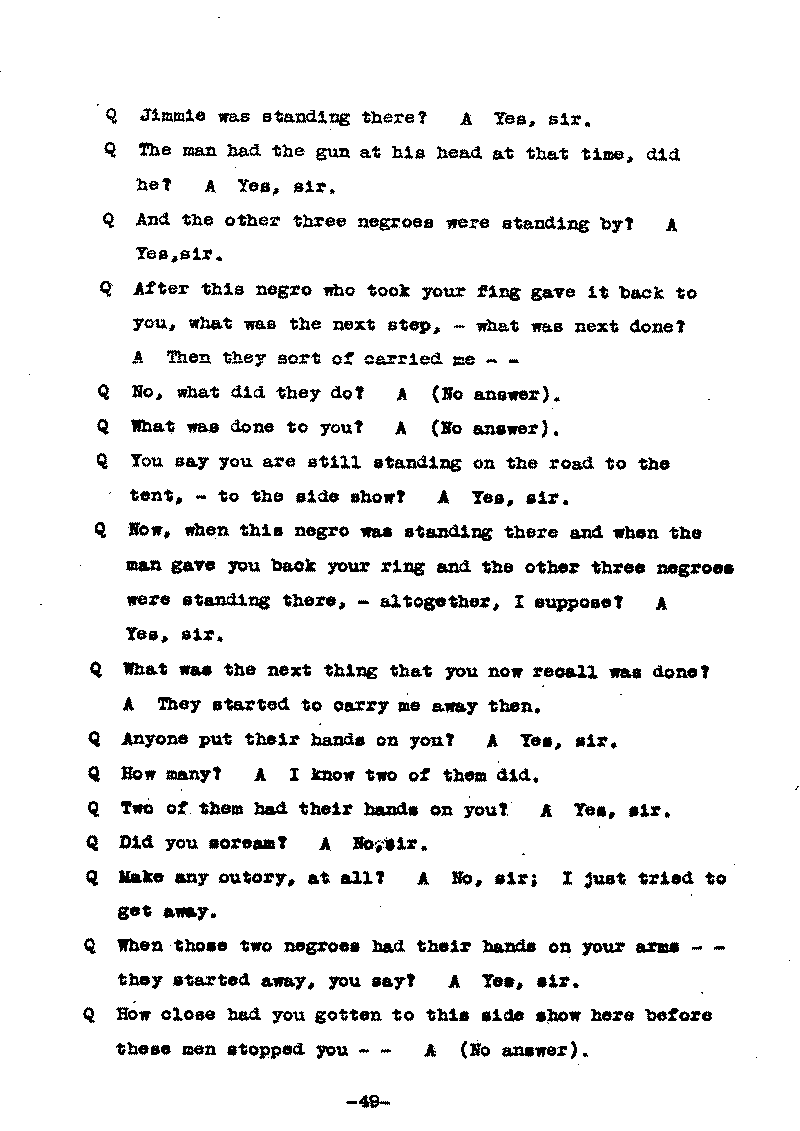
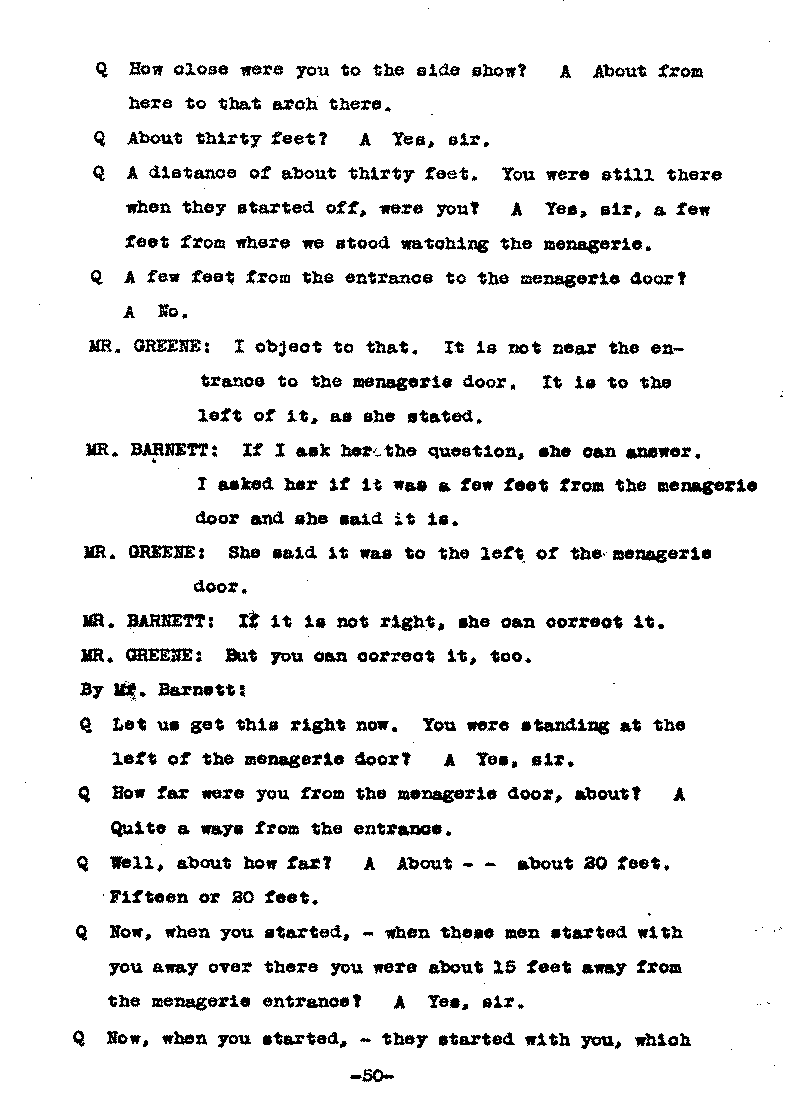
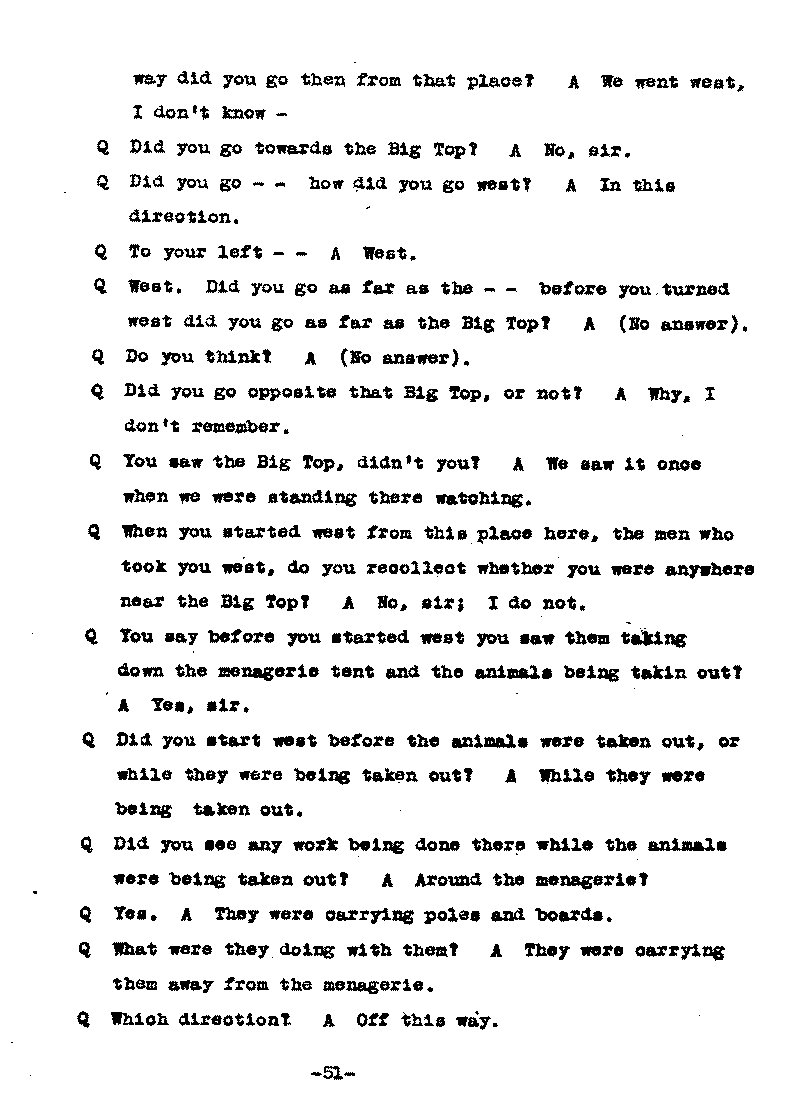
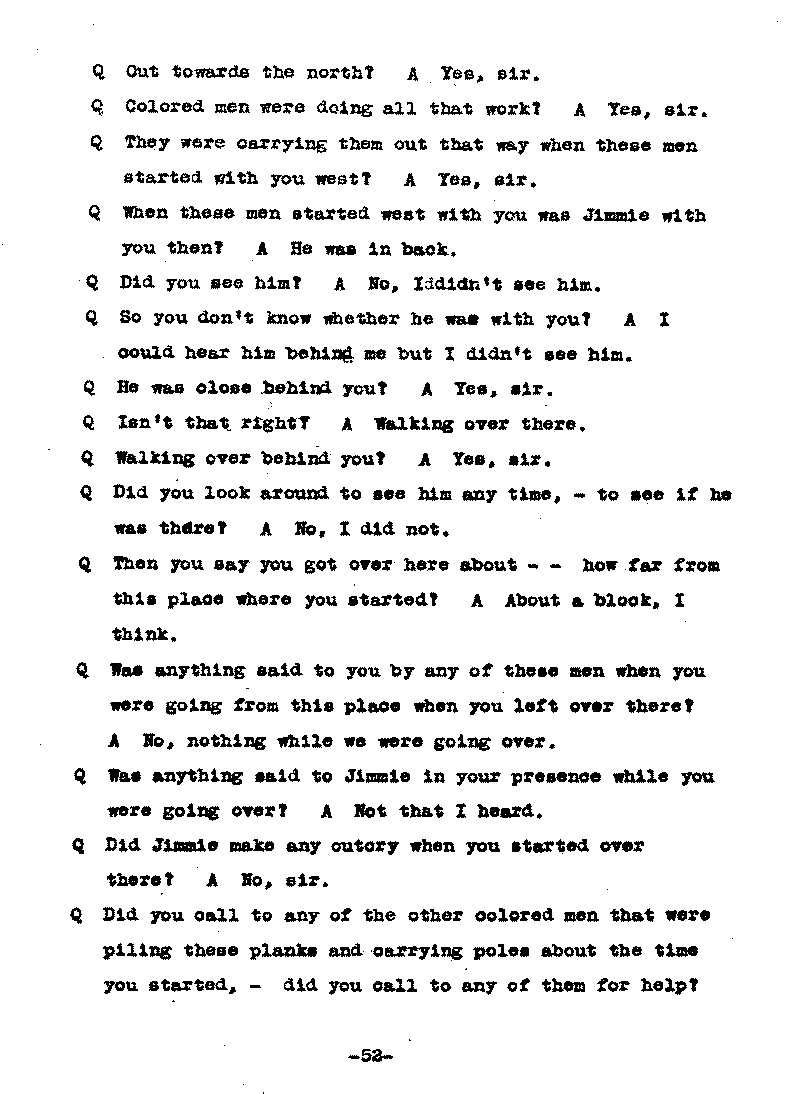
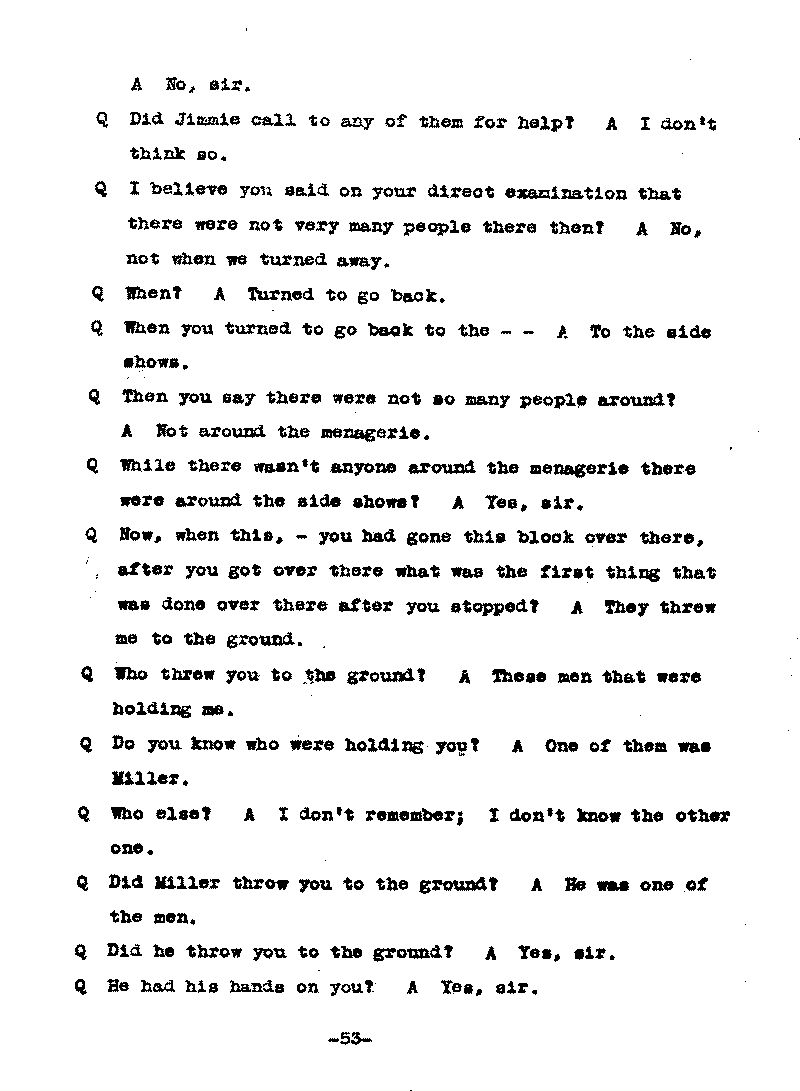
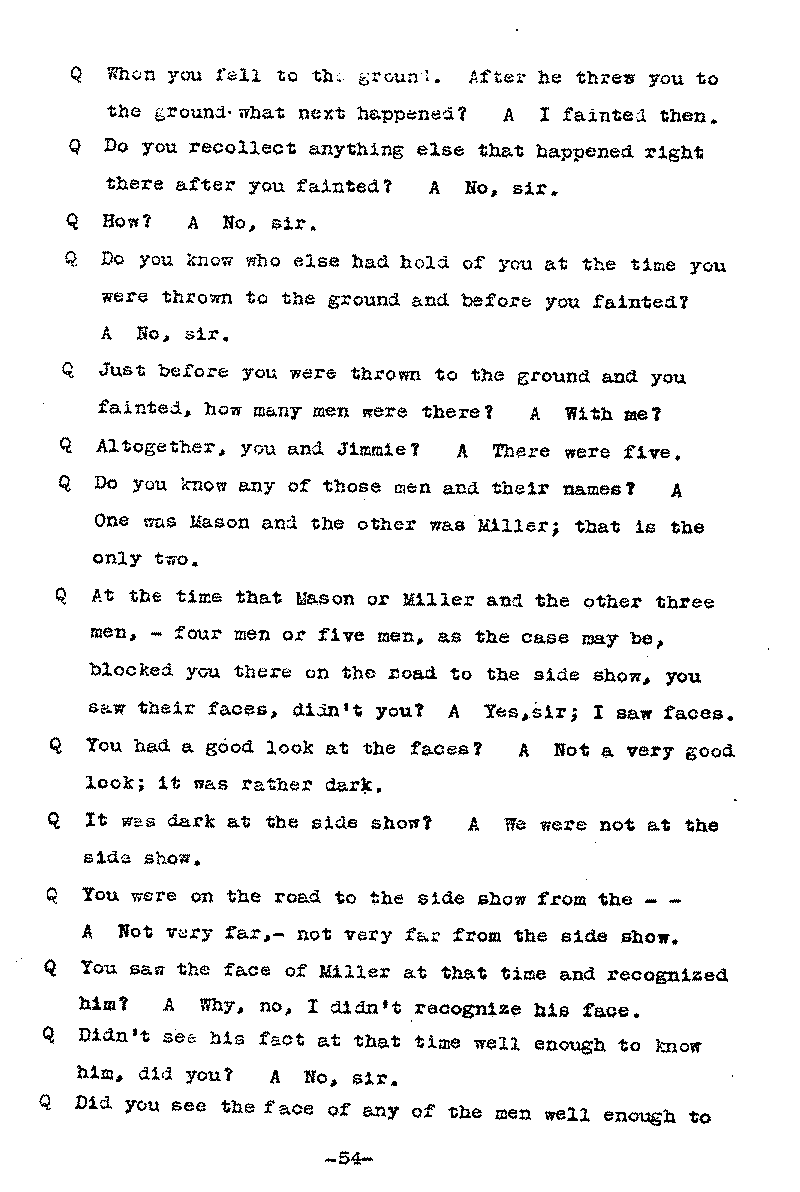
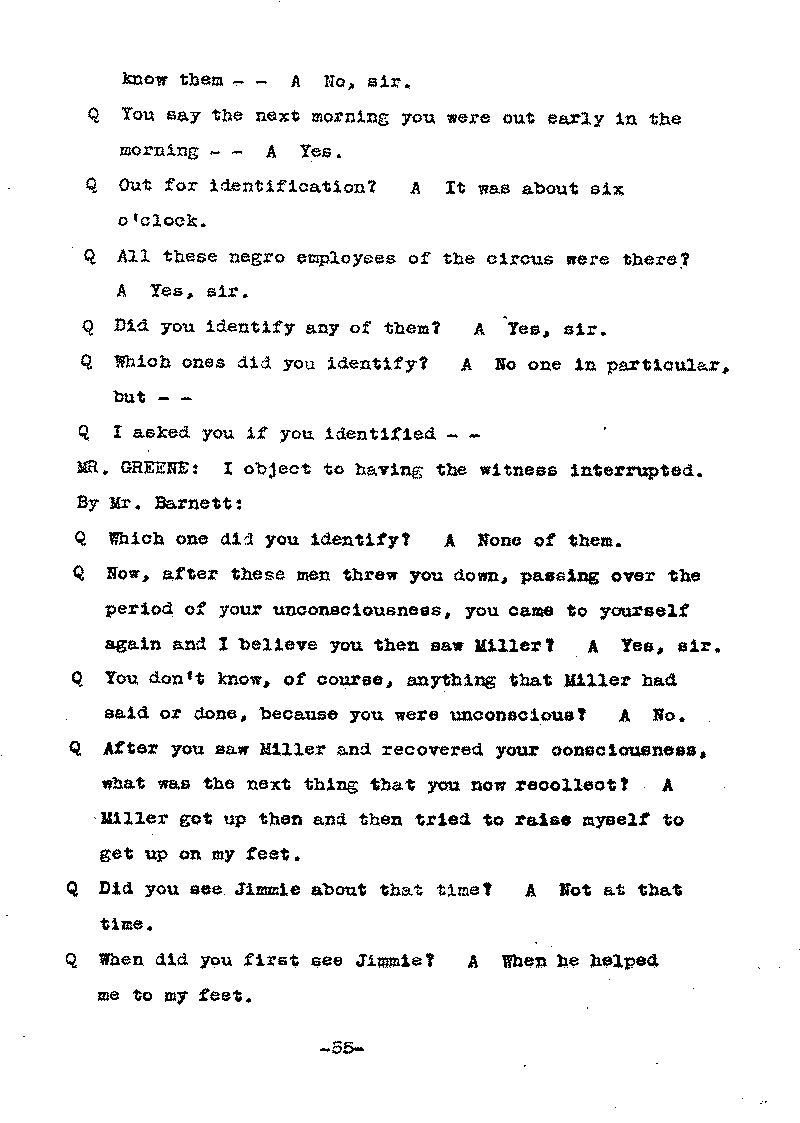

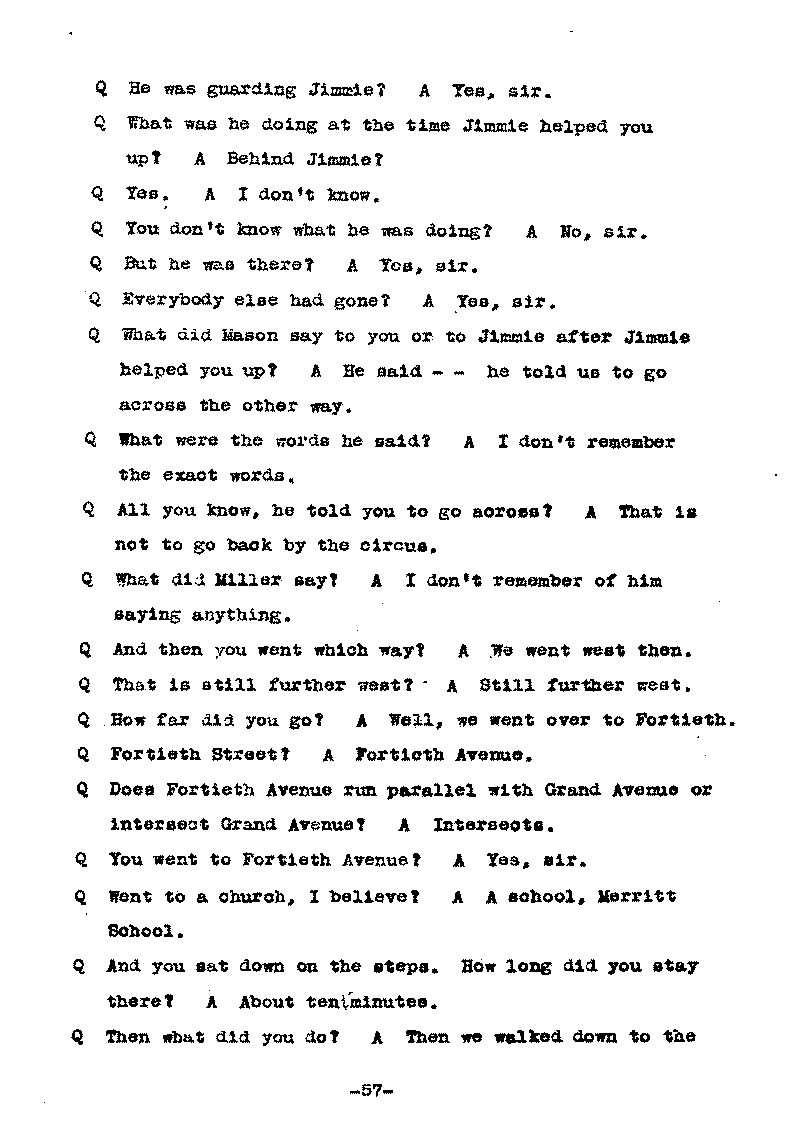
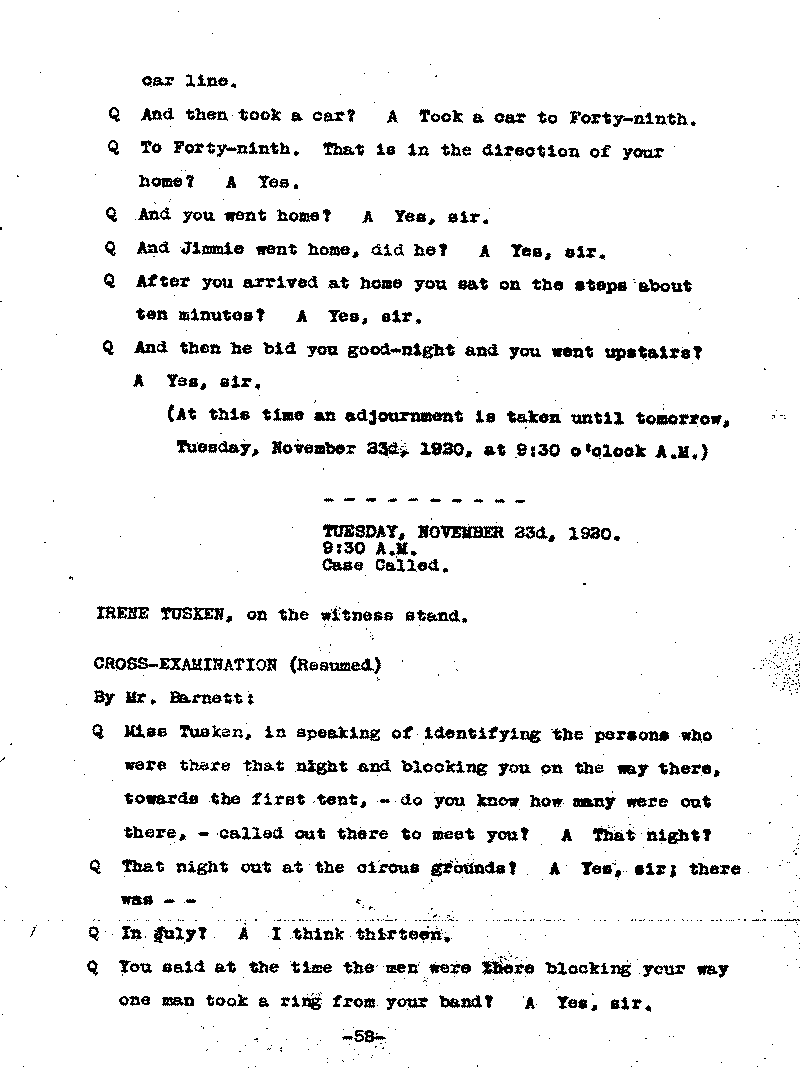
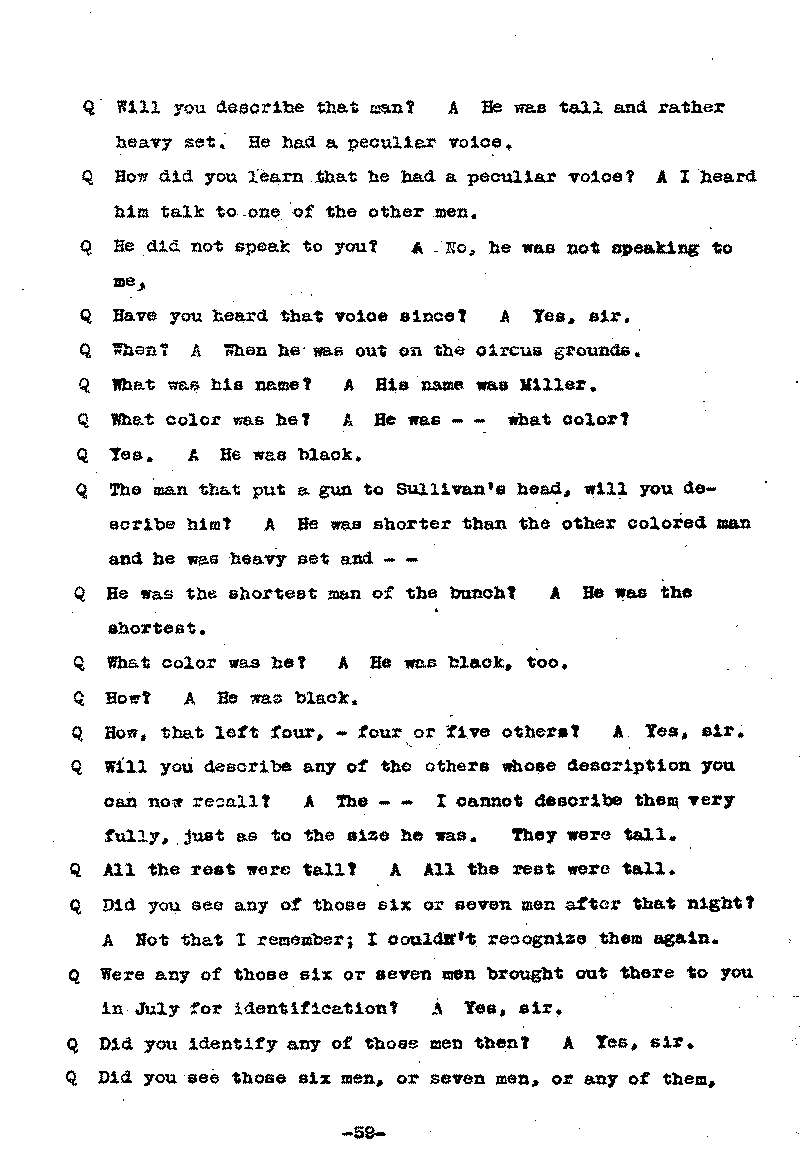
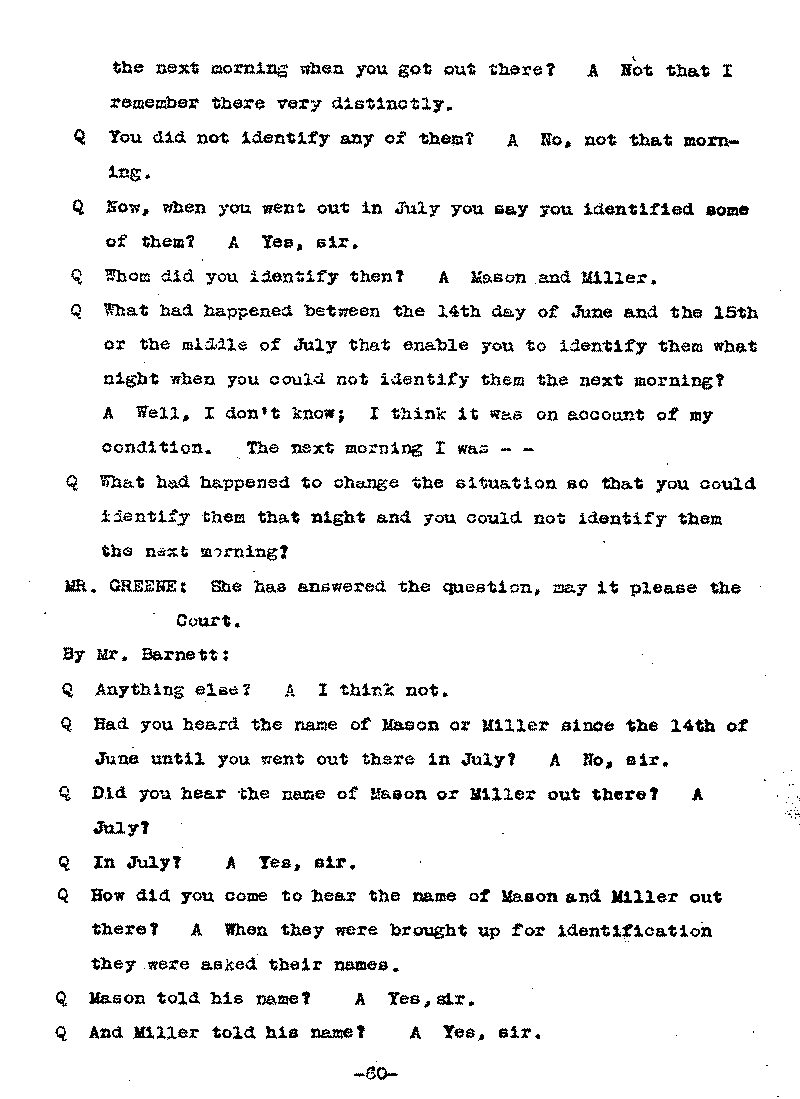
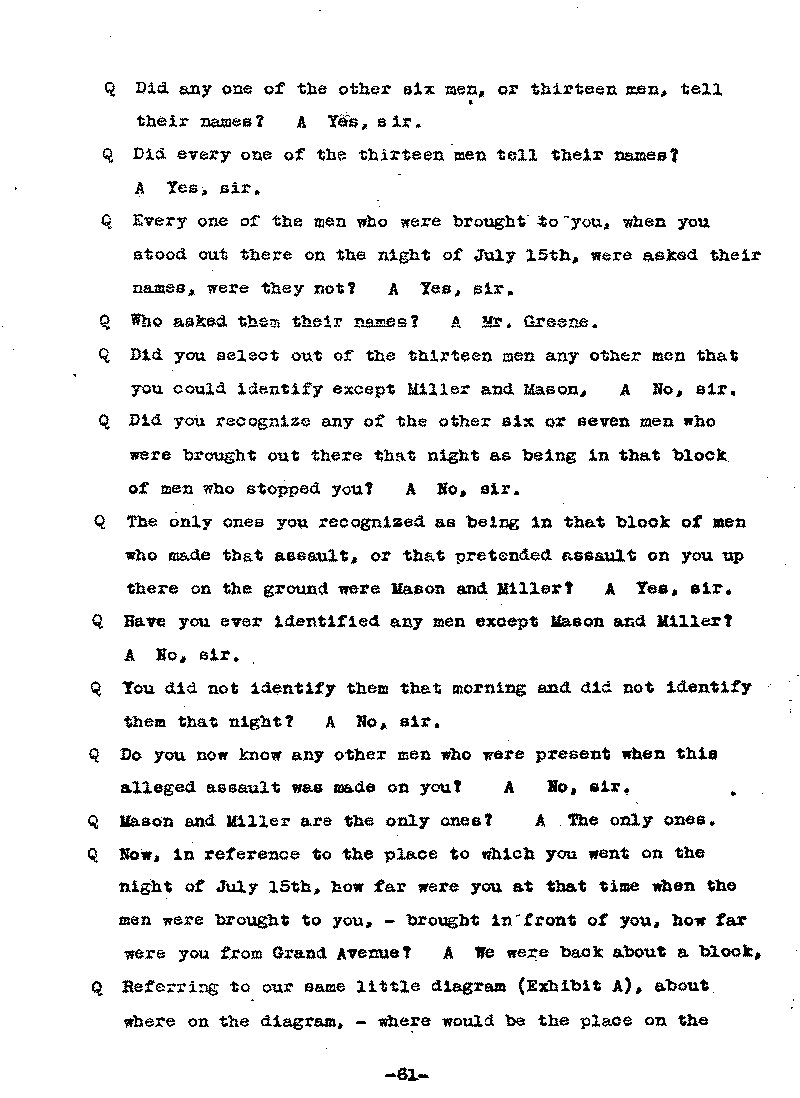
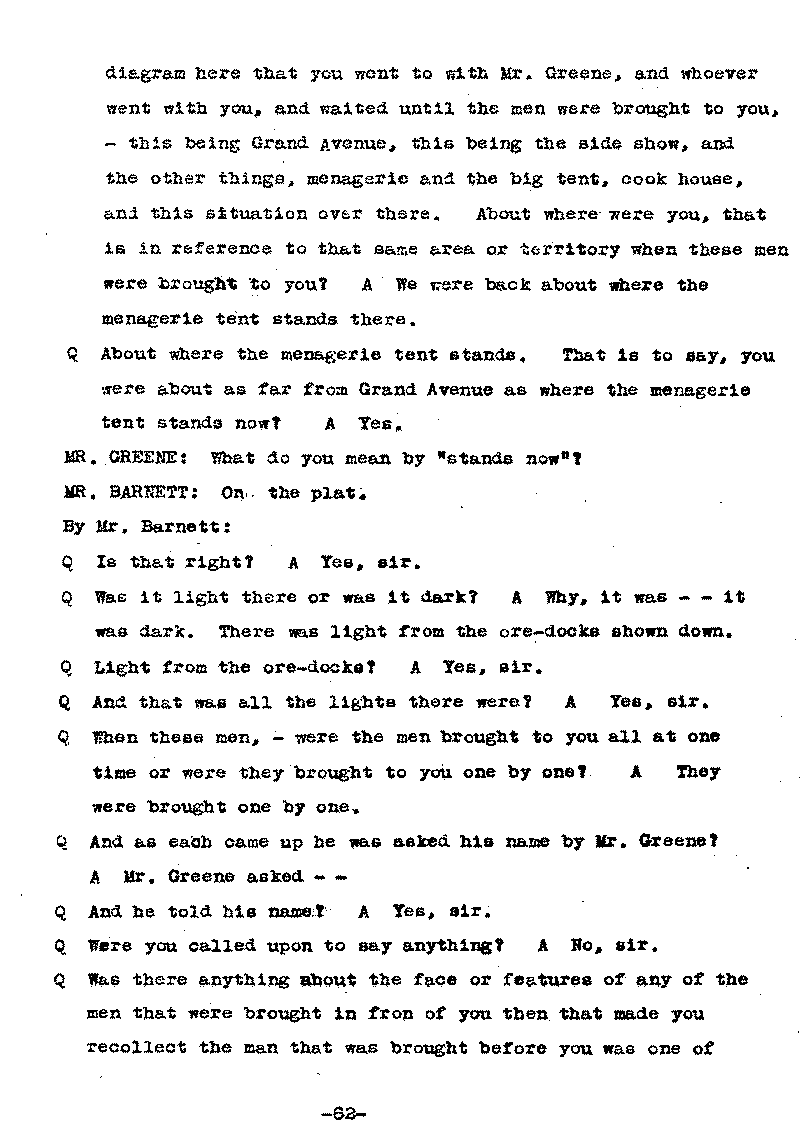
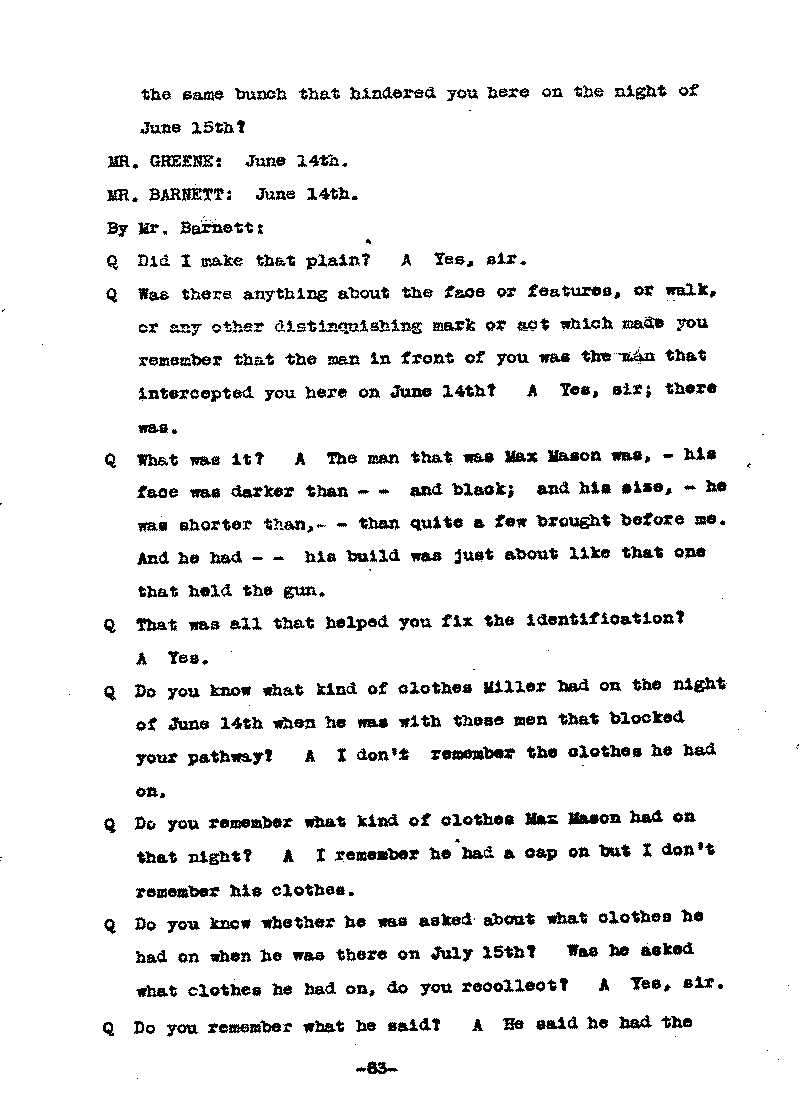
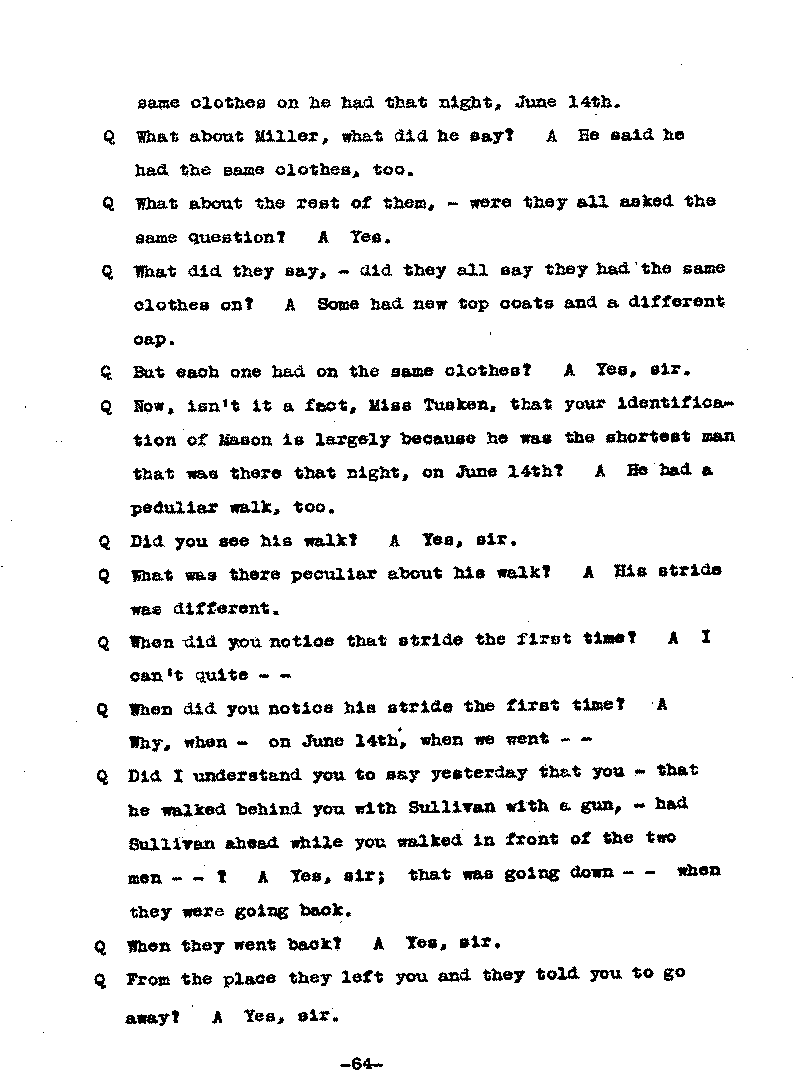
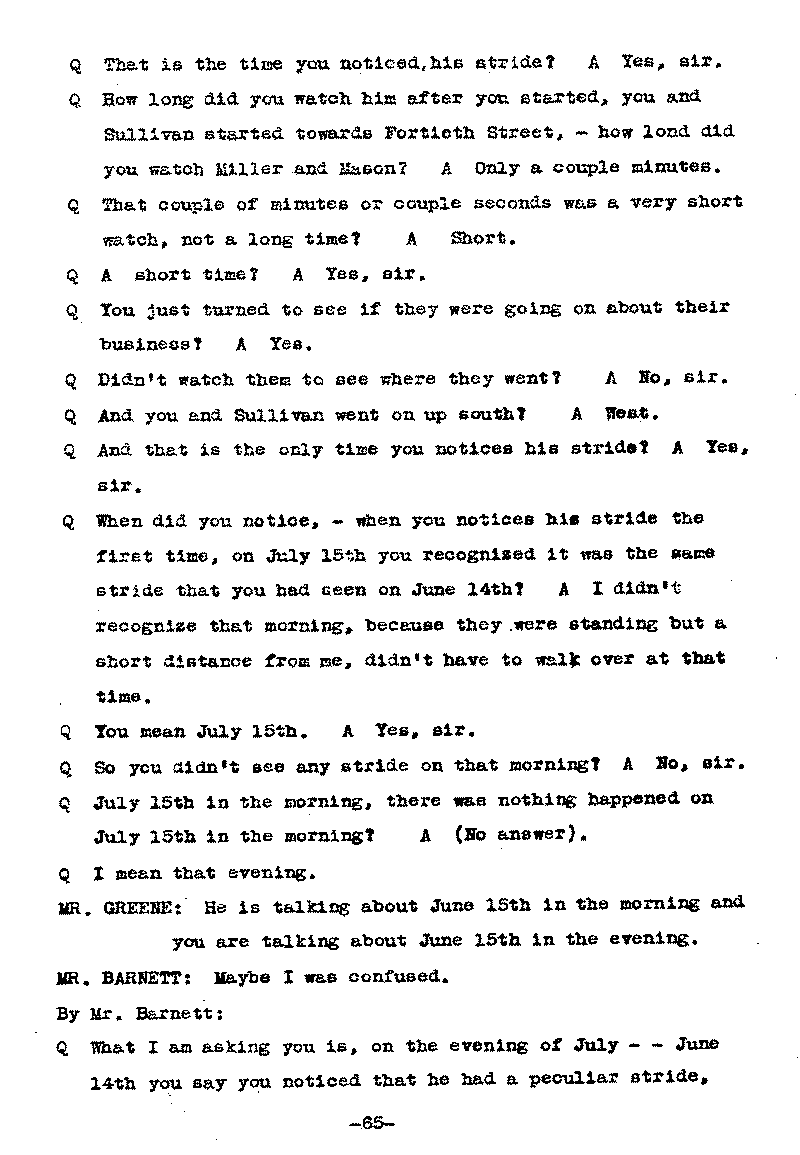
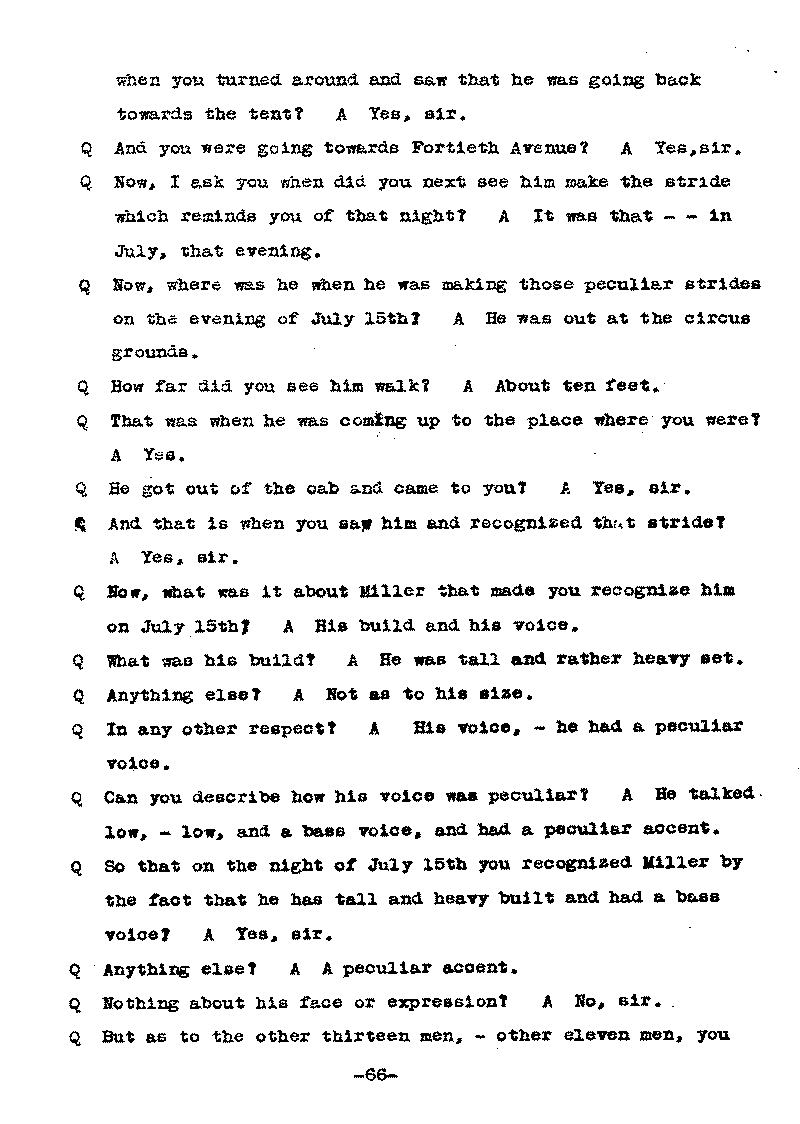
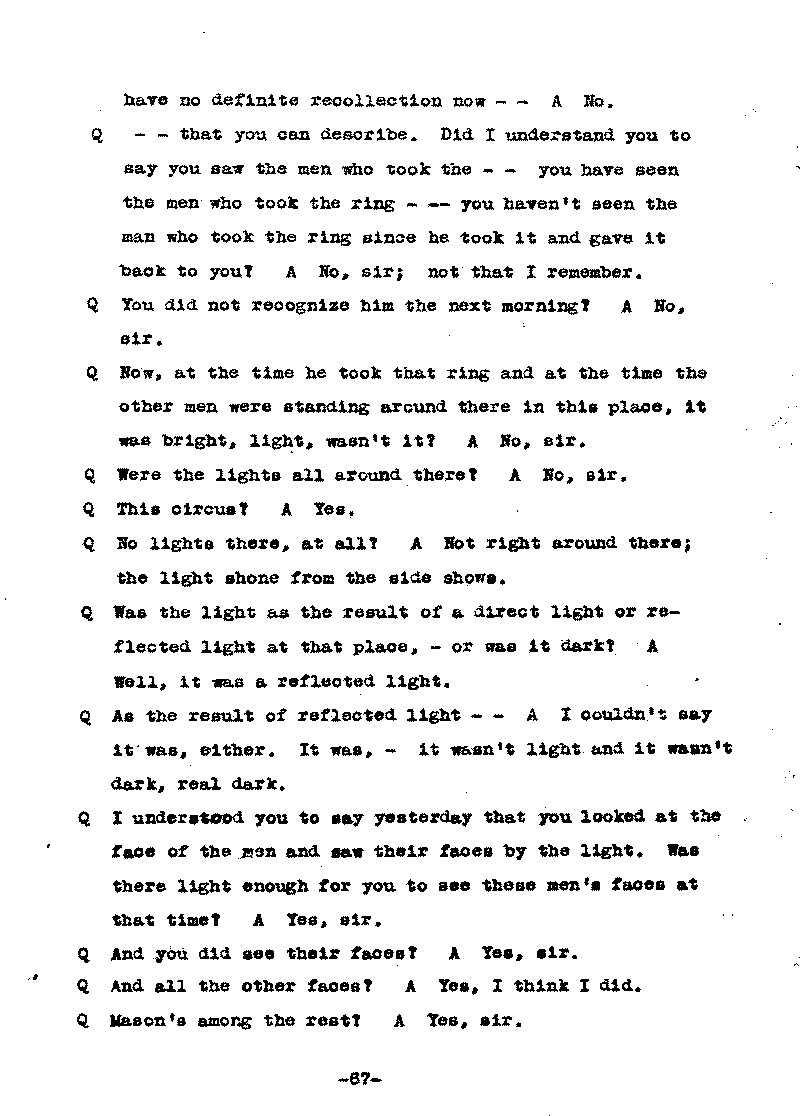
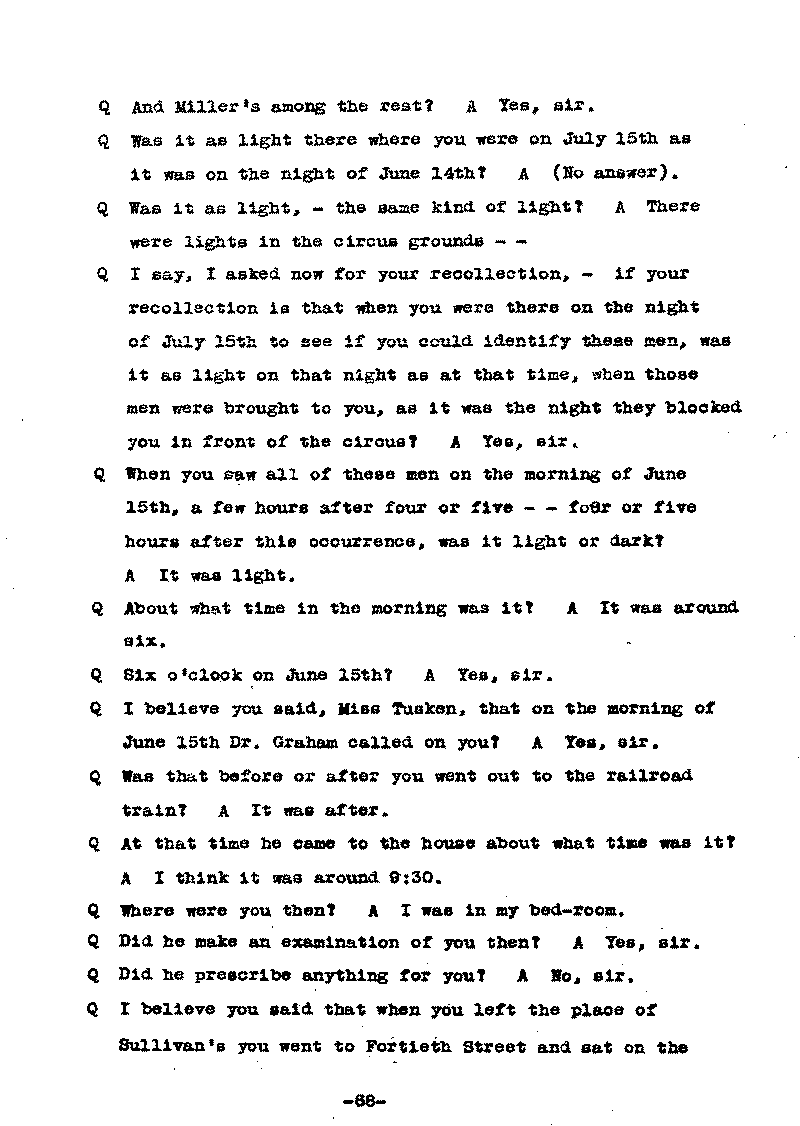

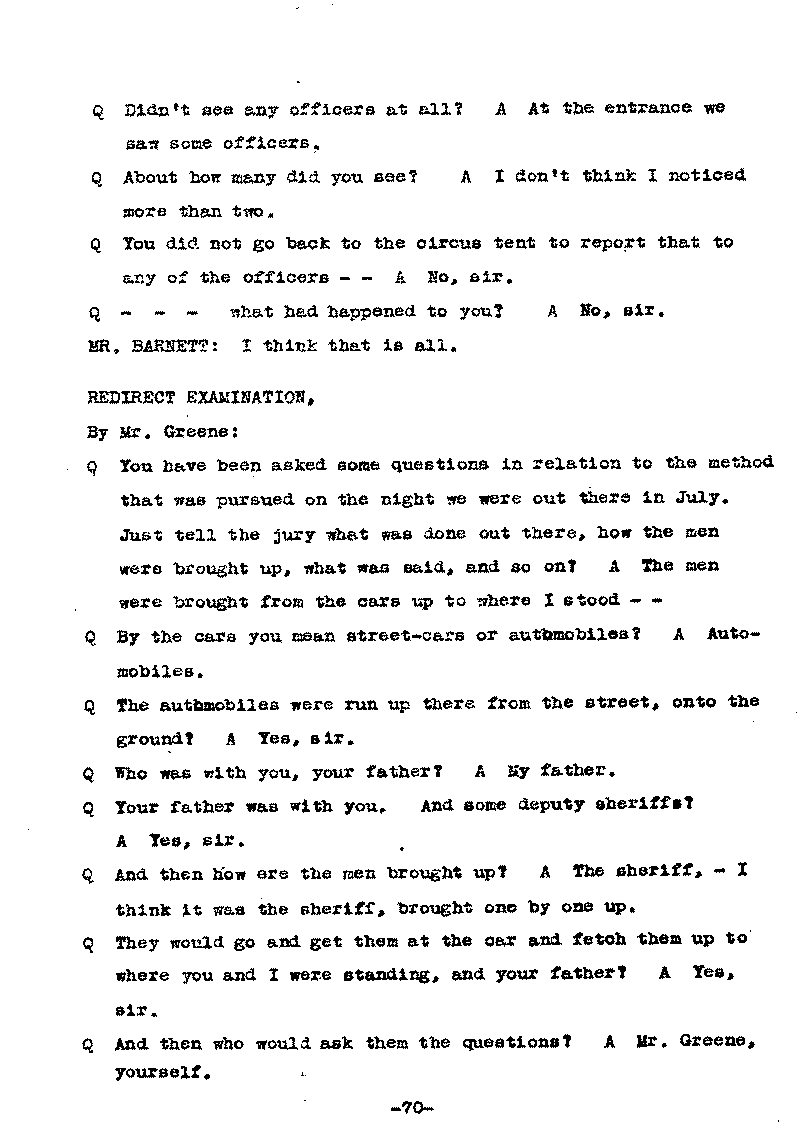
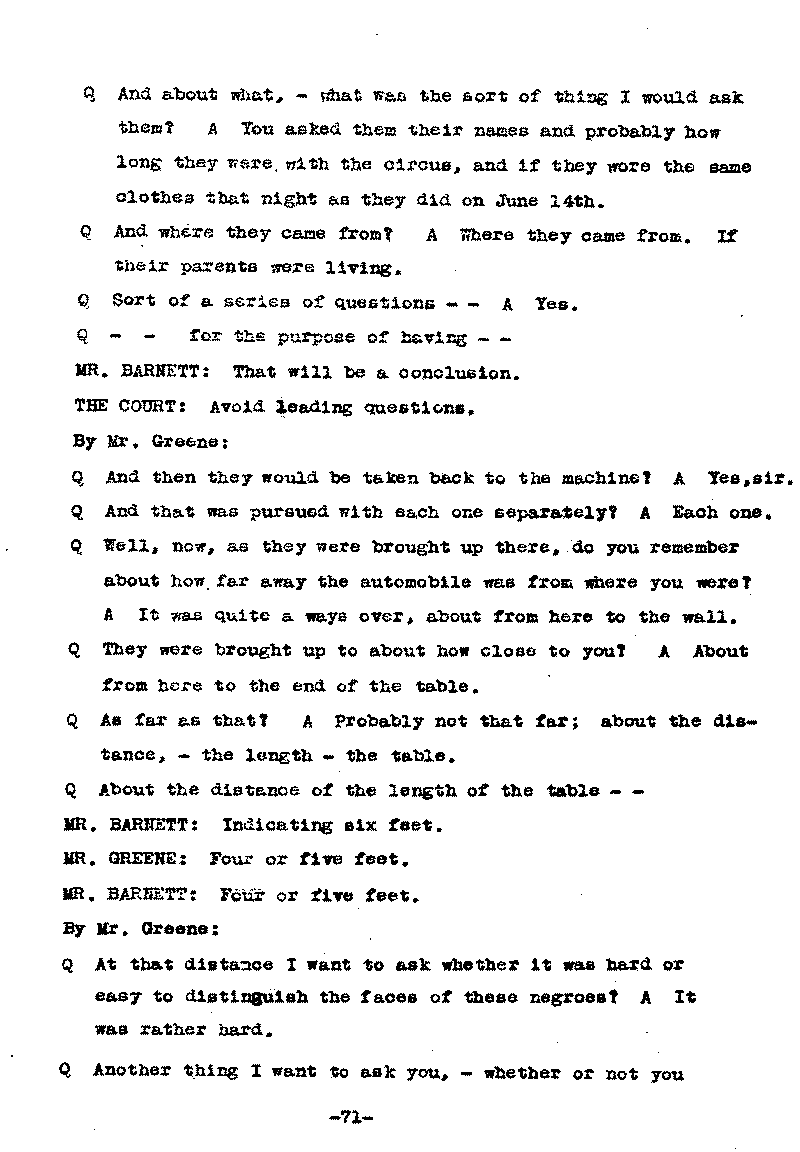
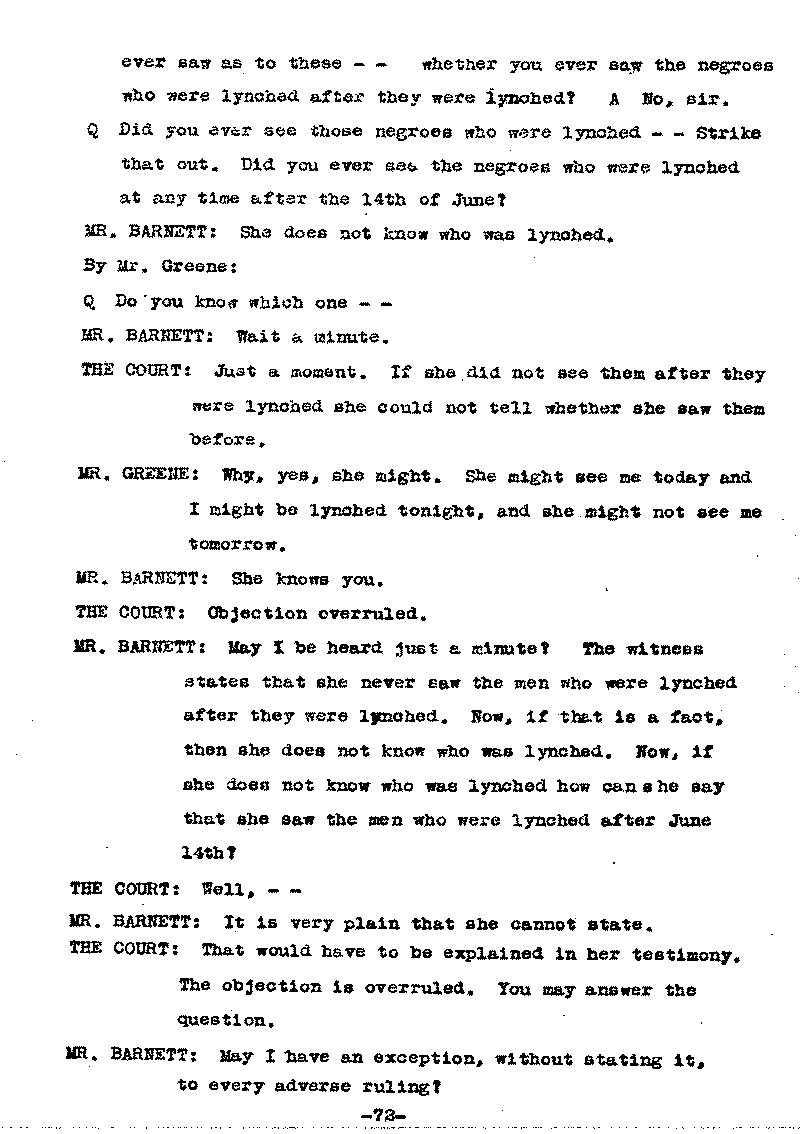
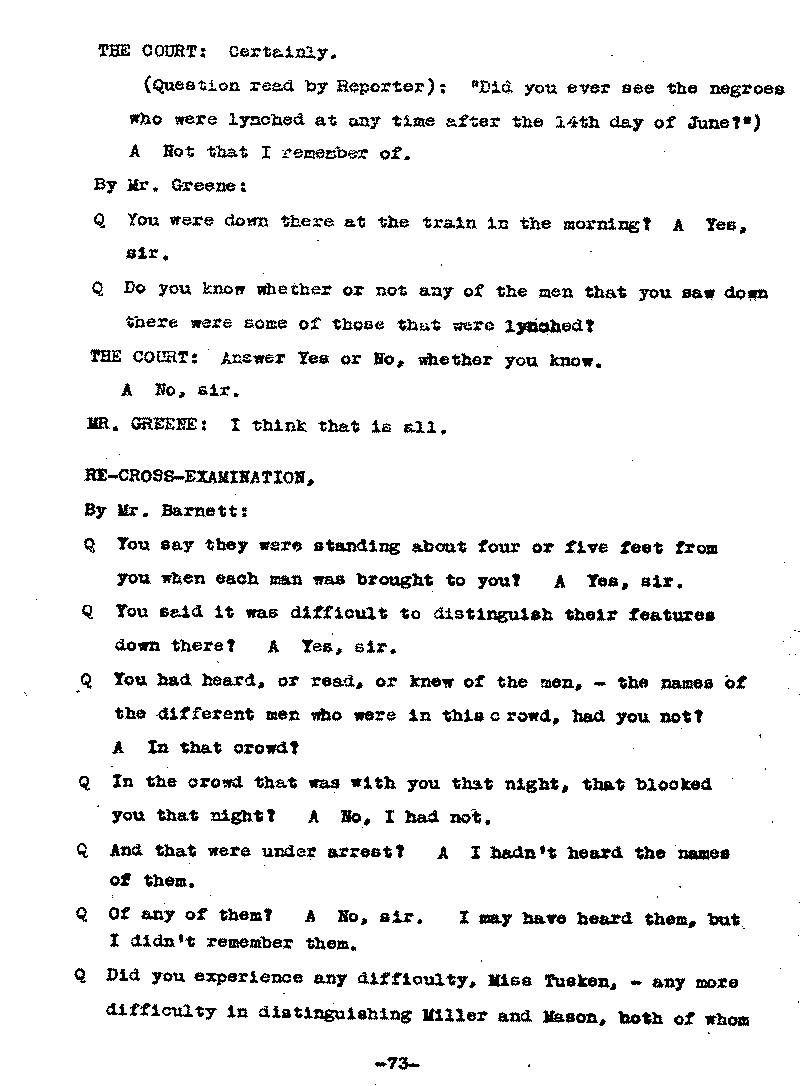
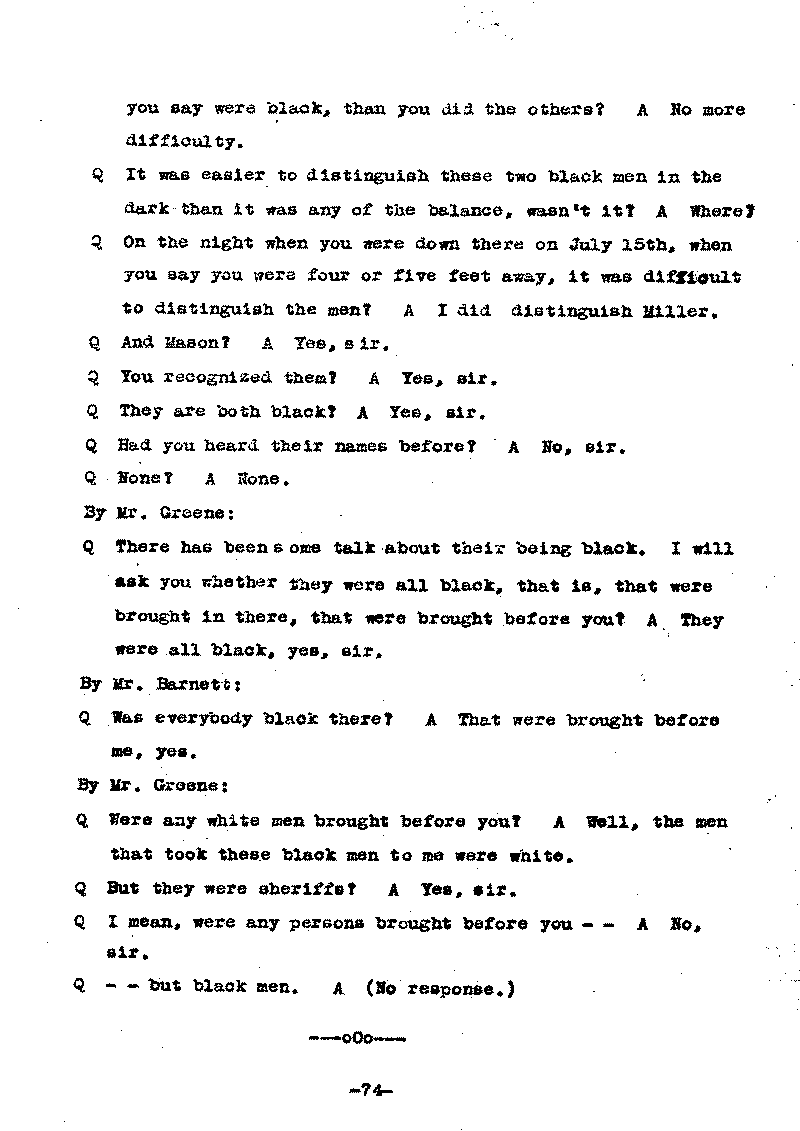
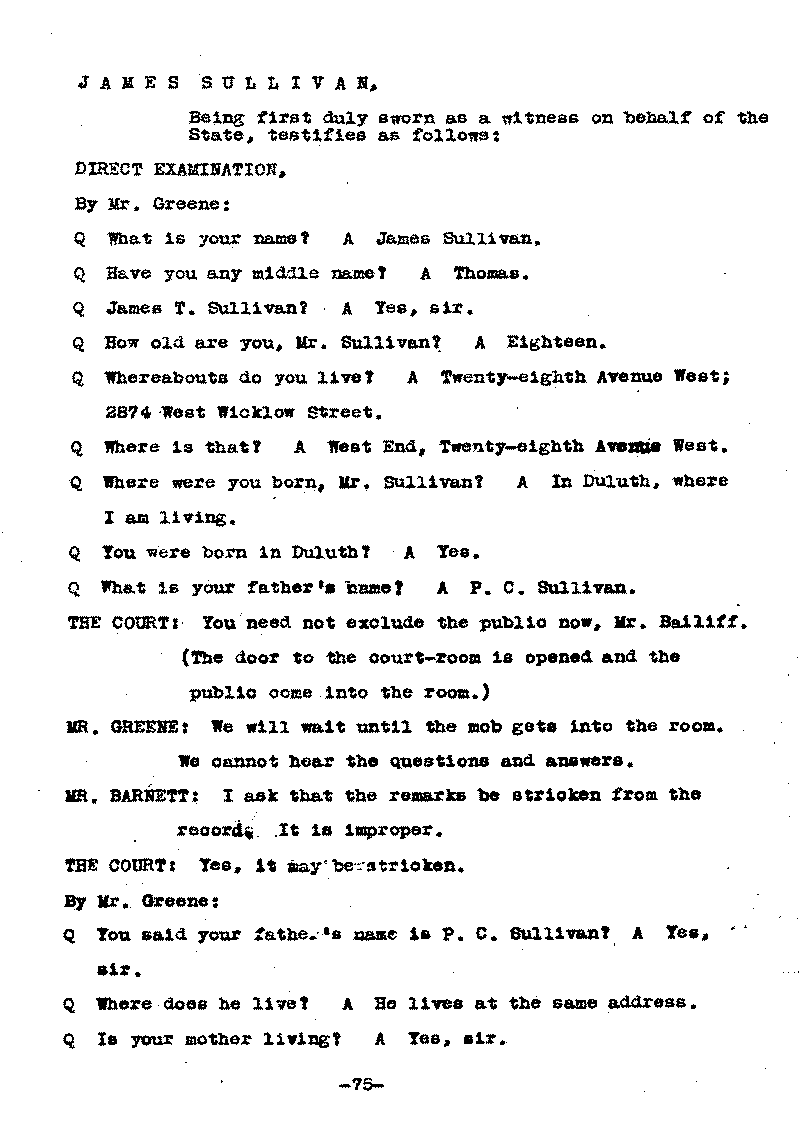


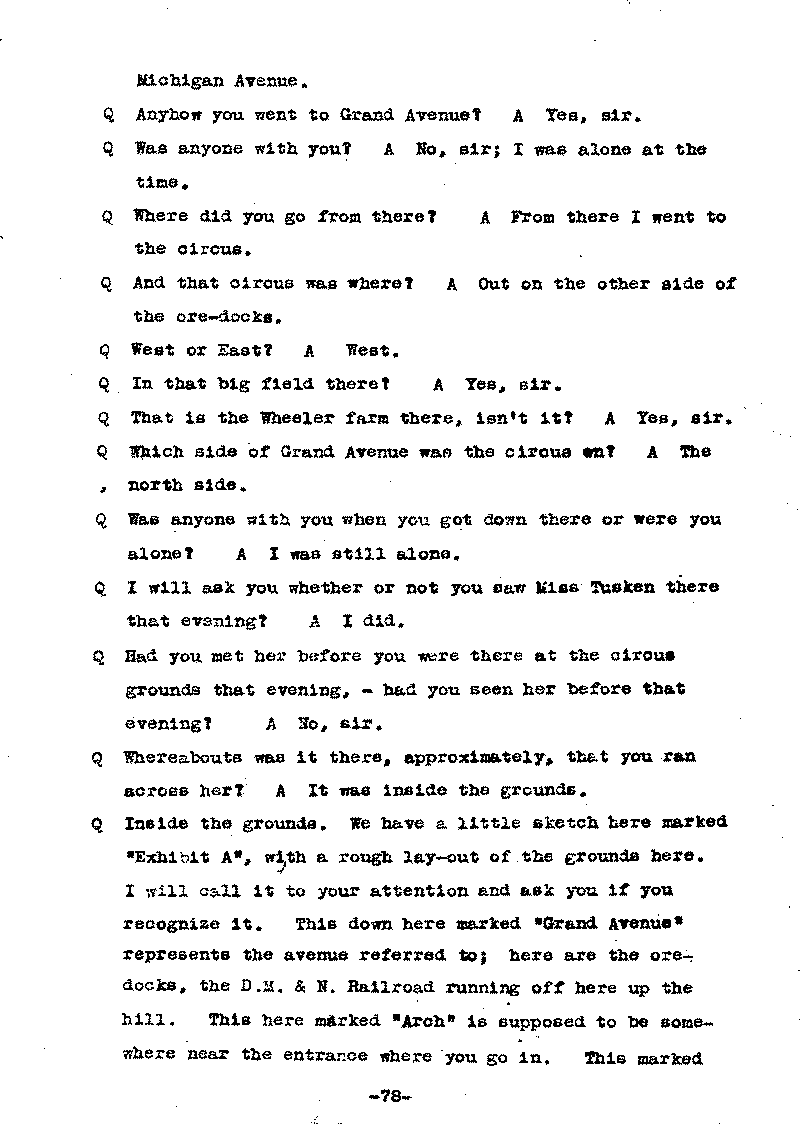
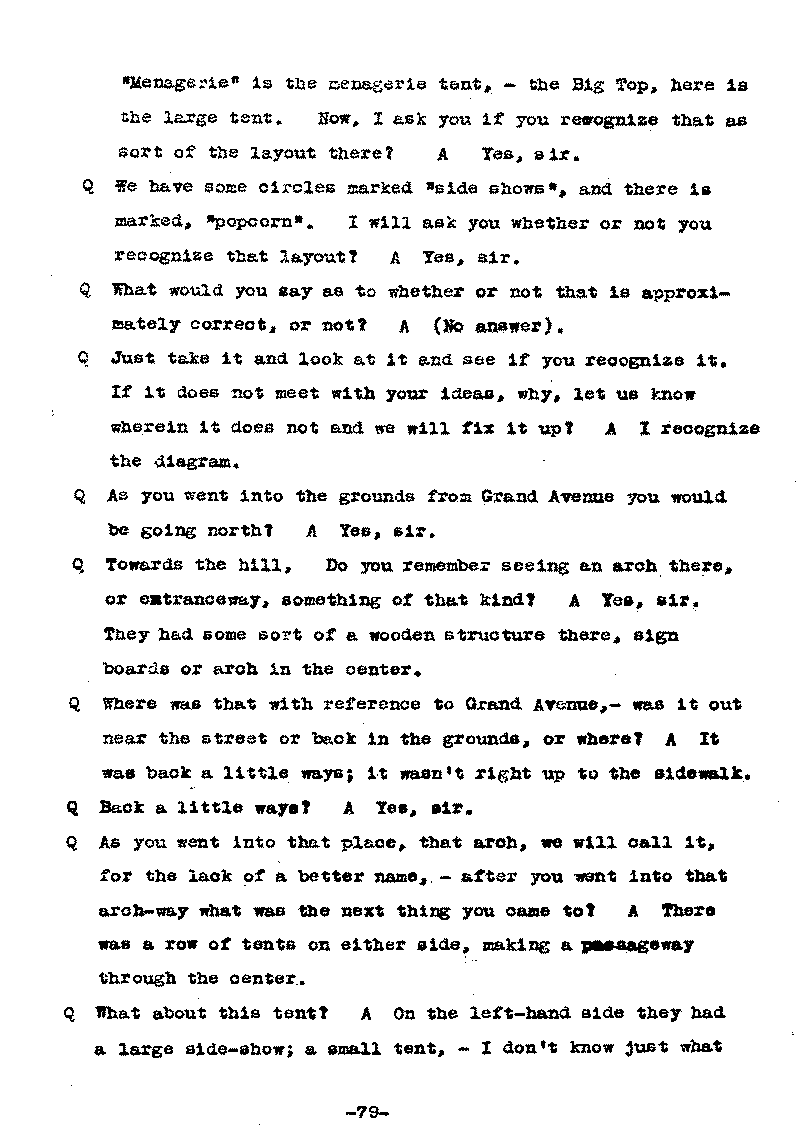
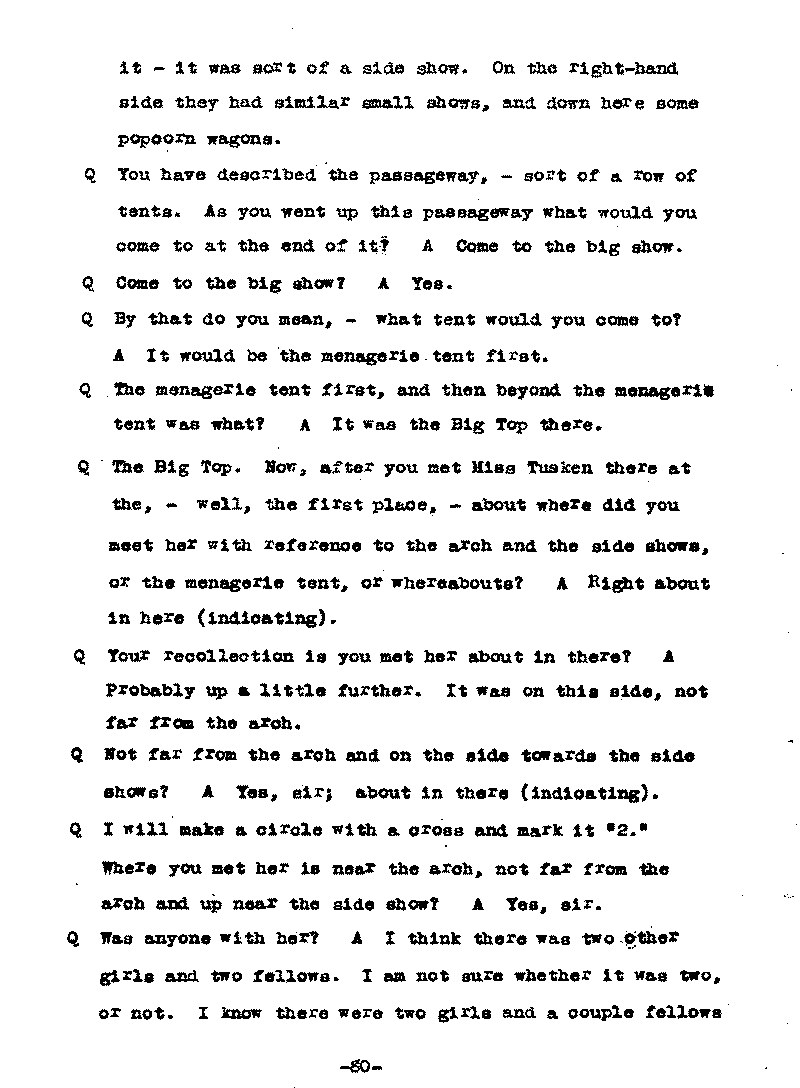

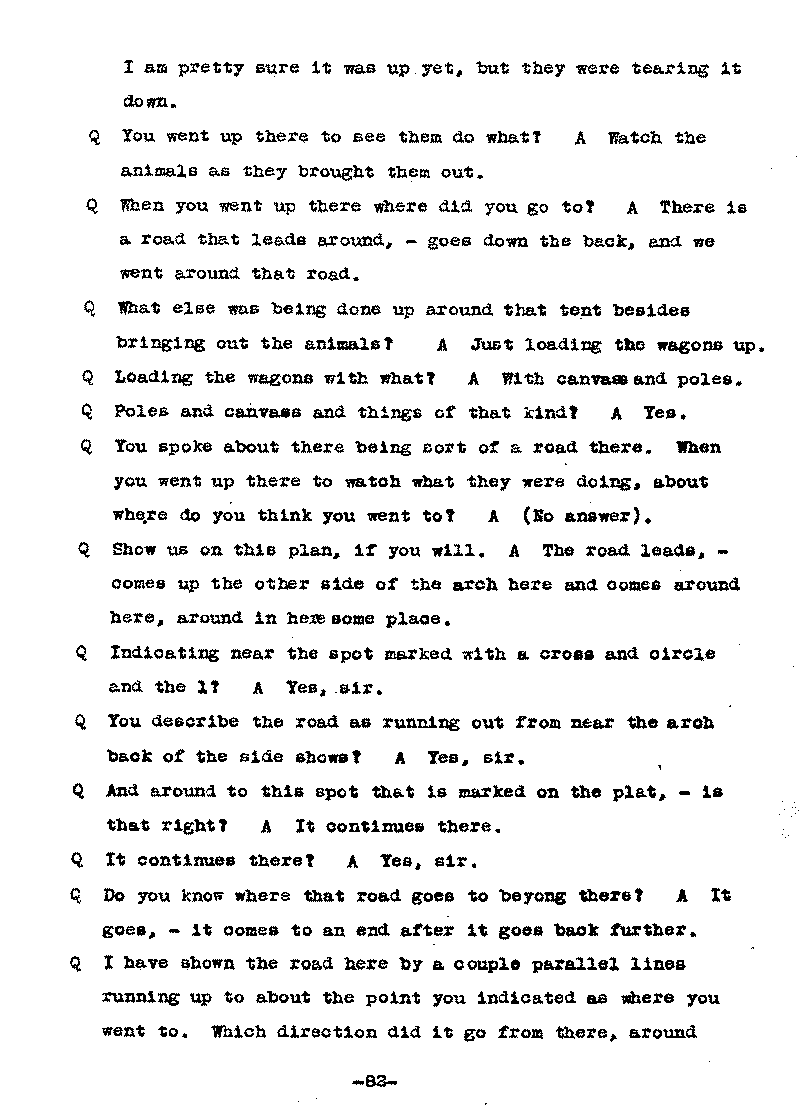
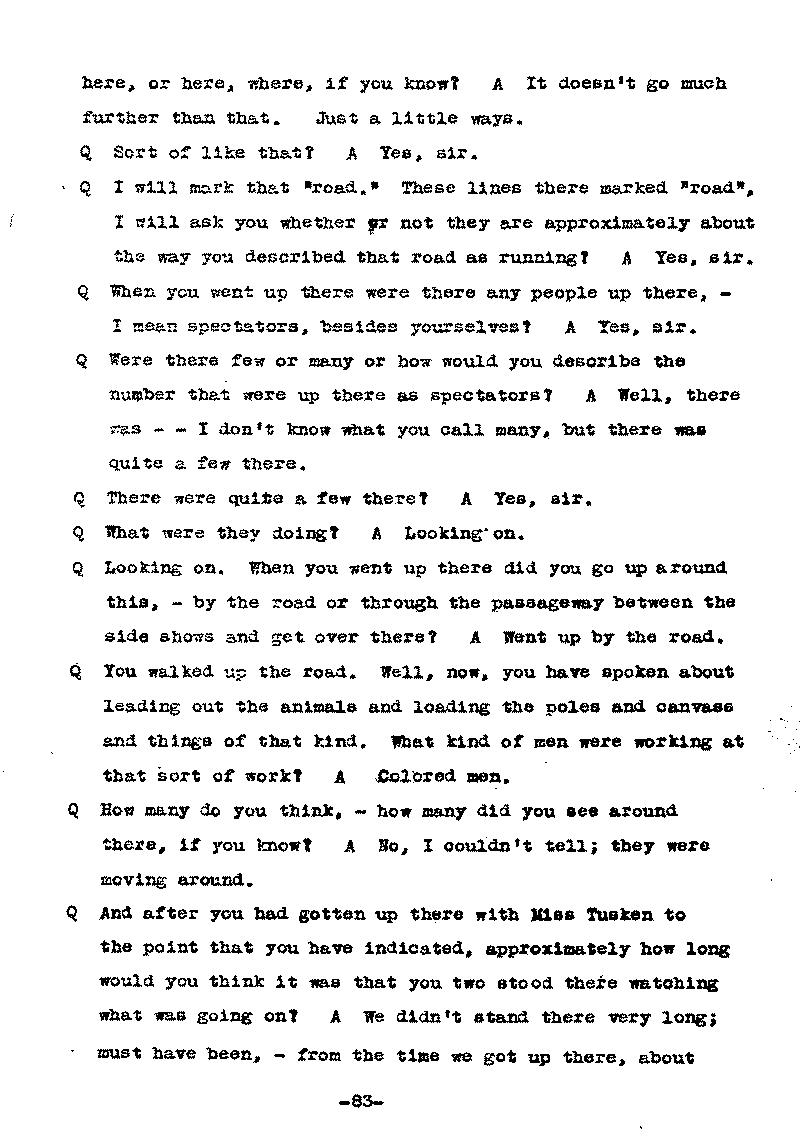

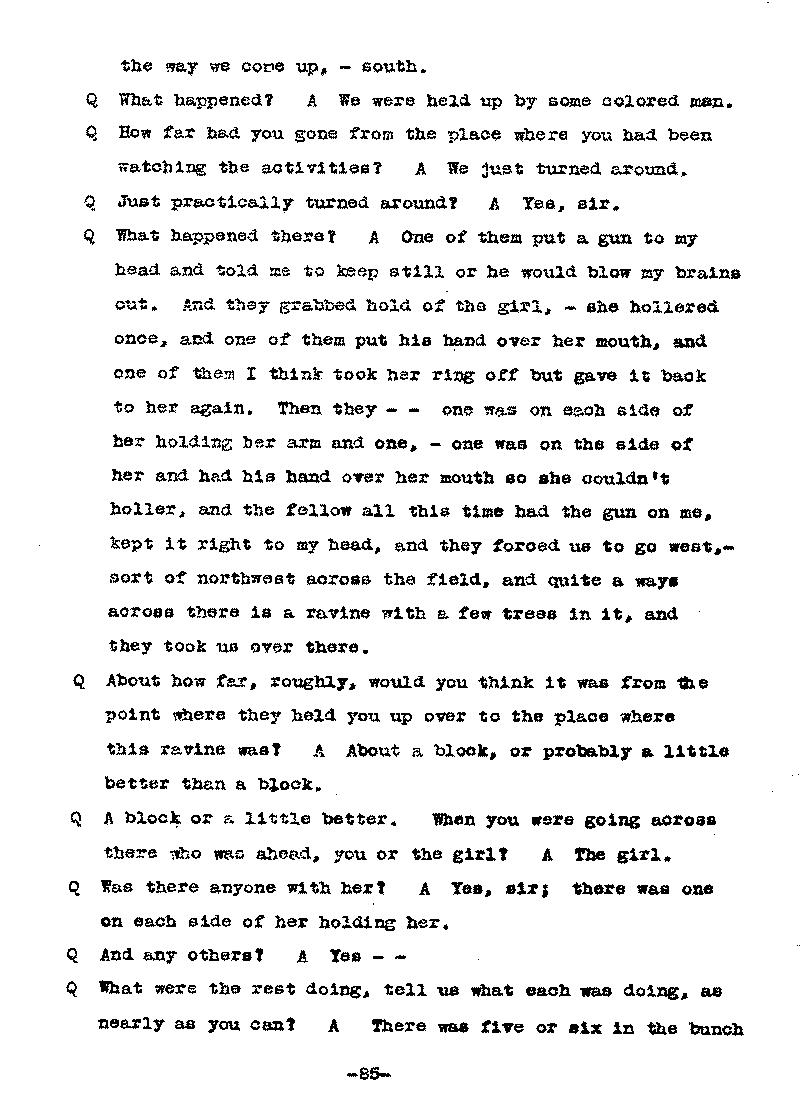
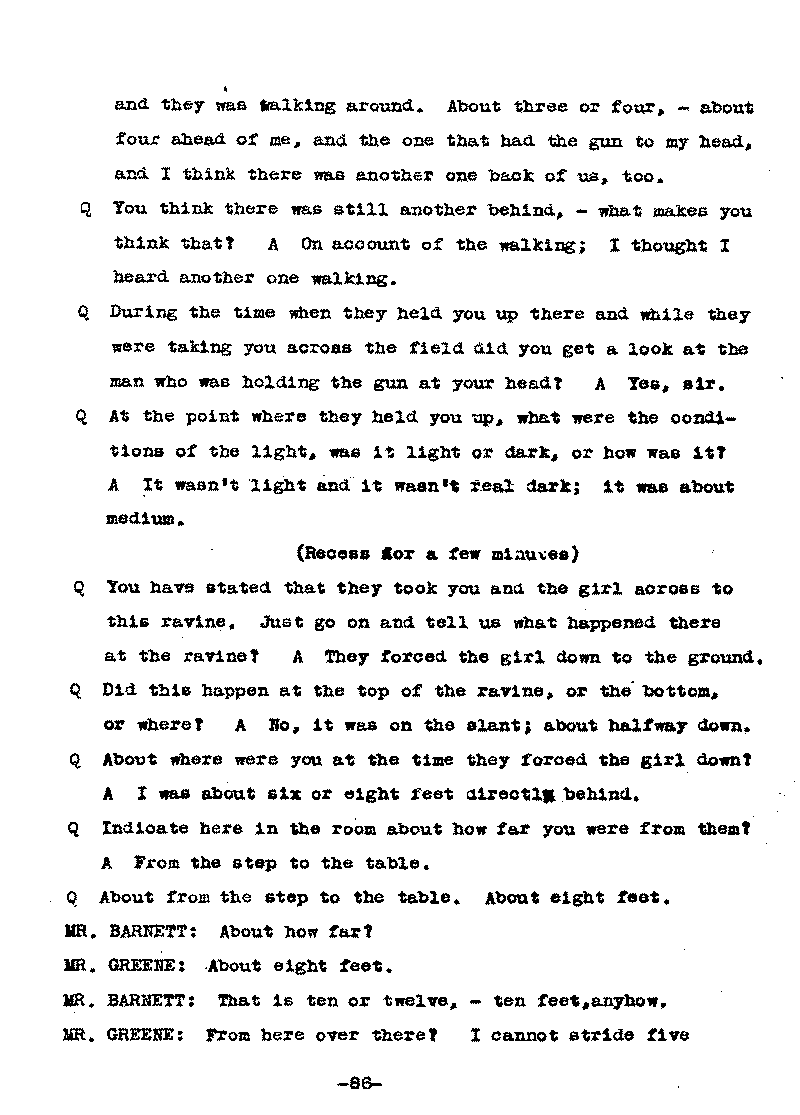
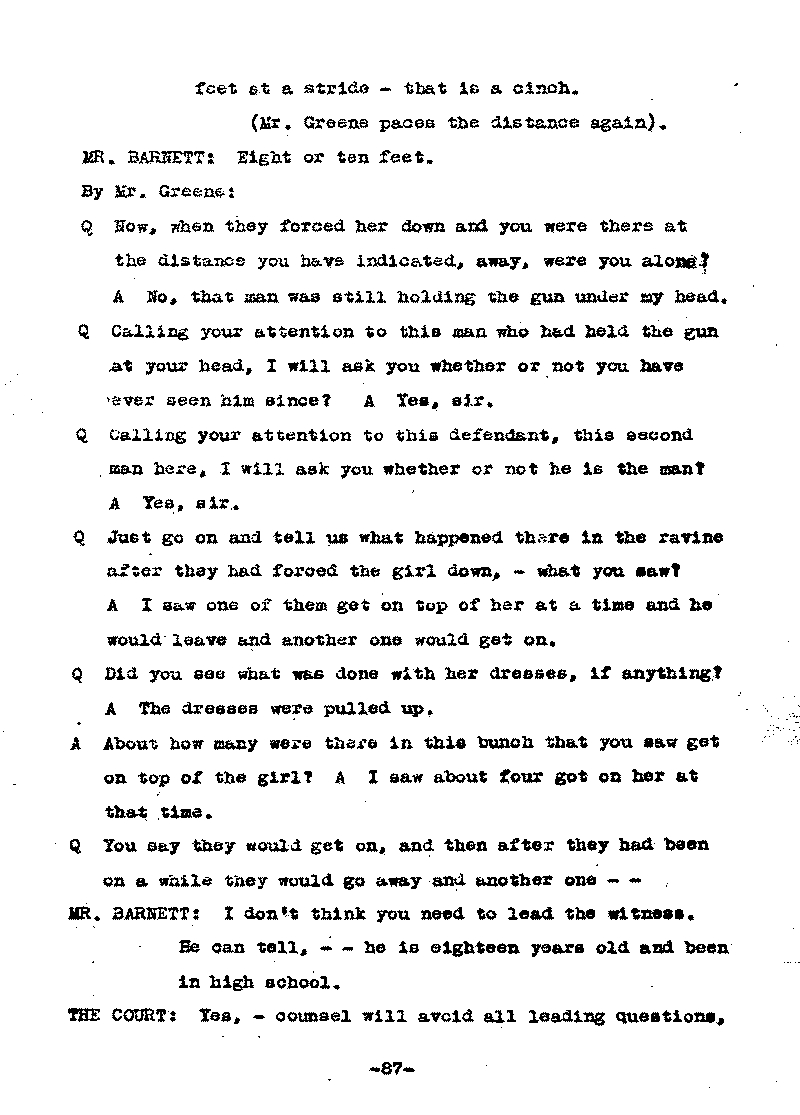

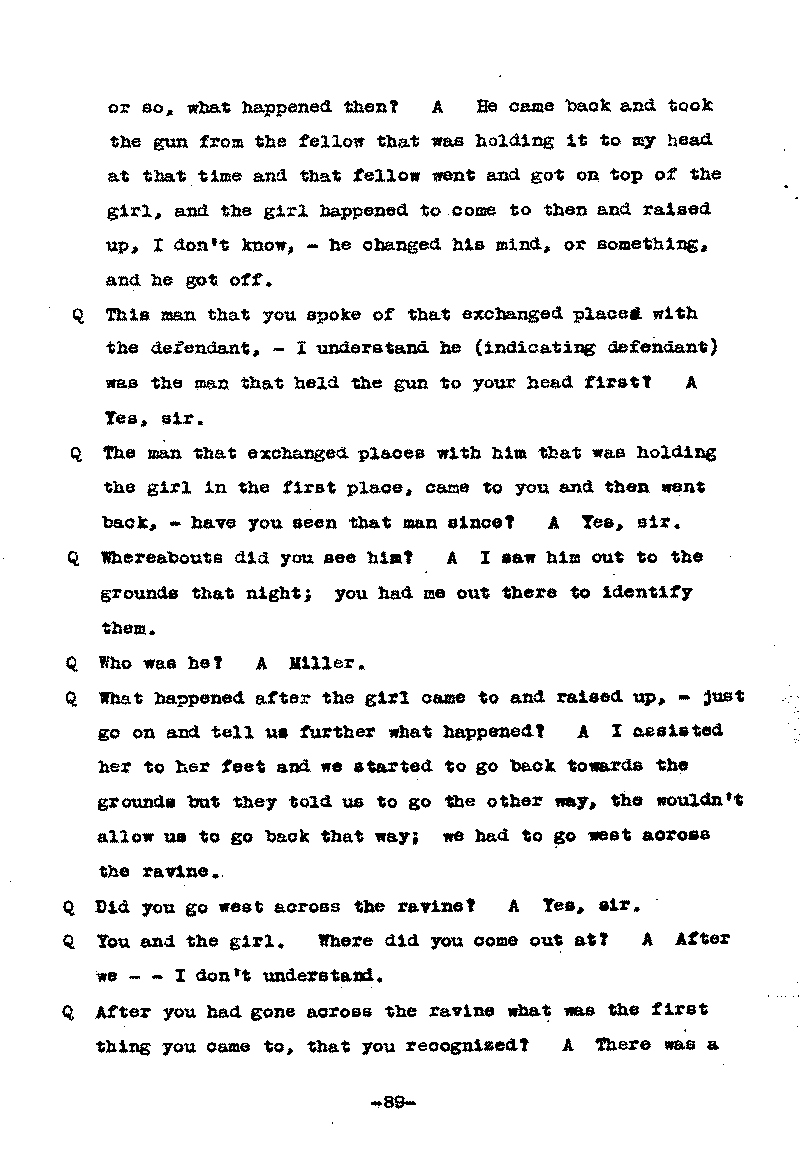
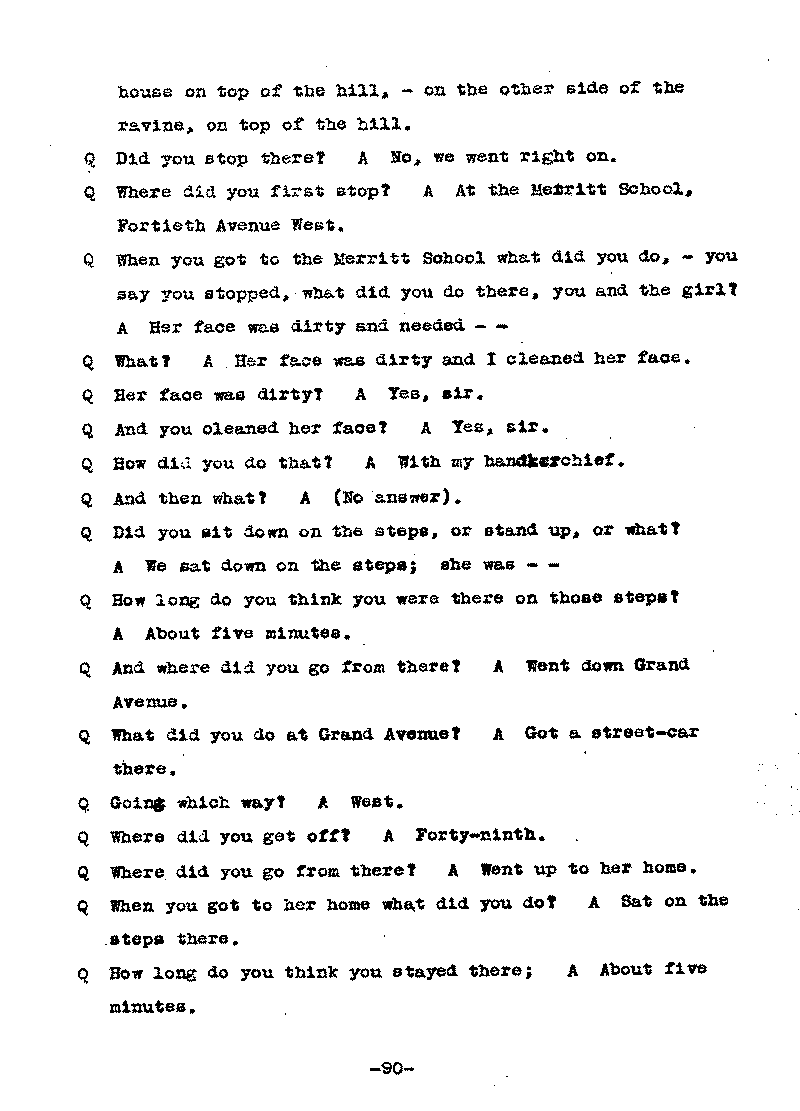
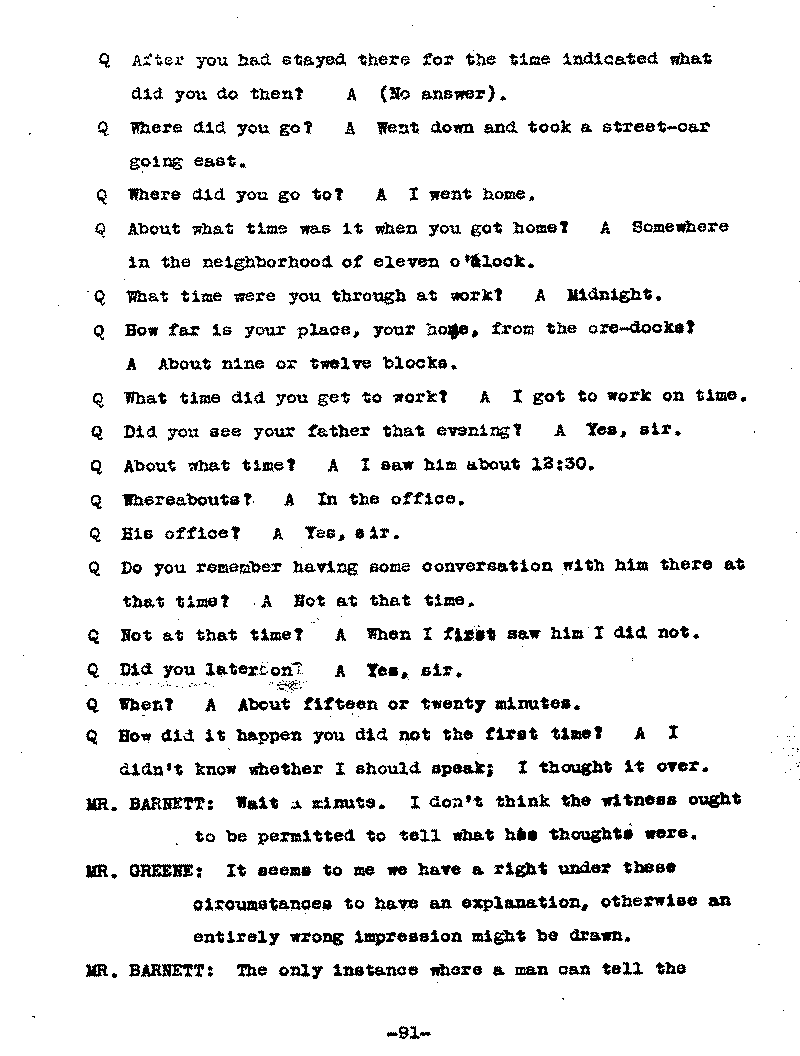

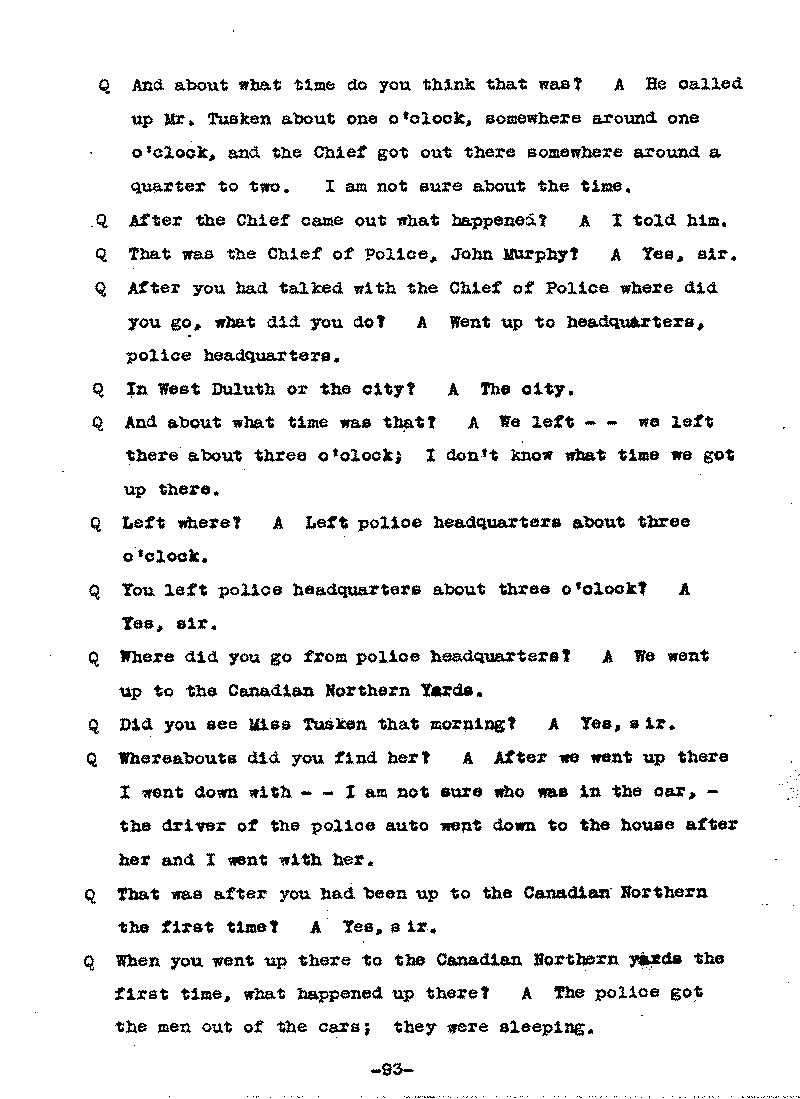

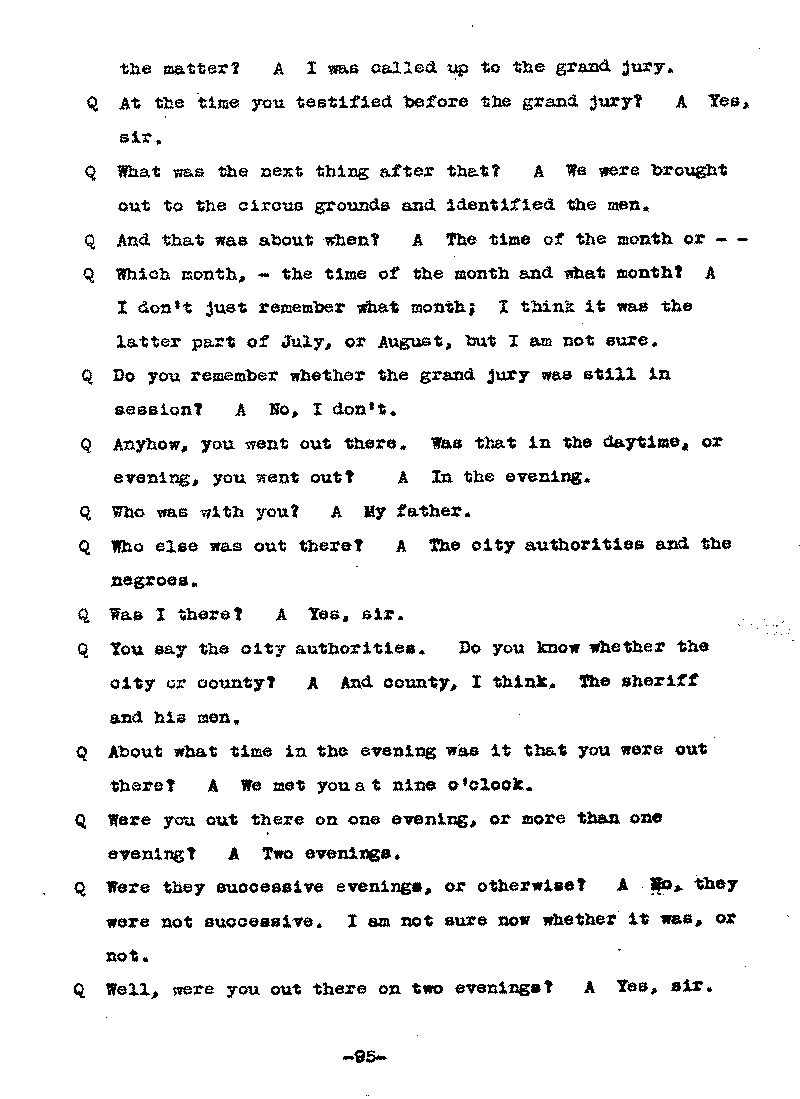
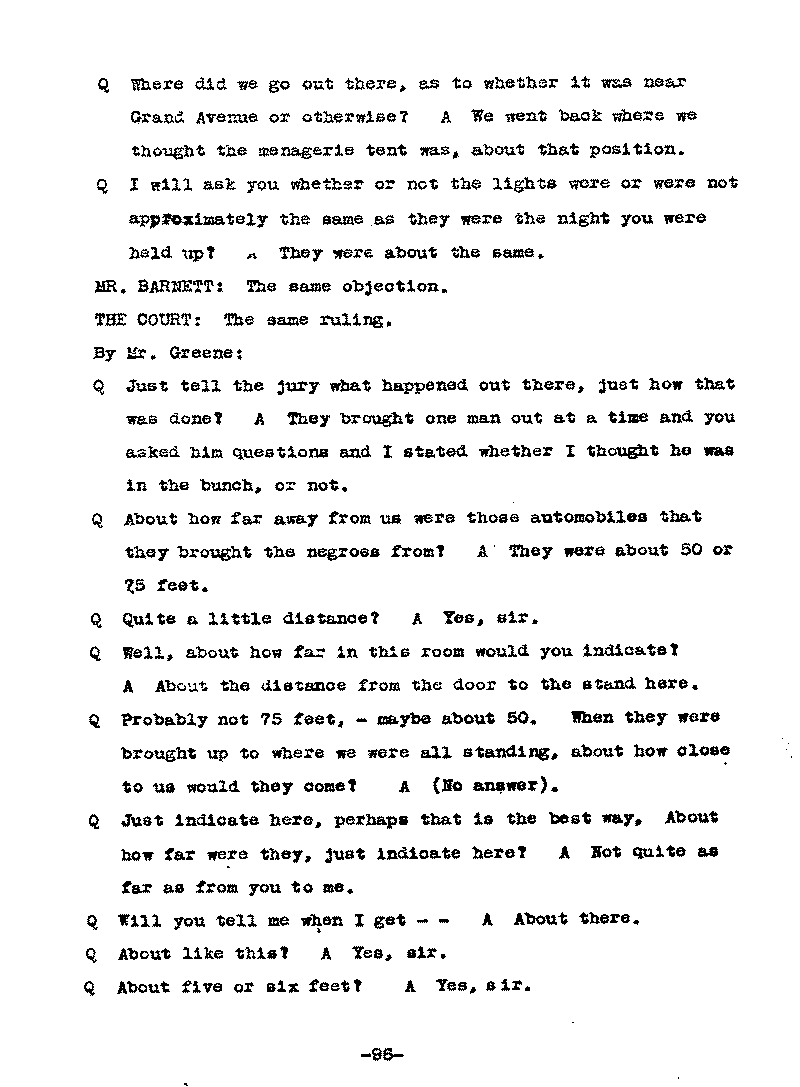
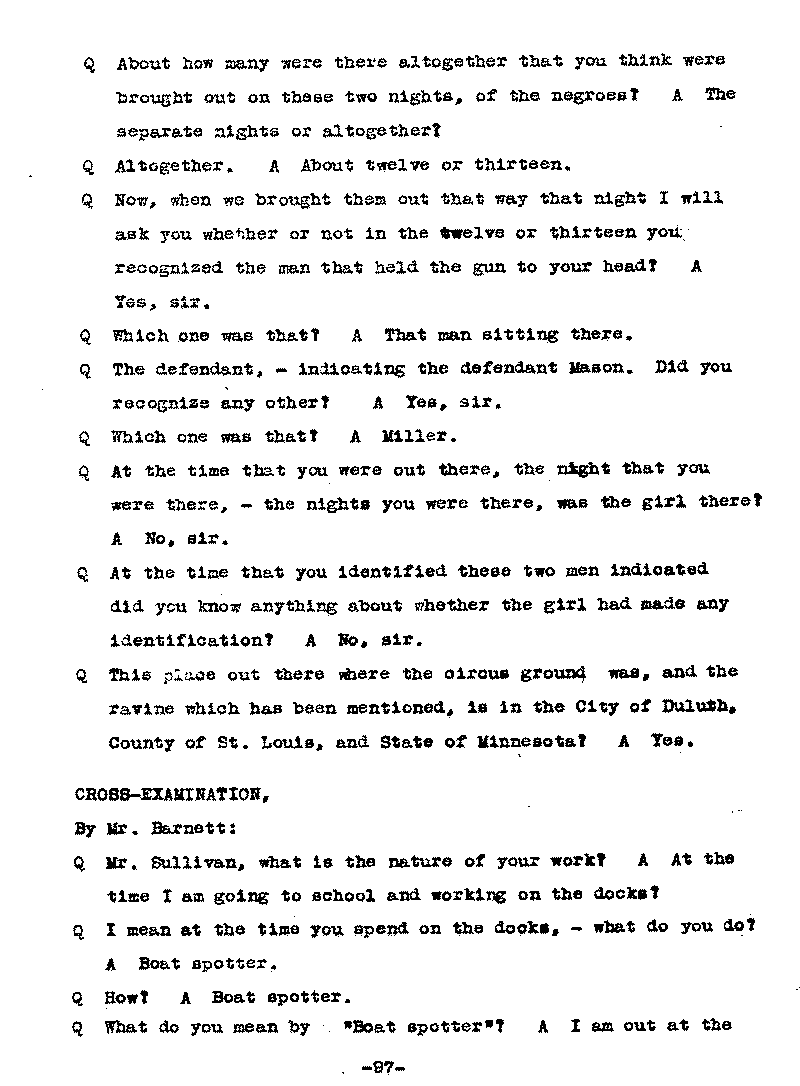
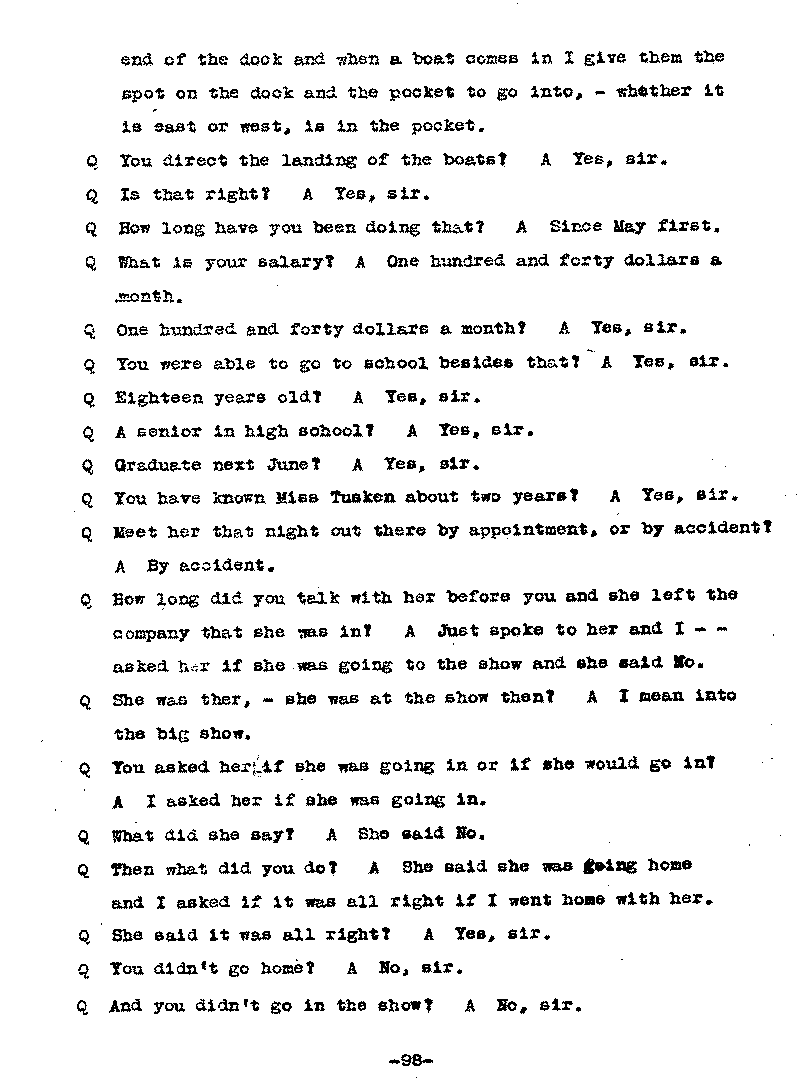
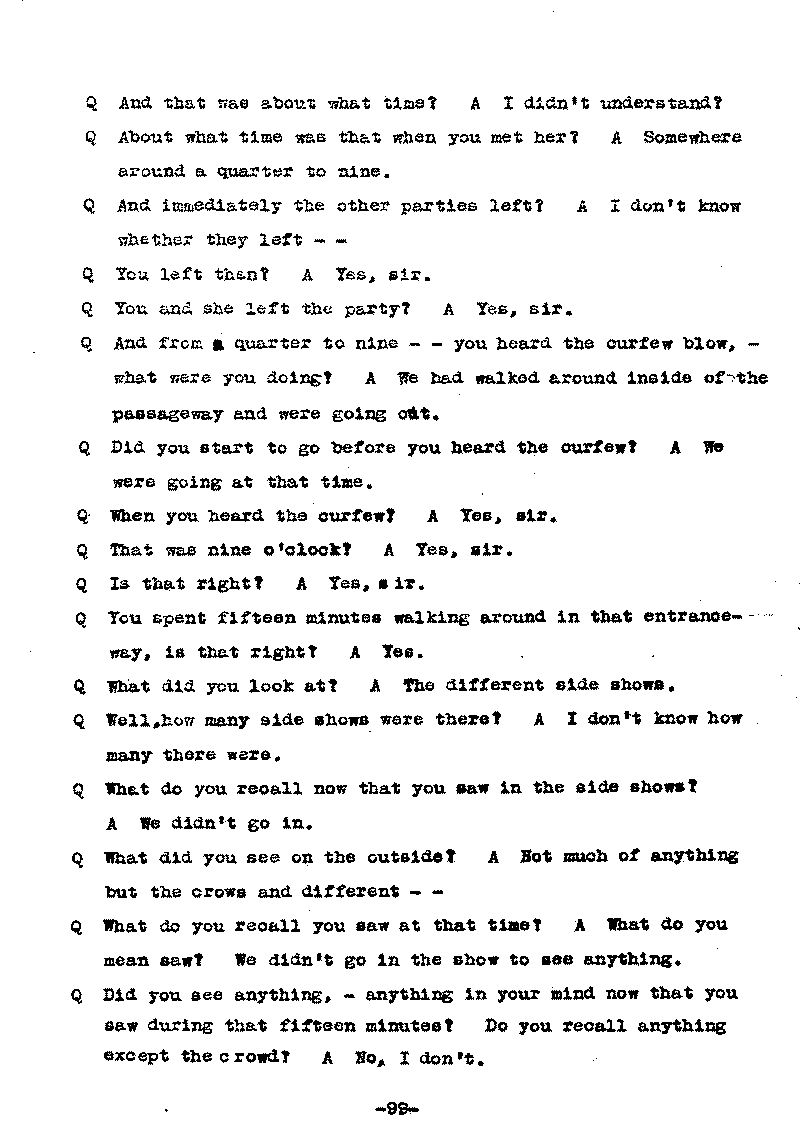
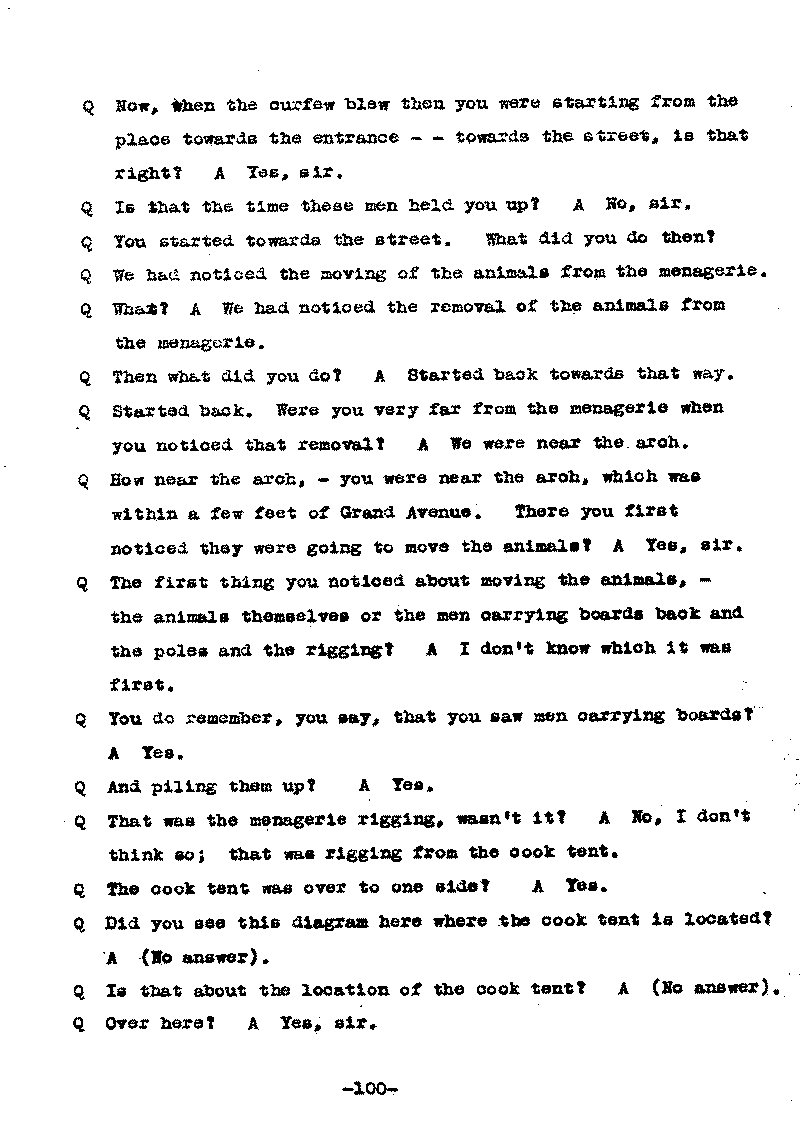
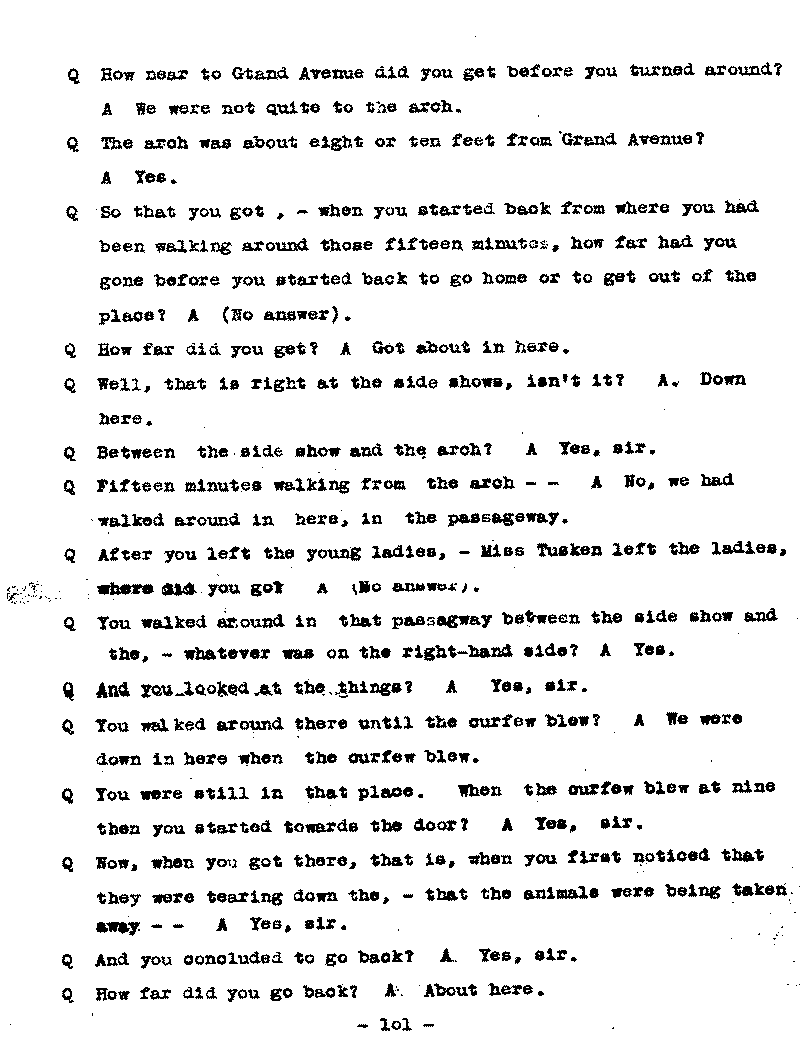
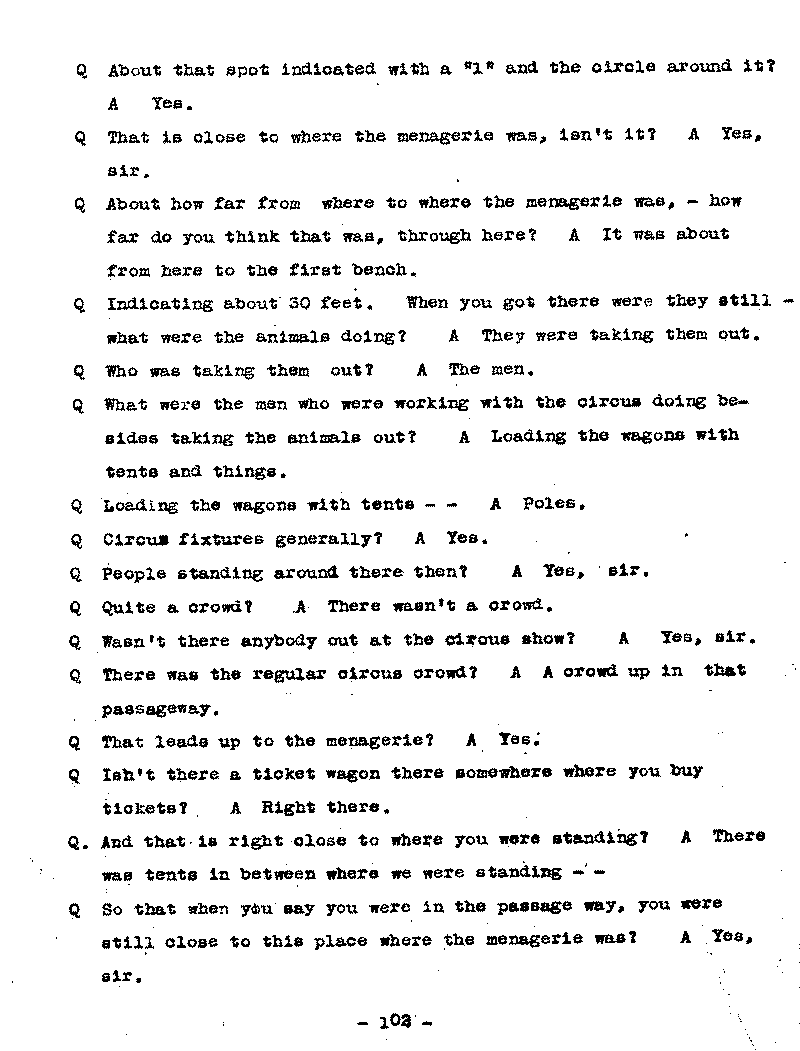
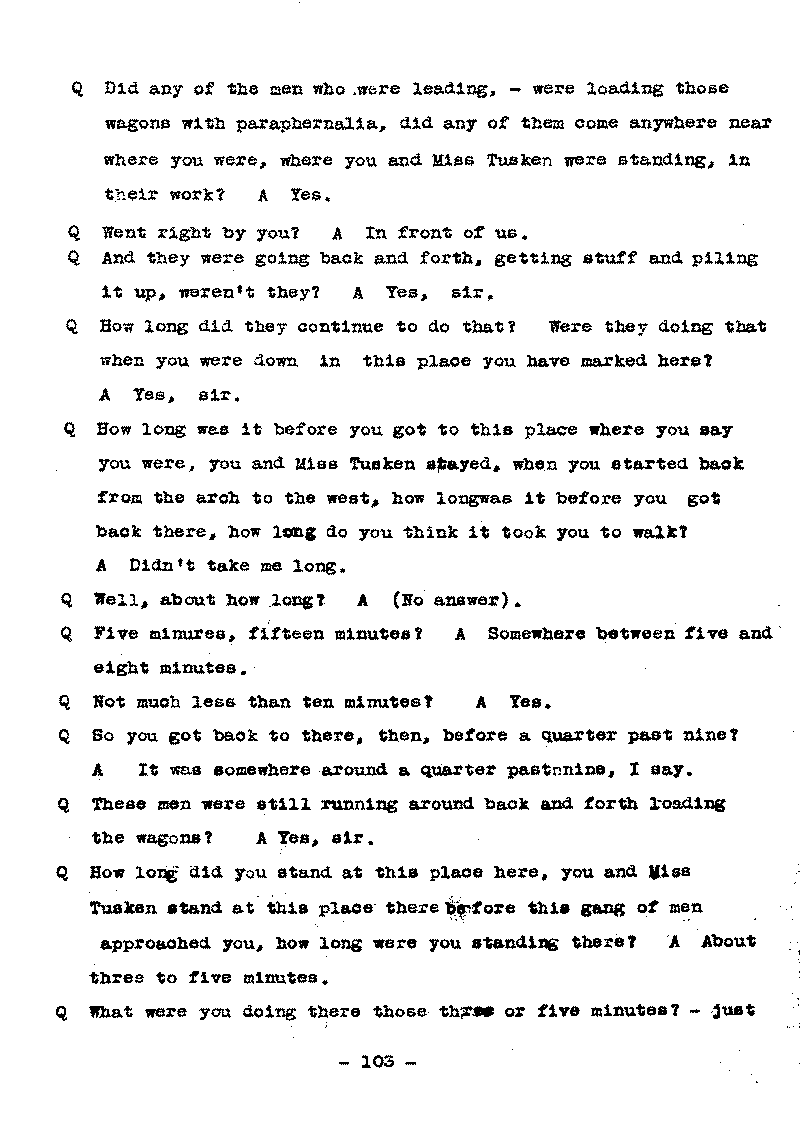
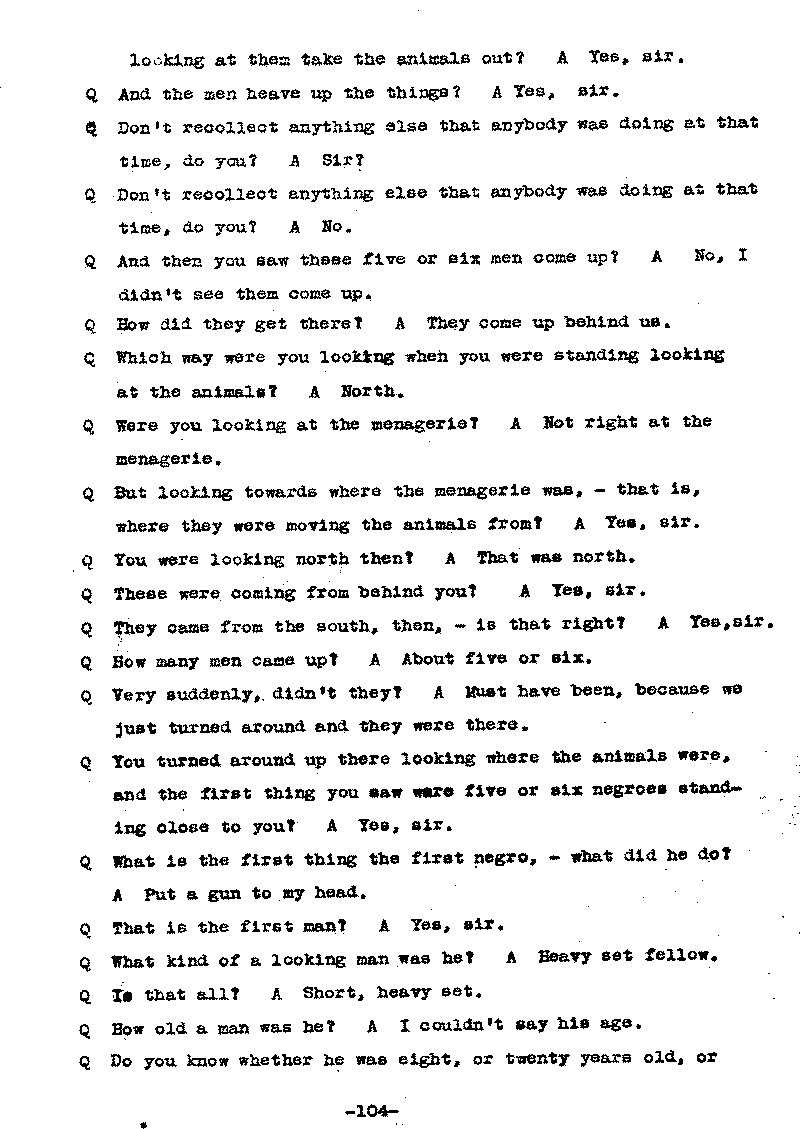
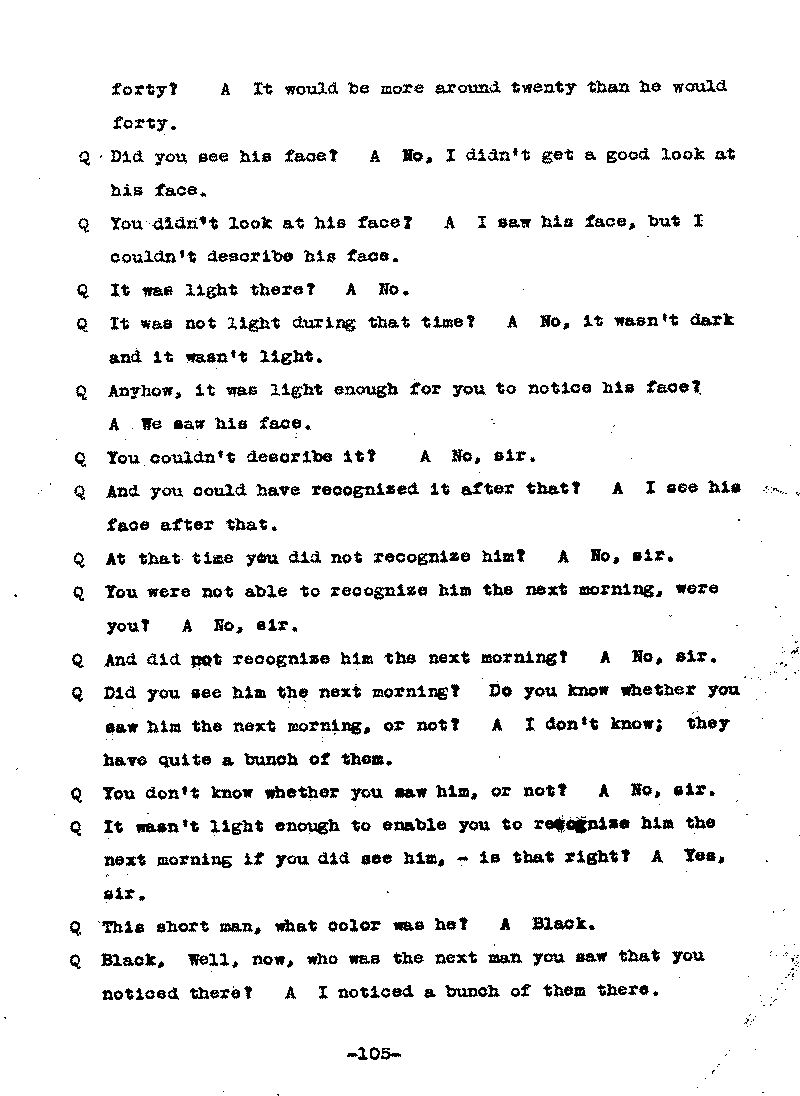
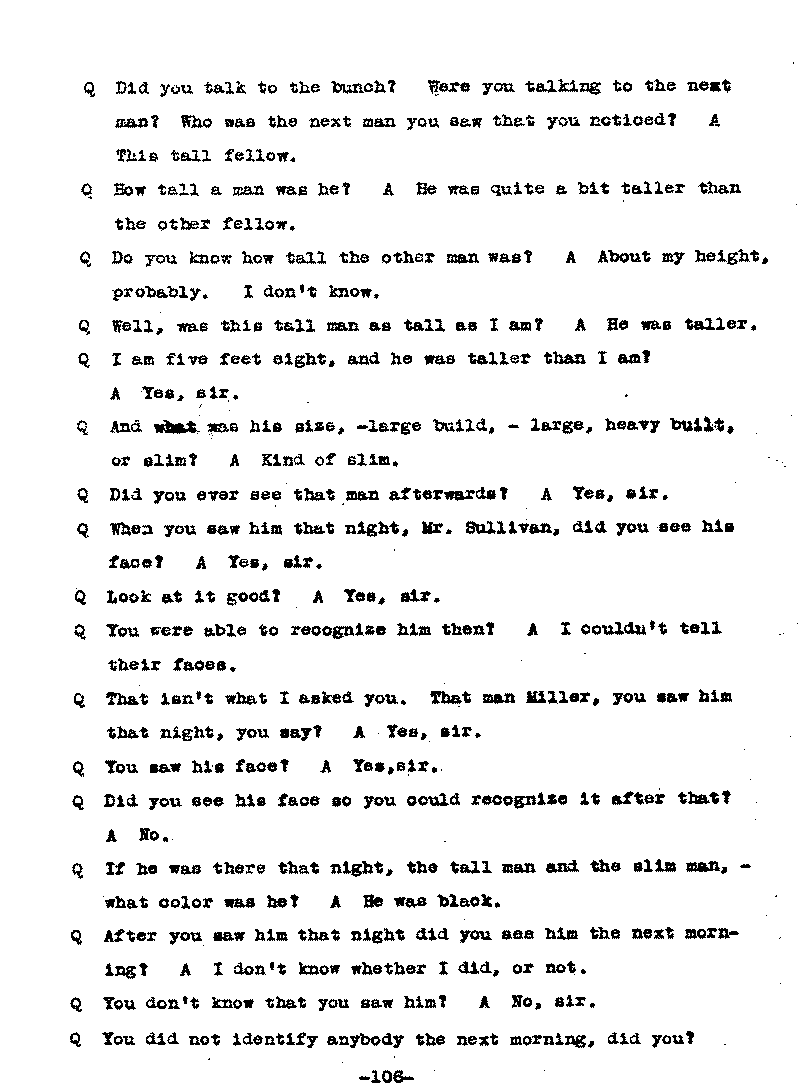

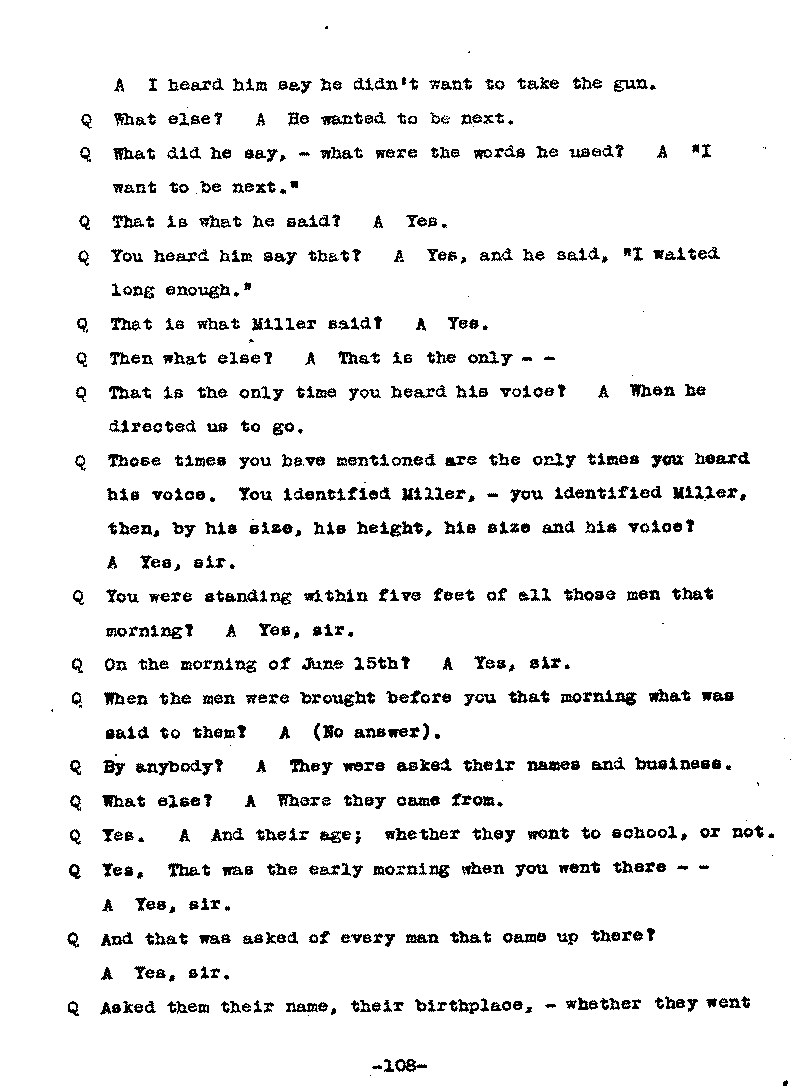

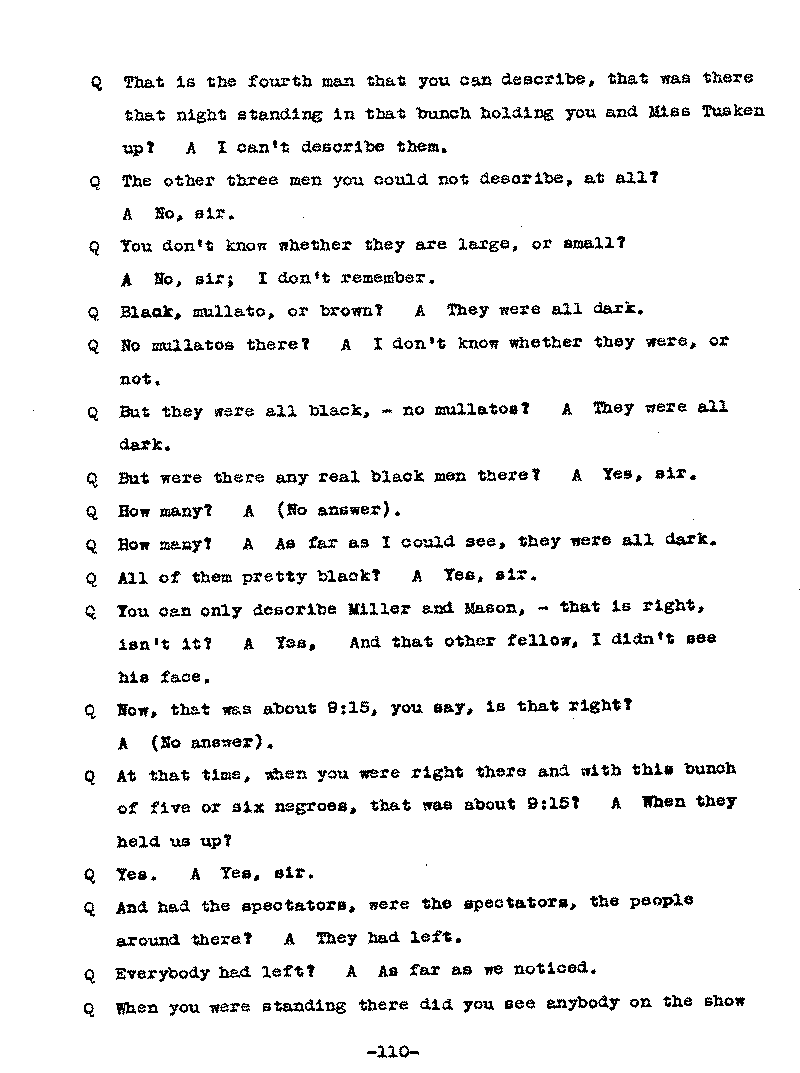
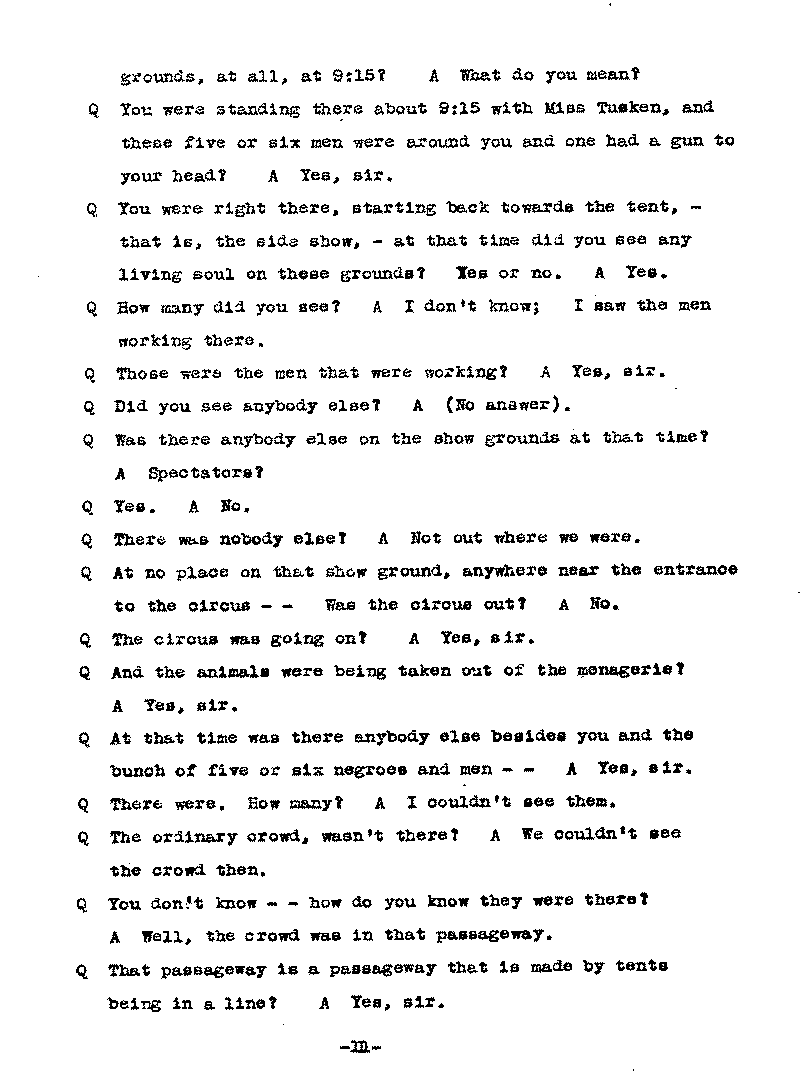
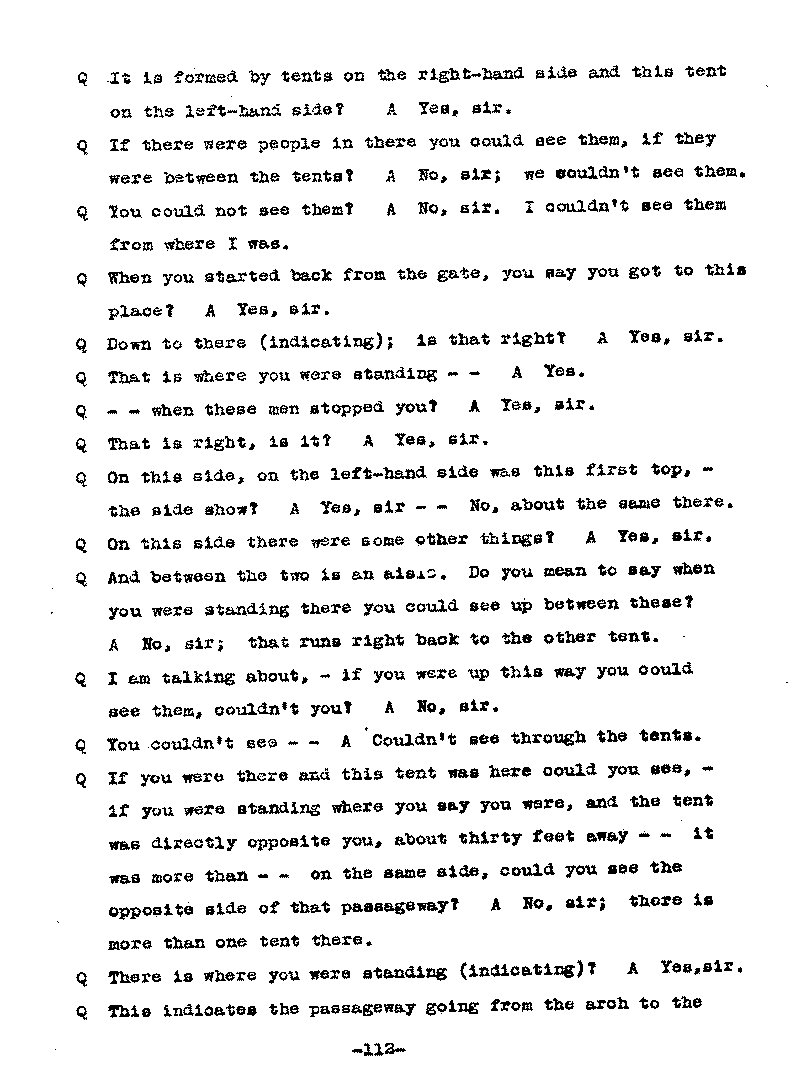

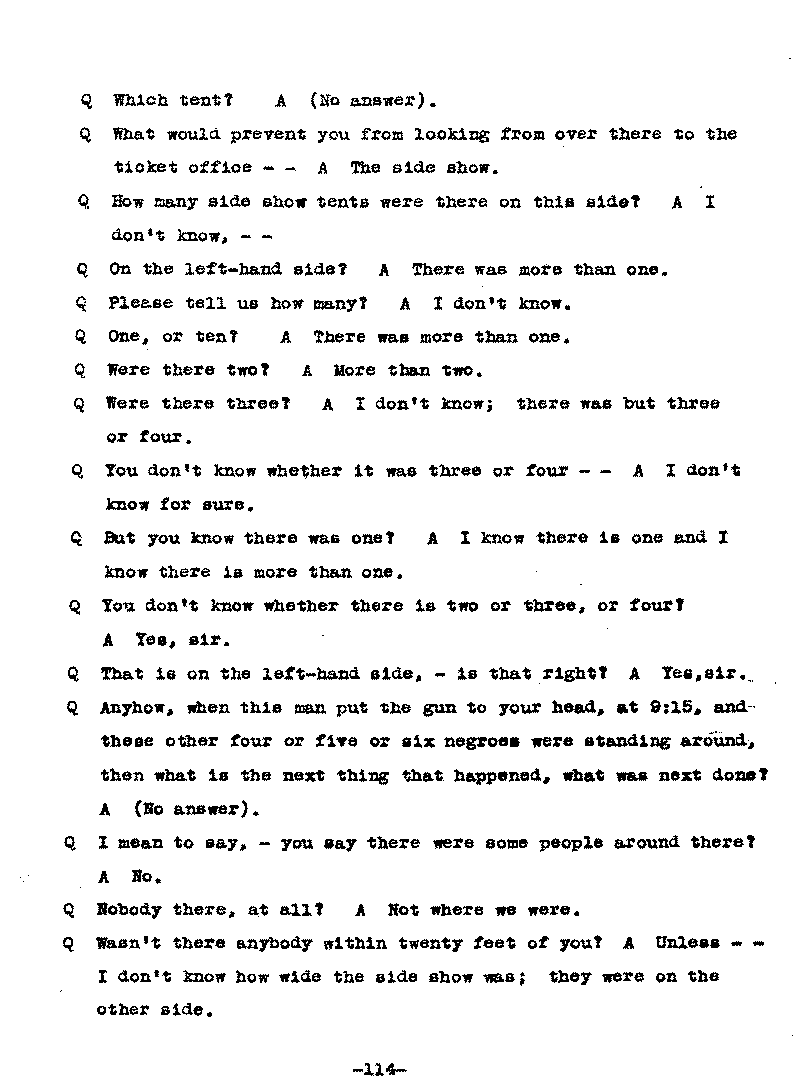
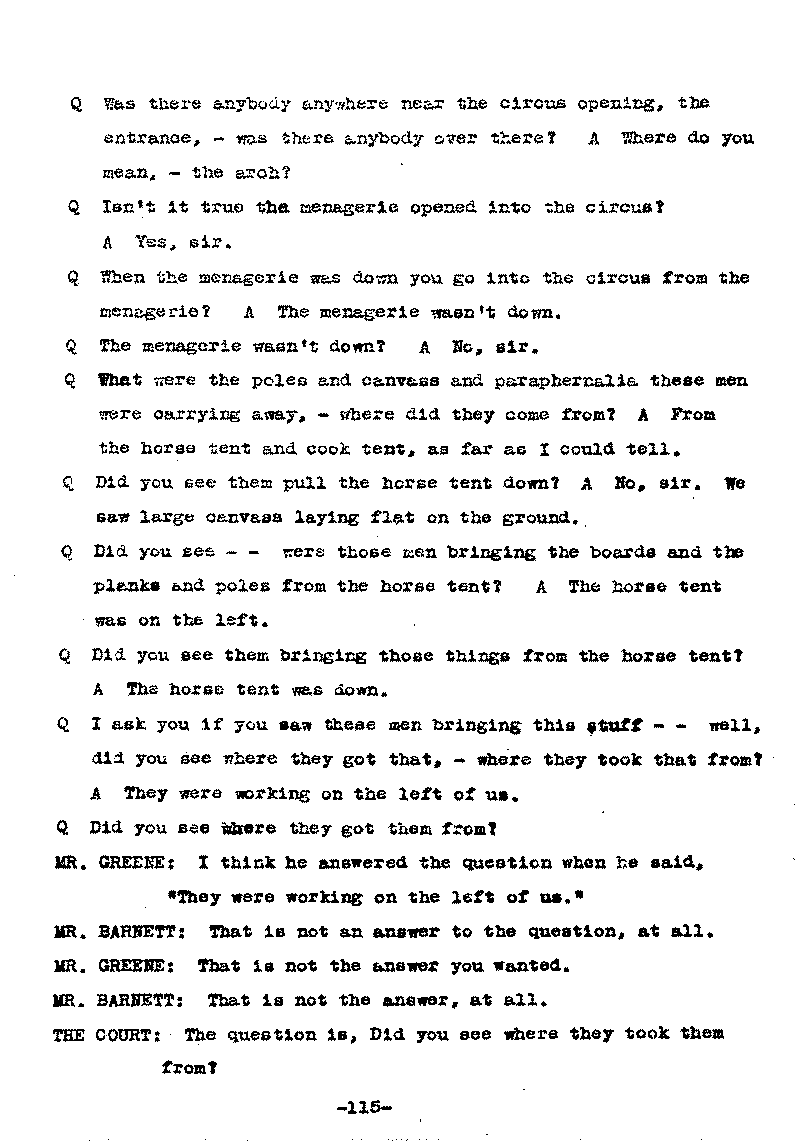

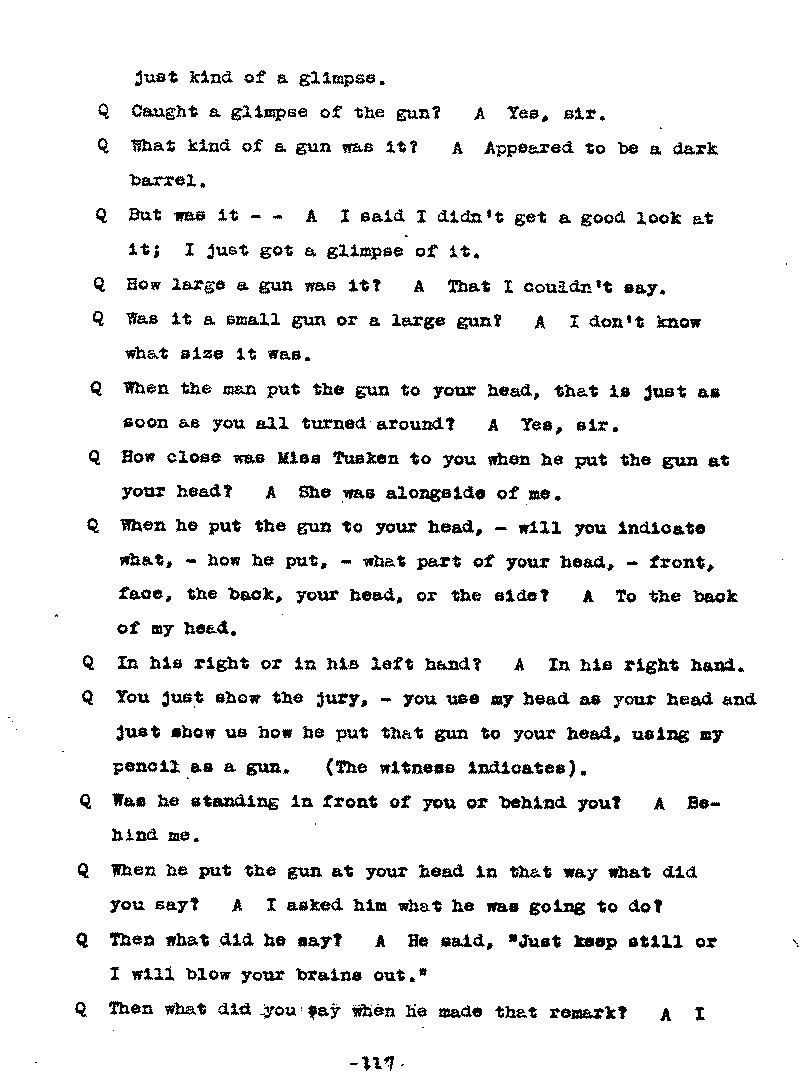
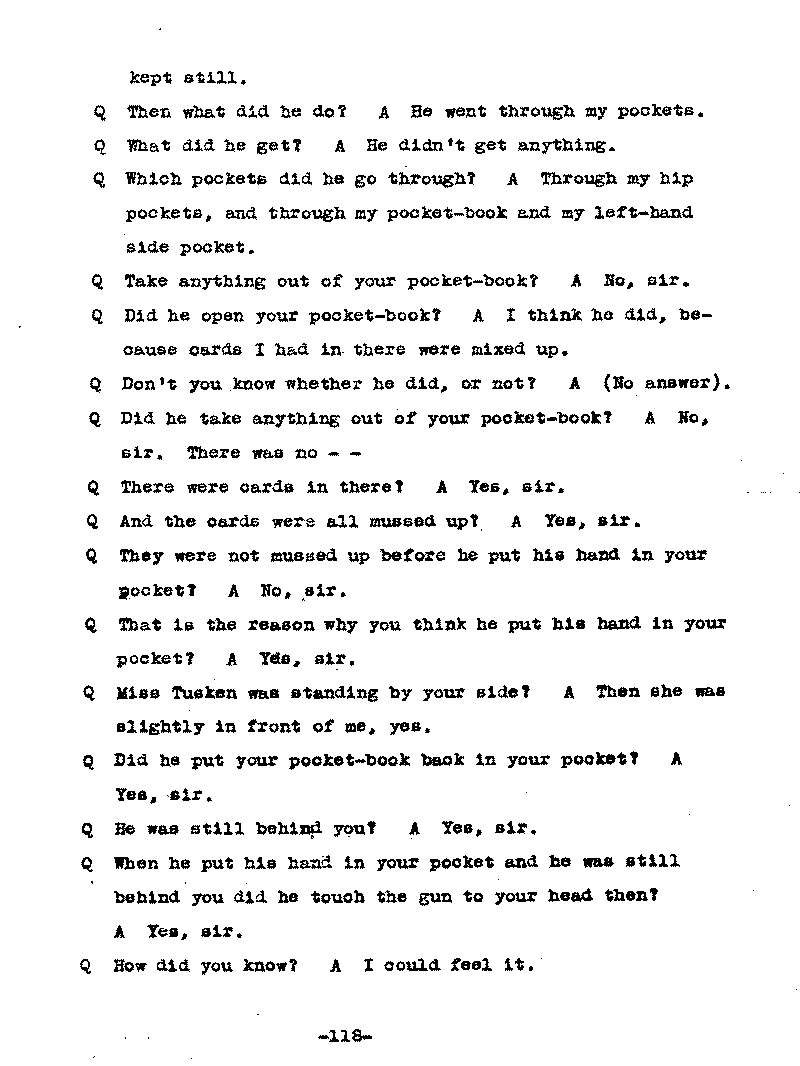

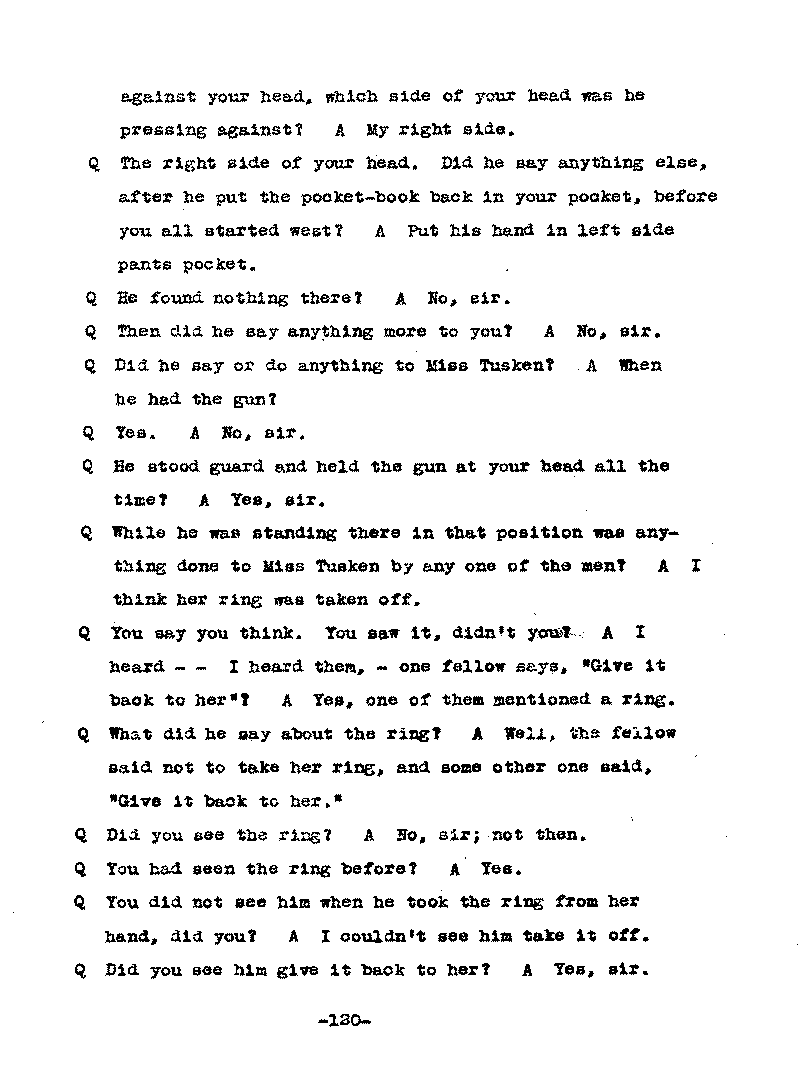
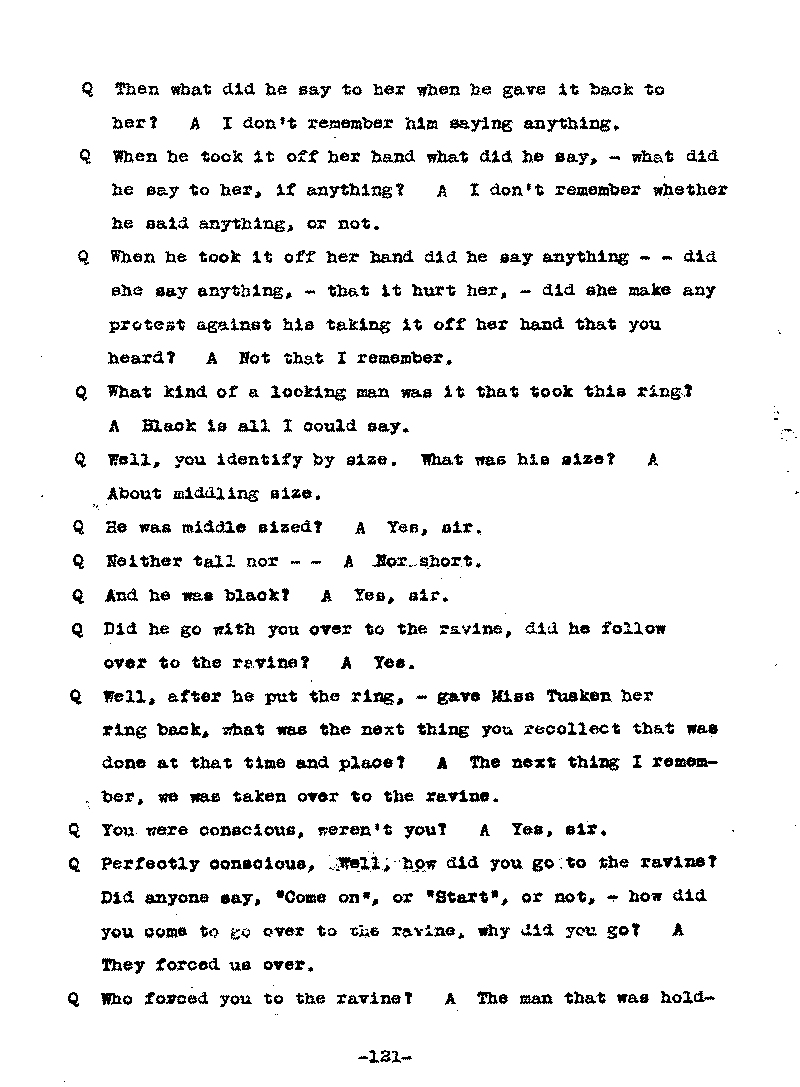


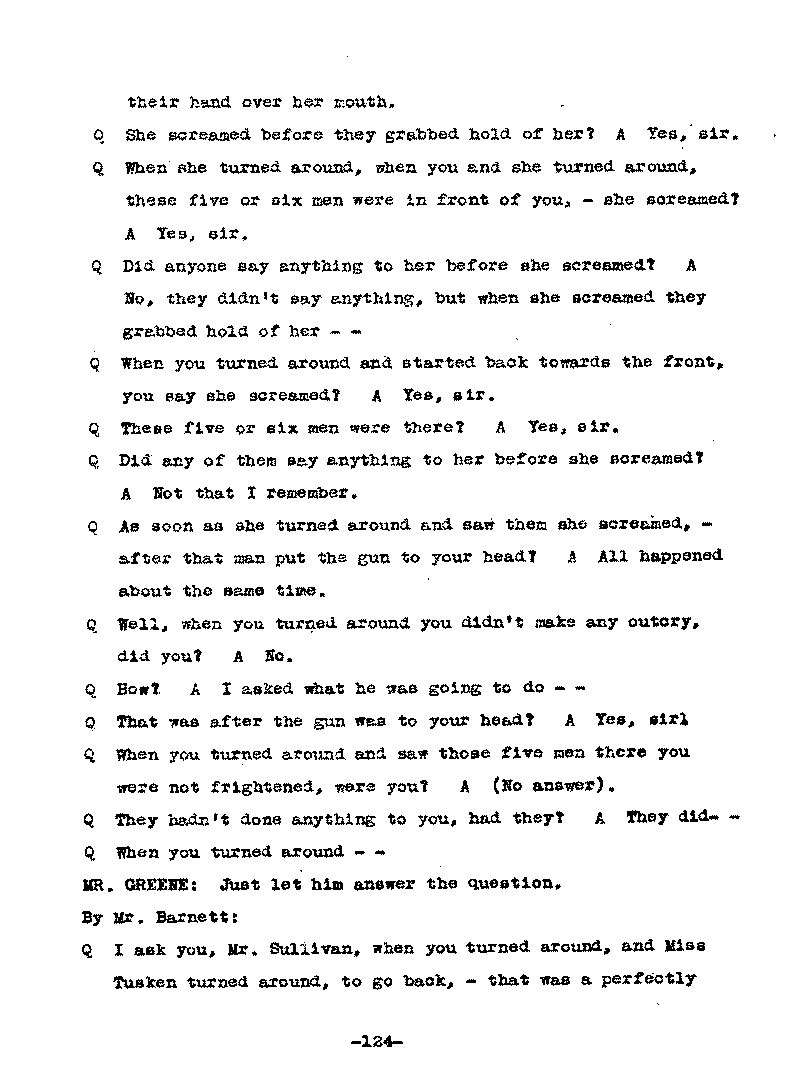


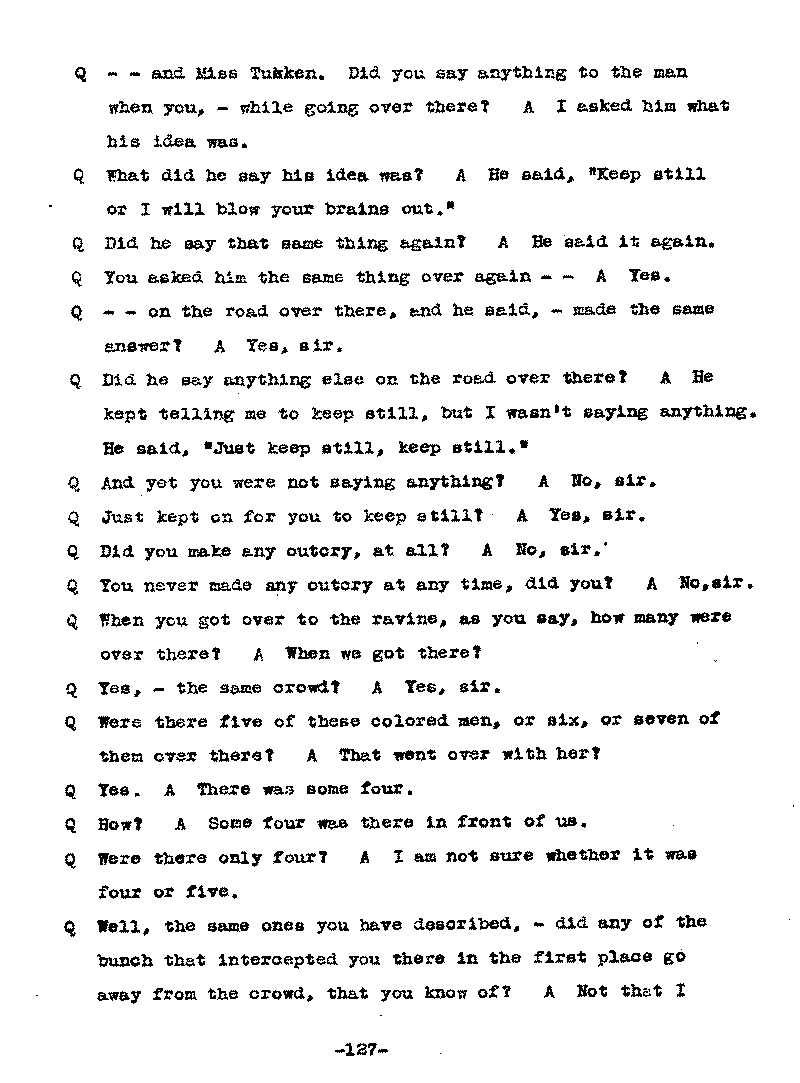


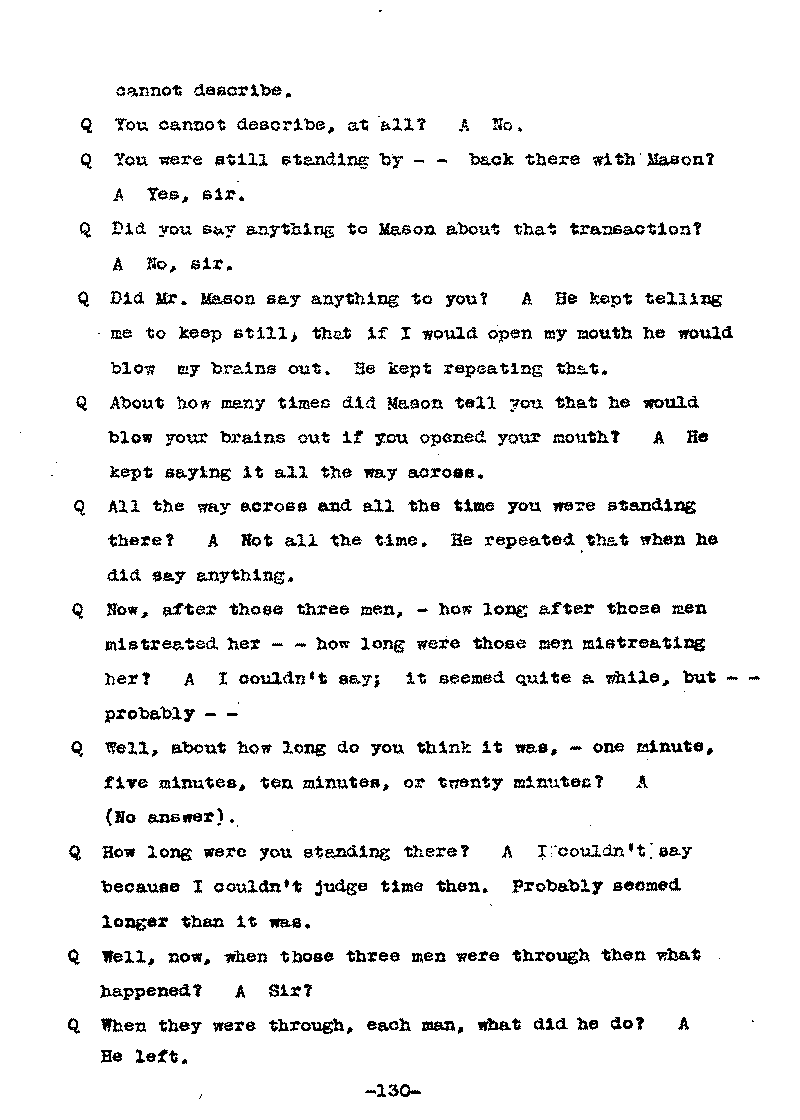
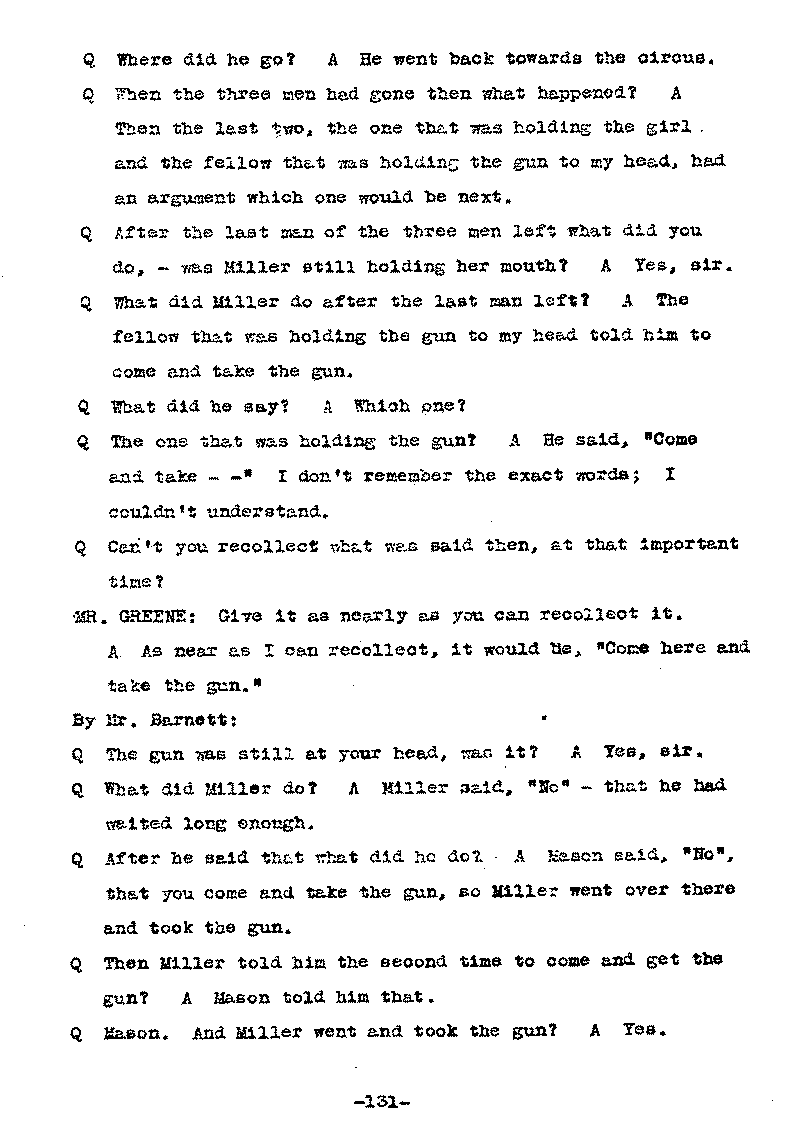
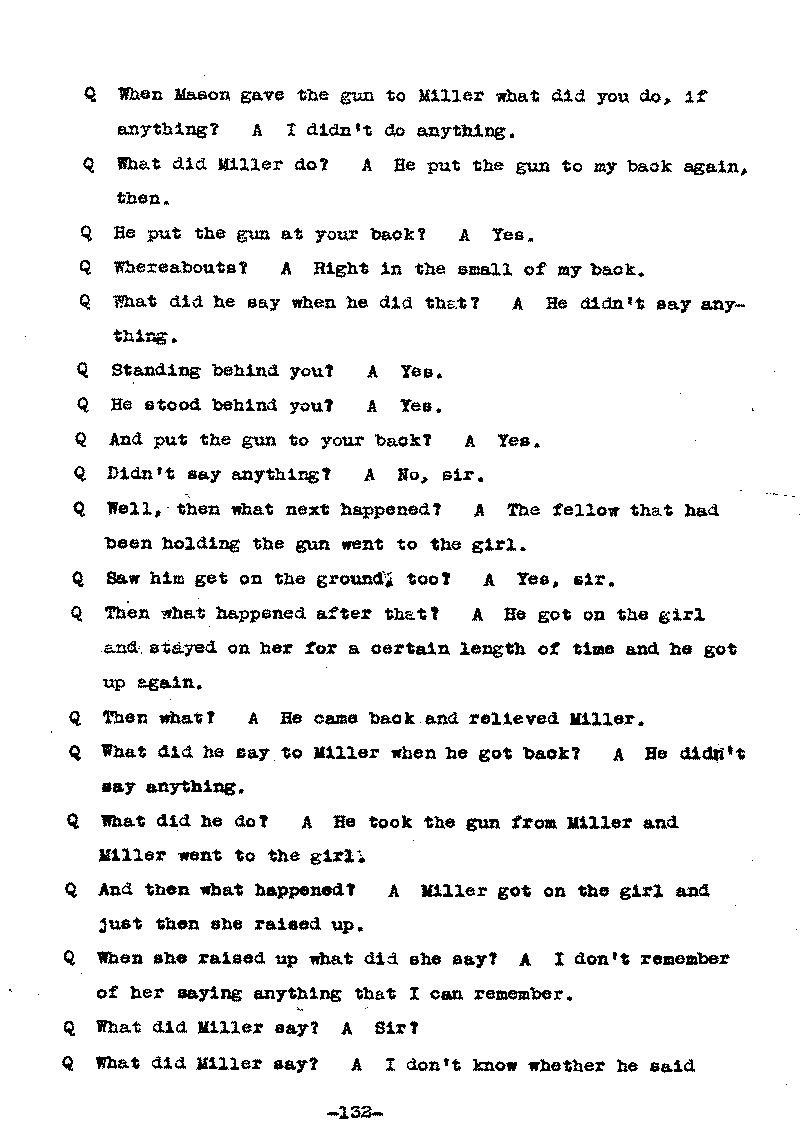

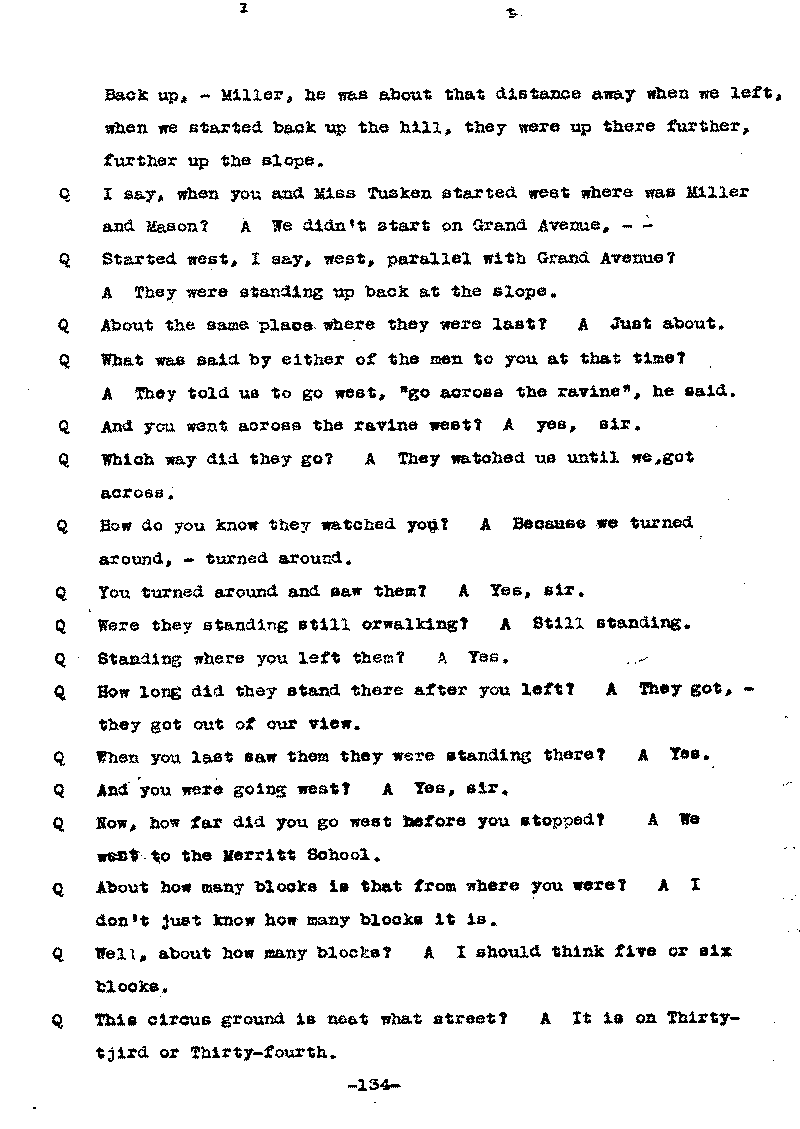
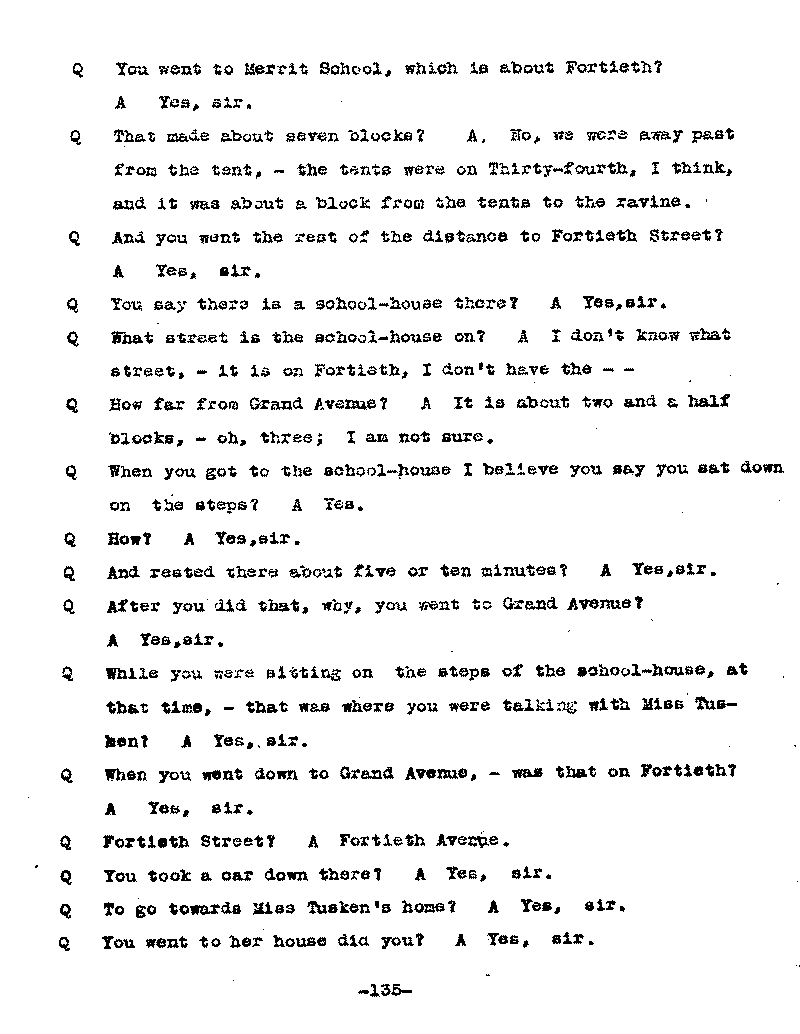

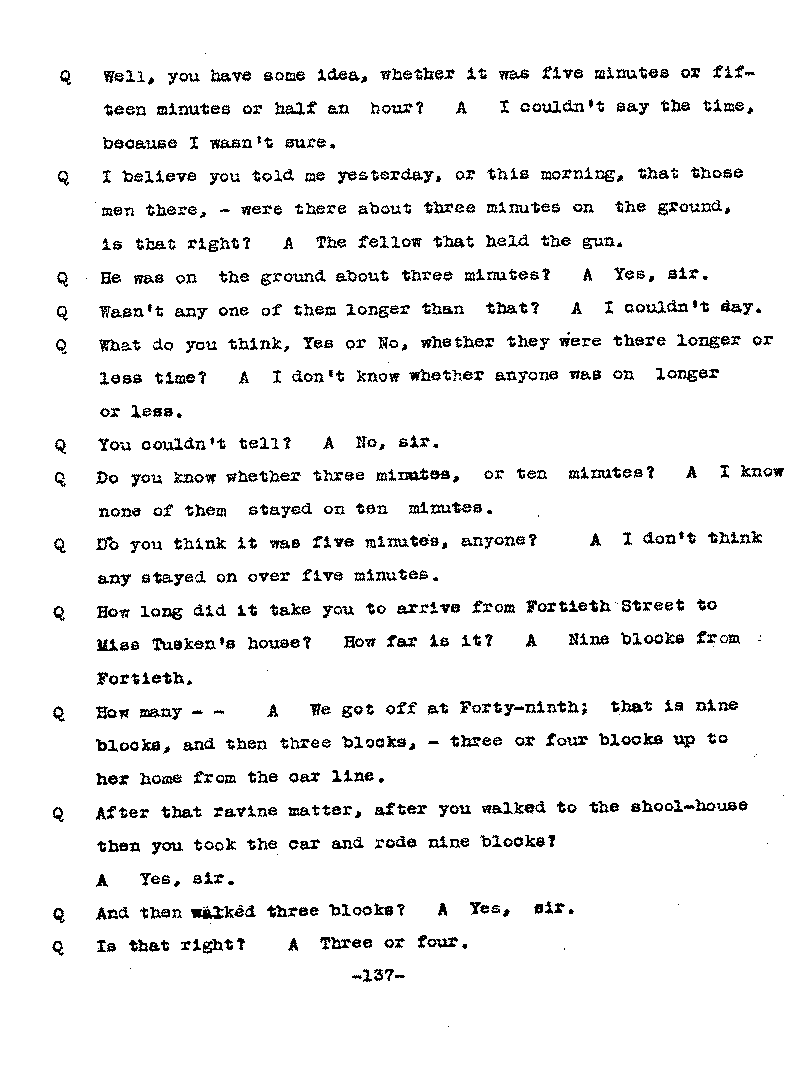
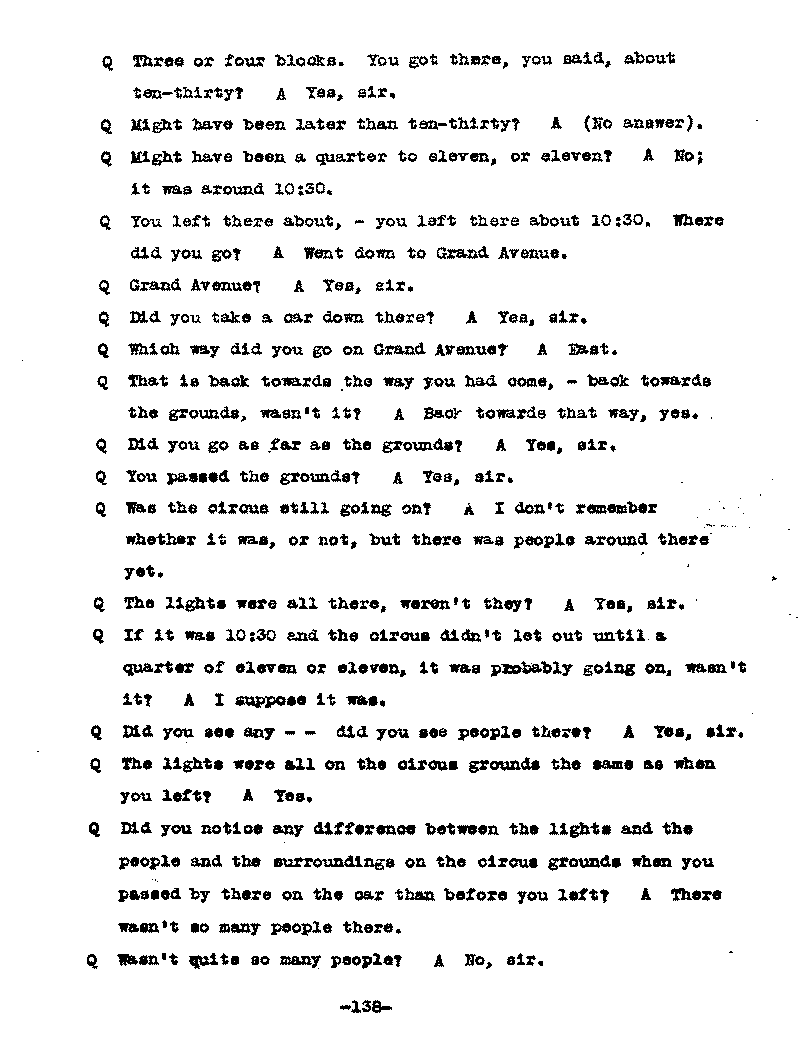

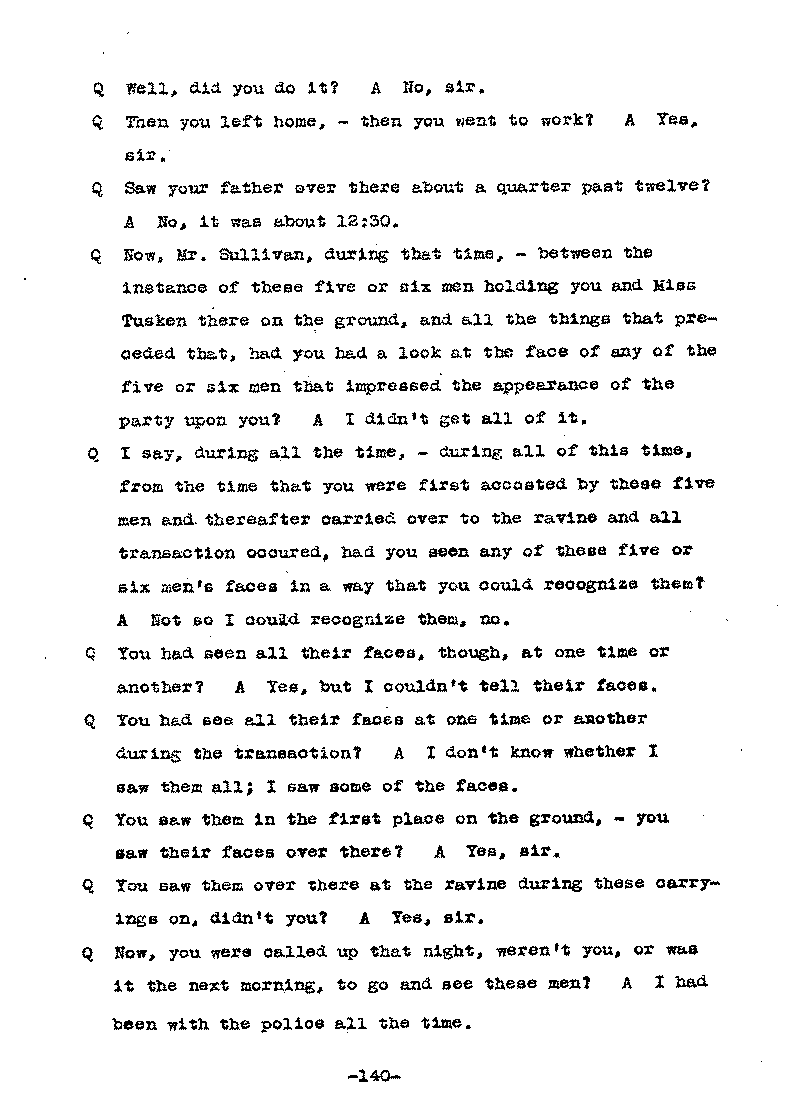
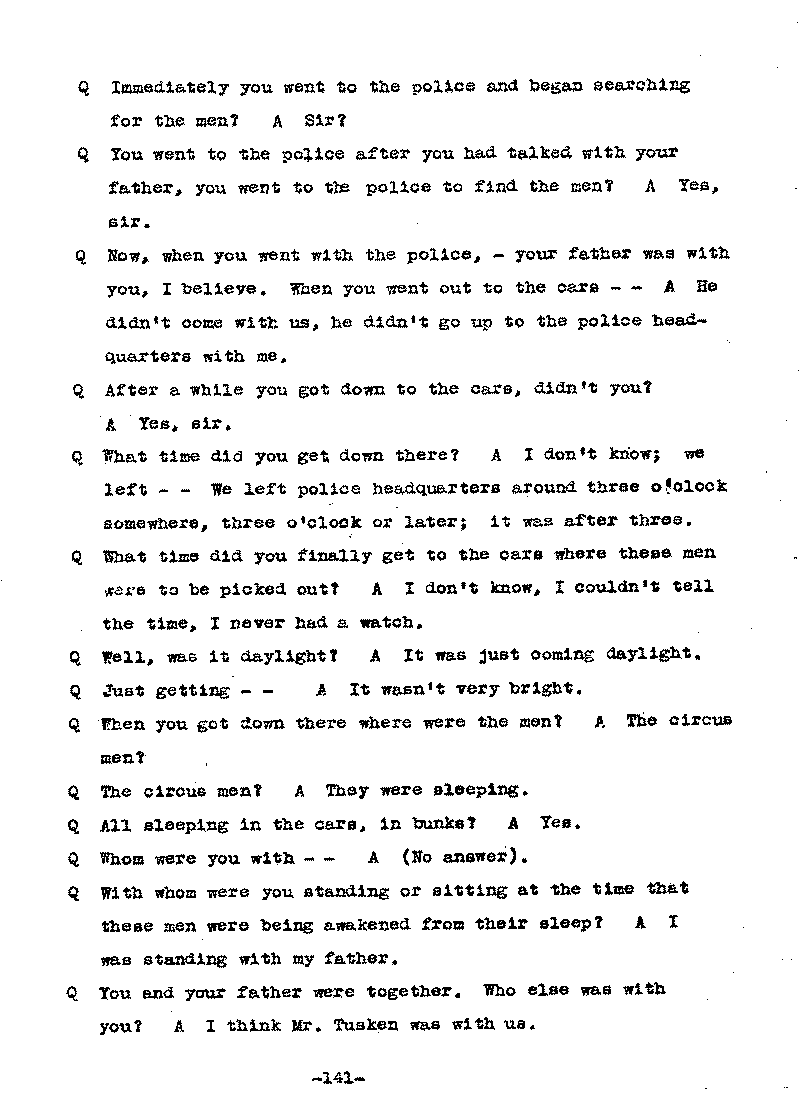
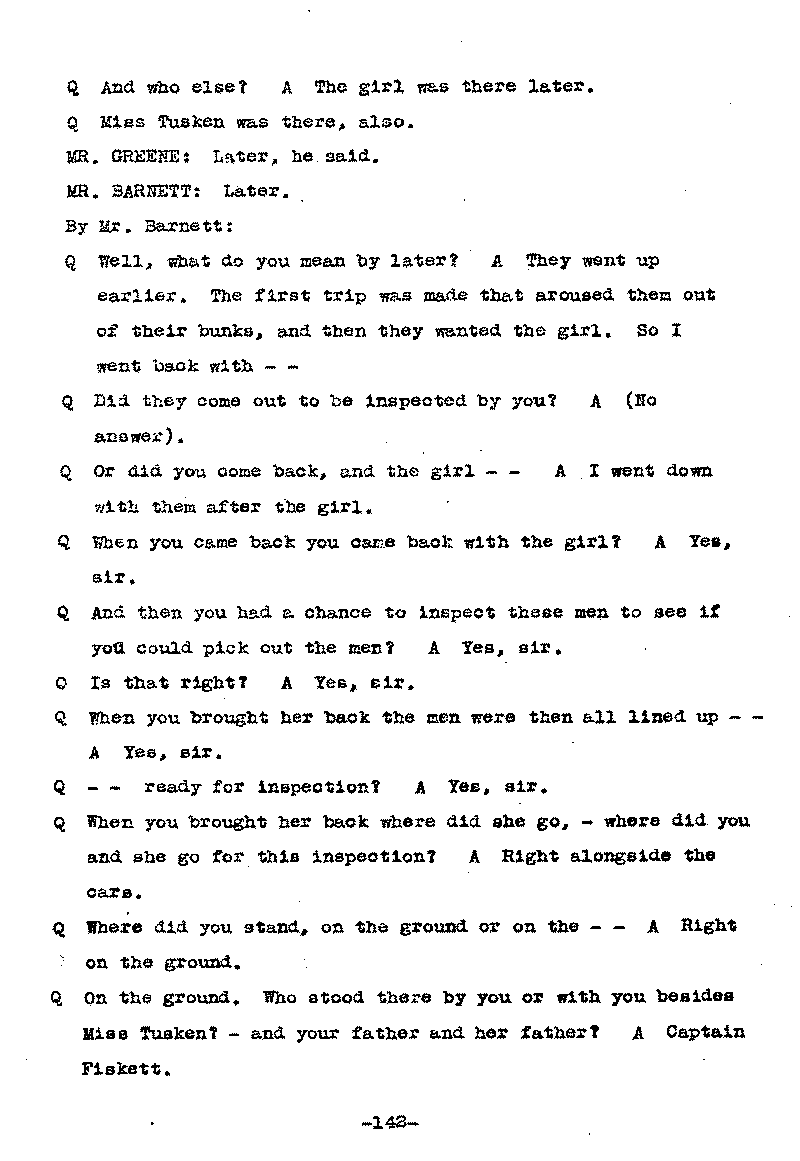


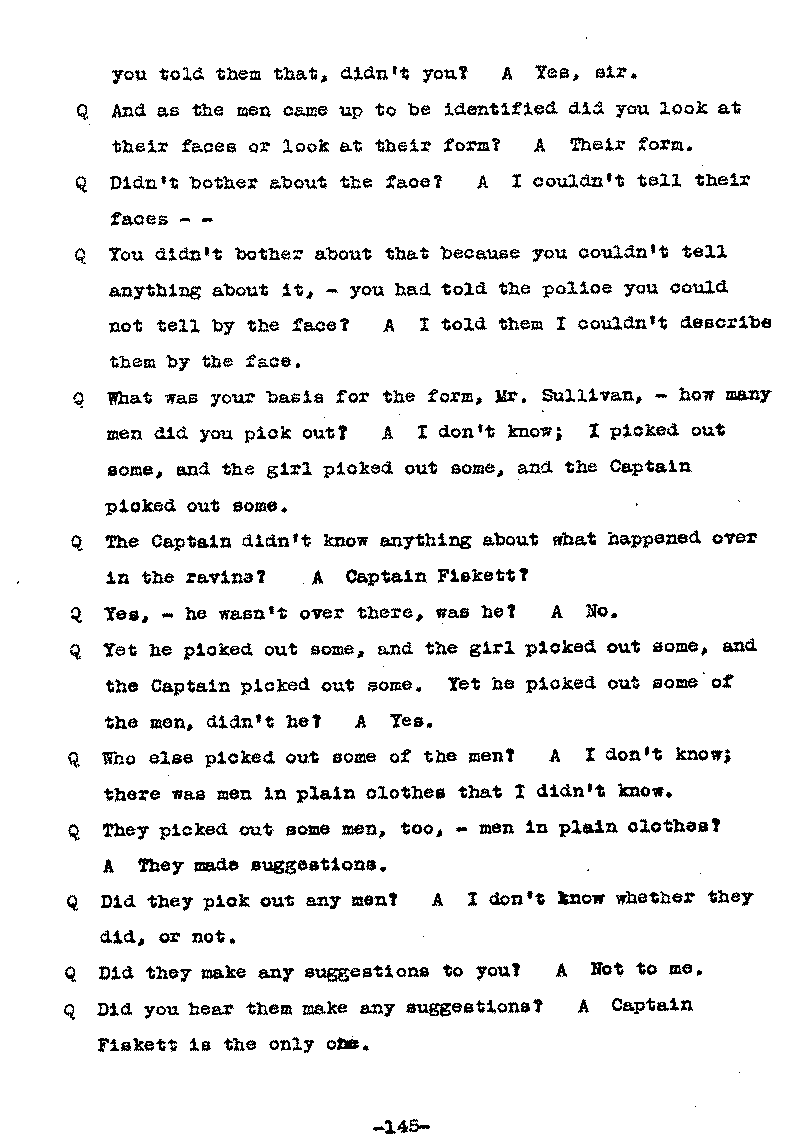
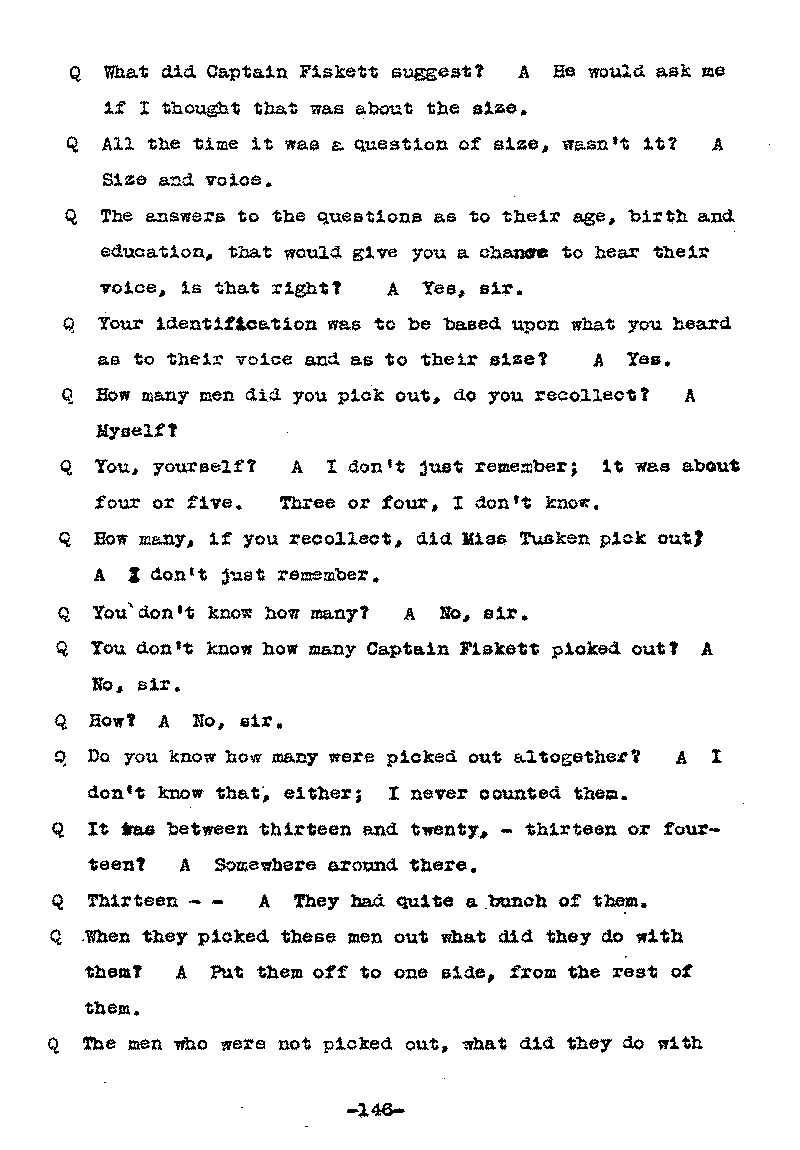

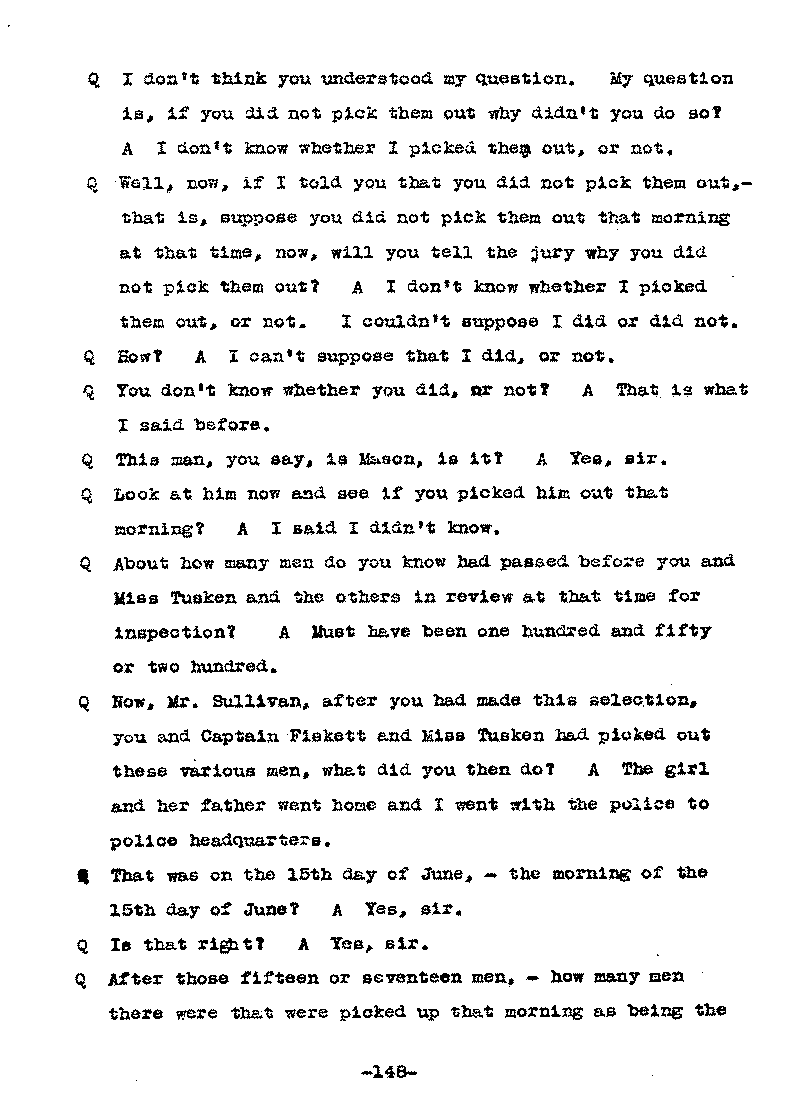

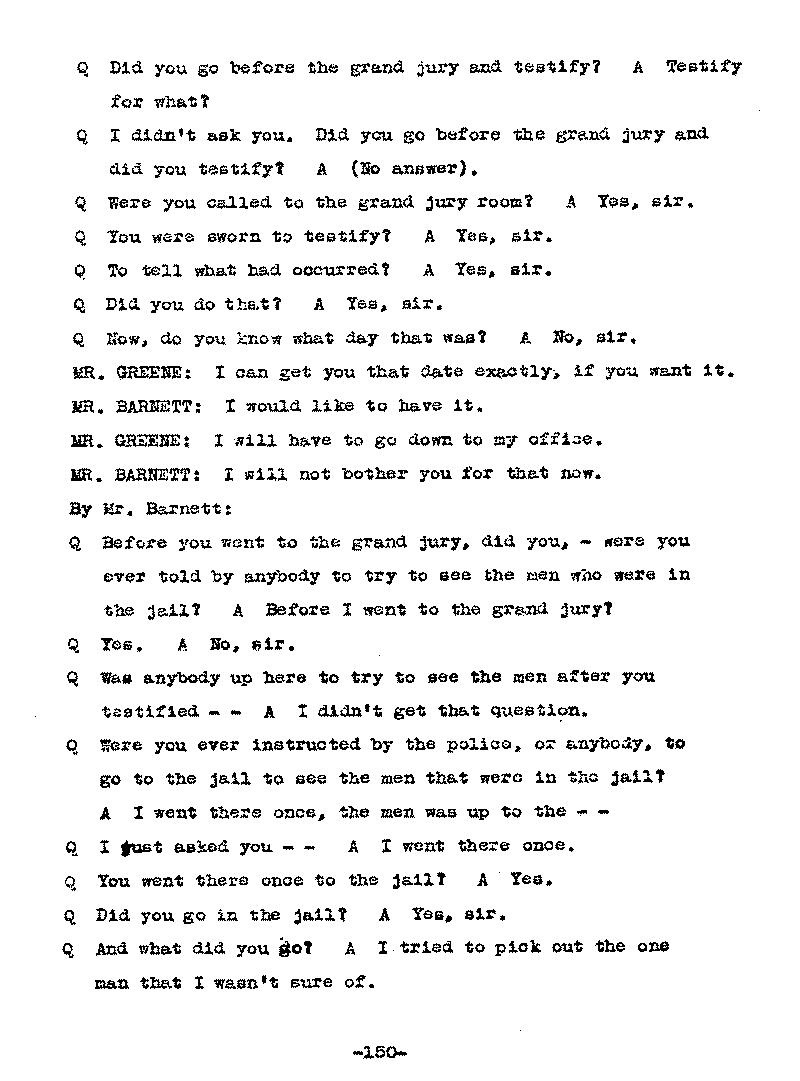
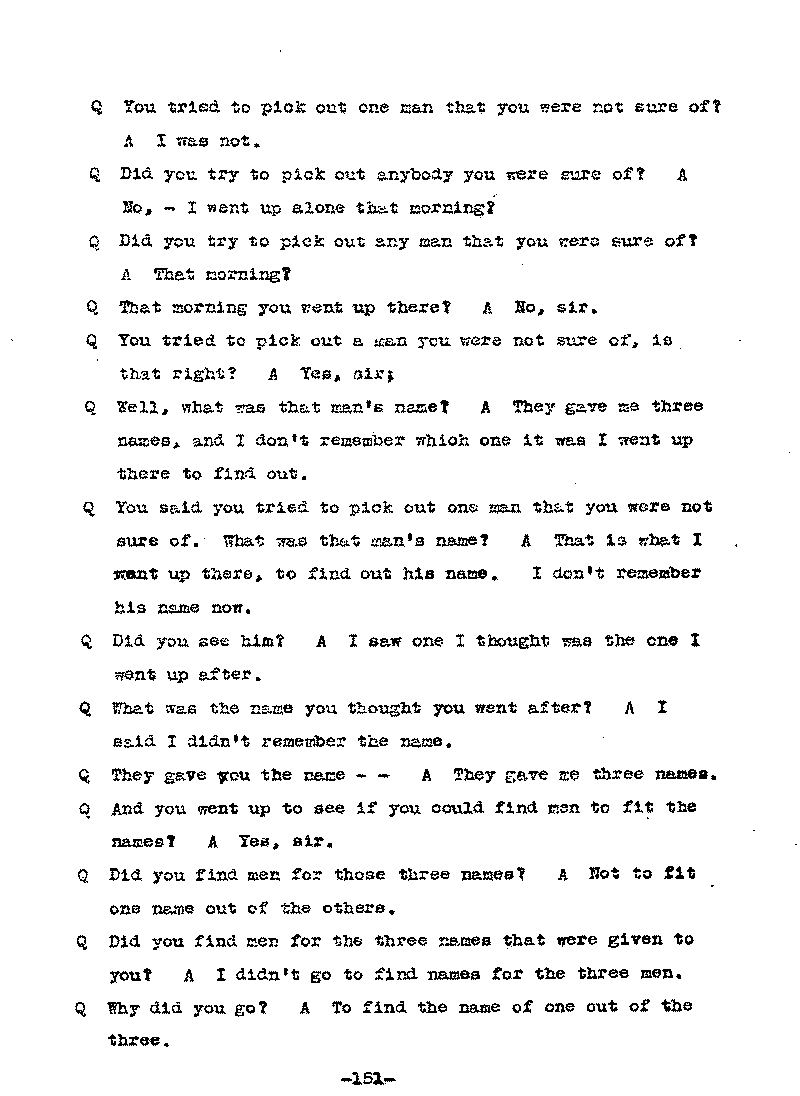
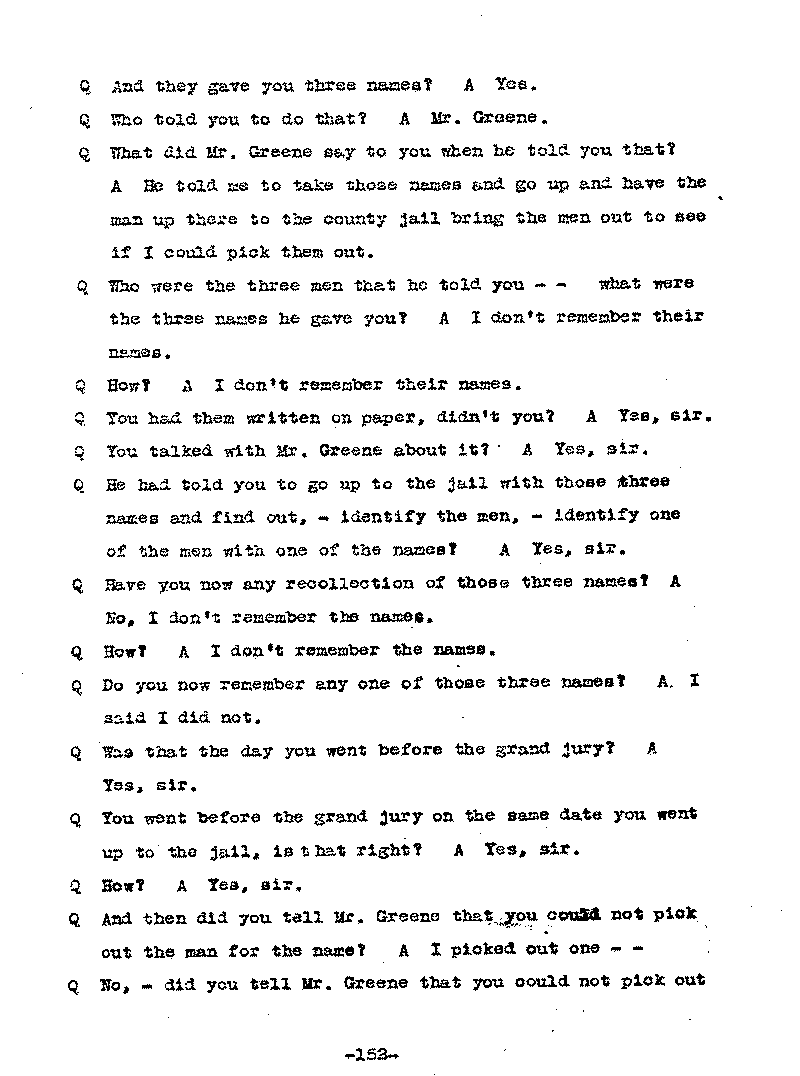


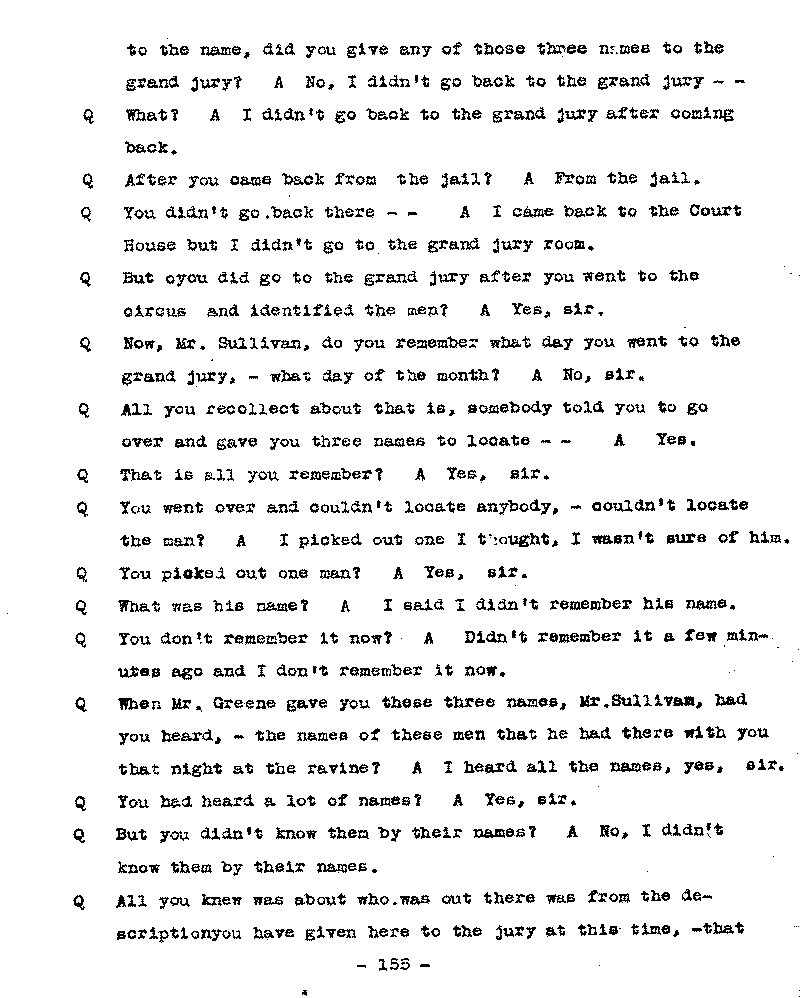


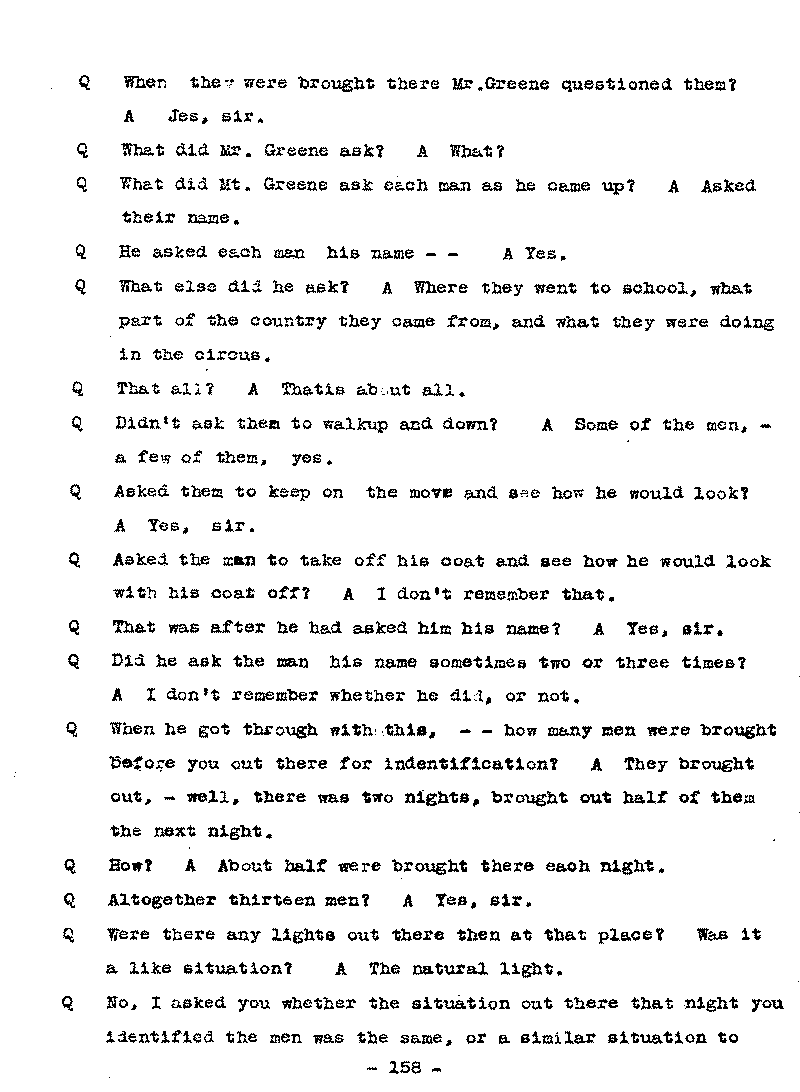
Image text
JUDGES JUDGES
HON.
J. D. Ensign HON. H. A. Dancer
HON. W. A.
Cant HON. Bert Fesler
HON. Martine Hughes HON.
Edward Freeman
COUNTY OF ST.
LOUIS
OFFICE OF
CLERK
OF DISTRICT COURT
Duluth, Minn., August 30th 192 1.
J. P.
JOHNSON
CLERK
Hon. J. J. Sullivan,
Warden,
Minnesota State Prison,
Stillwater, Minnesota.
Dear
Sir:
In Re. State of Minnesota VS Max Mason.
Referring to my letter of
August 6th handing you Commitment in the above entitled matter, I am
enclosing you here with certified copy of Synopsis of the testimony given at the
trial of this case as ordered by Hon. L. S. Nelson.
Kindly acknowledge
receipt, and oblige.
Yours very truly,
J. P. JOHNSON,
Clerk.
By J. A.
Cummings
Deputy
JAC/J
Encl.
CLERK’S CERTIFICATE
State of Minnesota, } ss. DISTRICT COURT
COUNTY OF
ST. LOUIS } ELEVENTH JUDICIAL DISTRICT
I. J. P. Johnson, Clerk
of the District Court, St. Louis County, and State of Minnesota do hereby
certify that I have compared the attached papers writing with the
original Synopsis of Testimony in the case of State of Minnesota vs. Max
Mason
in the action therein entitled, now remaining of record in my
office, and that the same is a true and correct copy and transcript of said
original Papers and the whole thereof.
WITNESS, My hand and seal of the said Court, at Duluth, this Thirtieth day of August A. D. 19 21
J. P. JOHNSON, Clerk
By J. A. Cummings Deputy.
STATE OF MINNESOTA
COUNTY OF ST. LOUIS
IN DISTRICT COURT
ELEVENTH JUDICIAL DISTRICT
_________________________________
Plaintiff.
AGAINST
Defendant.
_________________________________
Clerk’s
Certificate
_________________________________
I N D E X
State’s Witnesses:
Coventry, W. A. Direct Examination ---------------223
“ “ “ Cross “ ---------------225
Fiskett, A. G. Direct Examination ---------------194
“ “ “ Cross “ ---------------199
Graham, David Direct Examination ---------------219
“ “ Cross “ ---------------220
Murphy, John Direct Examination ---------------182
“ “ Cross “ ---------------188
Mahoney, J. D. Direct Examination ---------------402
“ “ “ Cross “ ---------------404
Nicholson, M.A. Direct Examination ---------------226
“ “ “ Cross “ ---------------234
Sullivan, Jas. Direct Examination --------------- 75
“ “ Cross “ --------------- 97
Sullivan, P. B. Direct Examination ---------------163
“ “ “ No Cross “
Schulte, F.A. Direct Examination ---------------383
“ “ “ Cross “ ---------------387
Tusken, Irene Direct Examination --------------- 17
“ “ Cross “ --------------- 41
“ “ Recalled “ ---------------239
Tusken, Amanda Direct Examination ---------------170
“ “ Cross “ ---------------174
Tusken, W. E. Direct Examination, --------------175
No Cross-examination.
_________
Defendant’s Witnesses:
Graves, Nate Direct Examination --------------290
“ “ Cross “ --------------299
Graham, David Direct Examination --------------327
“ “ Cross “ --------------330
Hayes, Louis Direct Examination --------------242
“ “ Cross “ --------------274
MASON, Max Direct Examination --------------342
“ “ Cross “ --------------369
“ “ Direct “ (Rebuttal-sur) 405
“ “ Cross “ “ 405
Spicer, Frank Direct Examination --------------332
“ “ Cross “ --------------340
Williams, Lonnie Direct Examination --------------311
“ “ Cross “ --------------318
State Rests -----------------------------------------242
Defendant Rests -----------------------------------------406
State Rests in Rebuttal ---------------------------------------
STATE OF MINNESOTA IN DISTRICT COURT
County of St. Louis 11th Judicial District
________________________________________
STATE OF MINNESOTA .......... Plaintiff
vs.
M A X M A S O N ................... Defendant
________________________________________
The above entitled cause came regularly on for trial
at the November, 1920, term of the District Court of the
Eleventh Judicial District of the State of Minnesota, held
at the Court House in the City of Duluth, within and for
the County of St. Louis, and state aforesaid, on Monday,
November 22, before,-
HON. L. S. N E L S O N, Judge, and a jury.
A p p e a r a n c e s :
For the State, Warren E.Greene, County Attorney.
For the Defendant, F. L. Barnett, R.C.McCollough
and Chas. W. Scrutchin,
The case is called for trial and a jury
impaneled and sworn to try the case.
-1-
THE COURT: You, gentlemen, since you have been sworn to
try this case, should not listen to or overhear
any conversation about the matter, nor should
you discuss it among yourselves until it is
finally submitted to you. I will now excuse
you until two o’clock this afternoon.
----oOo----
Two o’clock, p. m.
Case Called.
Mr. Greene opens the case to the jury on behalf
of the State.
(During the opening statement Mr. Barnett
interrupts Mr. Greene, as follows:
MR. BARNETT: Anything out of the presence of the defend-
ant, Mr. Greene ought not to be permitted to tell
anything that transpired,- the conversation be-
tween the girl and her mother outside of the
presence of the defendant. The father told
the boy and the boy told the father. The mother
asked the girl and the girl is going to tell
the mother. That ought not to be stated.
THE COURT: Counsel will refrain from stating conversations
that would not be competent.
MR. GREENE: I haven’t stated the conversation so far.
THE COURT: I do not think you have infringed so far.
Leave out all conversations.
MR. GREENE: I just stated that the girl spoke to the
mother and the mother then went back and told
the father.
(Mr. Greene finishes his opening statement)
-2-
MR. BARNETT: The different witnesses named here on the
back of the indictment, of course, I presume
they are to be called. I would like to know
whether there are any other names that will be
presented. If there are I would like to have
the names of the witnesses.
MR. GREENE: There may be one or two more.
THE COURT: Can you furnish the names?
MR. GREENE: I presume I can.
MR. BARNETT: Before the case is tried I would like to
have the witnesses excluded,- all those except
the ones that are testifying.
Mr. GREENE: That is entirely agreeable. I would like to
have the witnesses for both the estate and
the defense excluded. And, furthermore, in
view of the nature of this case, and in view
of the fact we have some women witnesses, I
would request that the spectators be excluded
from the room. That can be done, I think,
in a case of this character.
THE COURT: Yes, it can.
MR. BARNETT: Of course, we should,-- the defendant
objects to a private hearing of this case,
may if please the court. That is what it
amounts to.
THE COURT: You desire the spectators to be allowed to
remain in the court room?
MR. BARNETT: I do.
-3-
MR. GREENE: May it please the court, it seems to me that
we have done that a good many times here, only
in cases of this character. This case has many
features that are not pleasant, and I can see no
good reason why the spectators should be in the
room. They gain nothing by it. It has been
held many times that it is not necessary for
the spectators to be in the room to give it the
character of a public hearing. I know it will
embarrass a decent woman to tell such things as
have to be told here, before a mixed gathering.
MR. BARNETT: I do not desire to embarrass anyone in the
trial of this case to the jury. I certainly will not do anything in the world to embarrass or to in any way wound the feelings of Irene Tusken. But with all the other witnesses there can be no embarrassment. The prosecuting witness and her mother.
THE COURT: Will the defense furnish the state with a list of the names of the witnesses, and the state also furnish a list of those that are not in the indictment?
MR. BARNETT: I would like to have a list of the state’s witnesses before we furnish ours, because we are in the dark as to the evidence entirely. According to the County Attorney’s statement we can have not witnesses except the seven boys that are in jail. Outside of those you charge
-4-
similarly with this defendant I believe we have no witnesses, that I know of now, not named by the County Attorney in his list on the back of the indictment. If I do find during the progress of the examination that we have anyone whose name is brought into the case that we need as a witness, I shall give ample opportunity to the County Attorney by giving him the name.
THE COURT: As far as you know you have no one in the court room whom you expect to use as a witness?
MR. BARNETT: No. If I do I will exclude them immediately.
THE COURT: I think, Mr. Greene, if you desire it when Irene Tusken testifies I will exclude them all, if that is satisfactory.
MR. BARNETT: There is no objection by the defense.
MR GREENE: That is all right, if that is what the court will do. There is also the mother of the young lady who will testify.
MR. BARNETT: Amanda Tusken?
MR GREENE: Amanda Tusken, yes.
THE COURT: I think when both those witnesses testify that we will exclude the spectators.
MR. BARNETT: No objection of the part of the defense.
MR GREENE: I do not think there will be any other witnesses than the ones on the indictment, that I know of at this time. There may be one other, but I do not know who it will be. Always bearing in mind that fact that any witnesses we may have we will not have in the court room, I wouldn’t wan to have
-5-
it understood that I would be bound to use only these witnesses.
THE COURT: Oh, no. The only purpose was to know that those witnesses were not in the court room while the others were testifying.
MR. GREENE: Yes.
MR. BARNETT: That is all the purpose of the motion.
MR GREENE: I do not know of any others that I will call than those on the indictment.
I r e n e T u s k e n
Called as a witness on behalf of the State.
THE COURT: All the witness and the public generally will retire from the room. Mr. Bailiff you will see that they all retire from the room.
(The spectators and witnesses retire from the room)
-6-
I R E N E T U S K E N
Being first duly sworn as a witness on behalf of the State, testifies as follows:
DIRECT EXAMINATION,
By Mr. Green:
Q. Your name is Irene Tusken? A Yes, sir.
Q. How old are you? A Nineteen.
Q. When was your birthday? A November first.
Q. Whereabouts do you live? A 4836 West Sixth.
Q. 4836 West Sixth? A Yes, sir.
Q. That is out in what is called West Duluth? A Yes, sir.
Q. How long have you lived in Wes Duluth? A All my life.
Q. Were you born there? A Yes, sir.
Q. What is your father’s name? A William E Tusken.
Q. An your mother’s name? A Amanda.
MR GREENE: I forgot,-probably the father may be a witness. His name
is not on the indictments, but he will testify to but very little.
THE
COURT: Is he in the court-room?
MR GREENE: No, he is not.
THE COURT:
All right.
By Mr. Greene:
Q. How long have you lived at the place where you now live?
A It is about five years.
Q. Did you say your were born out there in West Duluth? A In West Duluth, yes, sir.
Q. What is your father’s business? A He is a mail carrier.
Q. How ling has he been a mail carrier? A About eighteen years, I think; I am not sure of that.
-7-
Q. A good many years, anyhow? A Yes, sir.
Q. have you any brothers and sisters? A I have four.
Q. What are their ages? A The youngest is five and the oldest is thirteen.
Q. Thirteen? A Yes, sir.
Q. Then you are the oldest child in the family? A Yes, sir.
Q. What schooling have you had? A I had grammar school and three years in high.
Q. What high school did you go to? A Denfeld High.
Q. That is a West Duluth high school? A Yes.
Q. When did you get through with you three years in high school? A 1918.
Q. A couple of years ago? A Yes, sir.
Q. Now, Miss Tusken on the 14th of June last were you living at the same place that you live now? A Yes, sir.
Q. That evening were you at home or did you come uptown? A I was at home until about eight o’clock.
Q. Until about eight o’clock? A Yes, sir.
Q. Who was there at home? A All the folks were home.
Q. Did you leave the place at eight o’clock? A Yes, sir.
Q. I mean around eight? A Yes, sir.
Q. How did you come to go away? A Why , two girls cam after me to go. We were not very definite where we would go.
Q. Who were the two girls? A Eudora McVeigh and Dorothy Beaver.
Q. They came to the house, did they? A Yes, sir.
-8-
Q. Did you go out with them? A Yes, sir.
Q. Whereabouts did you three girls go? A We went – we took the street-car and went as far as Vernon Street; that is past the circus grounds, and we got off at the circus grounds and we walked back. I mean we got off at Vernon Street and walked back to the circus grounds.
Q. When you left the house you took the street-car? A Yes, sir. We walked down to Central.
Q. Walked down to Central. Got a Grand Avenue car? A Yes, sir.
Q. Went on east on Grand Avenue? A Yes, sir.
Q. And got off at Vernon Street? A Yes, sir.
Q. Vernon Street is east of the ore docks? A Yes, sir.
Q. And the circus grounds were where? A West of there, about two blocks, I think. About a block or two.
Q. That was in that big open field west of the ore docks, on the upper side of Grand Avenue? A Yes.
Q. You three girls got off the car at Vernon Street and you say you walked back? A Yes, sir.
Q. About what time was it,-about what time would you think it was that you got back there? A It was around 8:30.
Q. What did you three girls do when you got back there? A We walked into the circus grounds, around in front there, and there I met Jimmie.
Q. By “Jimmie”, you me Jimmie Sullivan? A Yes, sir.
Q. How long have you known Jimmie Sullivan? A It is about two years.
Q. Did you go to school with him? A Yes, sir; but I
-9-
didn’t know him very well when he went to school, that is the first year of school.
Q. How well have you known him since? A Why, I have known him intimately for about - - it is over a year.
Q. By “intimately” what do you mean, how often? A He has been coming out to the house.
Q. He has been coming out calling on you at the house? A Yes.
Q. Been going to places with you? A Yes, sir.
Q. When you left the house on the evening of the 14th of June and went down with the girls, did you expect to meet Jimmie? A No, I did not.
Q. You just ran across him down there? A Yes, sir.
Q. Did you meet him soon after you got there or was there some lapse of time? A Soon after I got there; we just got in the entrance.
Q. Got in the entrance? A Yes.
Q. I wish you would just describe to us, Miss Tusken, as wll as you can, the lay out there about the entrance and the tents, - the arrangement of it. A Going up from Grand Avenue there is a little space for the side shows; the side shows are on the left hand as you go in. Then from the side shows there is the show - - the tent where they keep the animals, and beyond that is the Big Top, where the main show is.
Q. As I understand it, when you left Grand Avenue you went north, that is up towards the hill? A Yes, sir.
Q. Did the side shows come right down to the street? A No.
-10-
Q. Or did they commence back in a little ways? A They commenced back in.
Q. Were those side shows all on one side, or was there a sort of an isle between them? A Why, they were on one side, but there is sort of a path between them. You see, there was pop-corn wagons and things opposite.
Q. The side shows on the right or left? A Left.
Q. Besides that there was a string of popcorn wagons - - A Yes.
Q. -- and various other things? A Yes.
Q. So it made sort of a street between the side shows and the - -
A Yes.
Q. - - and these other things. At the end of this,- what was at the end of this street, we will call it? A The menagerie show was at the end.
Q. Whereabouts did you but your tickets to go into the show? A (No answer).
Q. You didn’t go in, but where was the place for selling the tickets?
A It was in front of the big show, at the entrance there.
Q. At the entrance when you went into the animal tent? A No, at the entrance to the big show.
Q. How about going into the animal tent,- could they go in there without paying, or don’t you know? A I don’t know.
Q. Did you go into the animal tent? A No, we just stayed outside.
Q. When you got there what was the condition there,- were the side shows in operation? A Yes, they were.
-11-
Q. Men barking outside and hollering? A Yes, sir.
Q. How about the animal tent,- was that up? A They were just taking it down.
Q. When you first got there? A When we first got there. When we first cam into the entrance there we stood around the side shows.
Q. When you first came into the entrance you stood around the side shows? A Yes, sir. Walked around to them.
Q. After you met Jimmie did you stay with the other girls? A No, I didn’t; I left them.
Q. You left and walked around with him? A Yes, sir.
Q. What became of them,- do you know? A They stopped to talk to some boys.
Q. Did you see them afterwards? A No, I didn’t; after I left them I didn’t see them again.
Q. Well, did you know the boys? A I knew one of them; I didn’t remember the rest. I didn’t stop to talk to them.
Q. Where does Jim live? A He lives at 2874 Wicklow Street.
Q. Where is Wicklow Street? A Somewhat up from Vernon Street.
Q. It is in the West End? A Yes, it is in the West End.
Q. After you got there how long did you stand around there, do you think? A Well, I should imagine it was about three quarters of an hour.
Q. During that three quarters of an hour just what were you doing?
A We were walking around; we was going
-12-
to go into the side shows and we were walking to the different
ones to see which ones we wanted to go into, and found we didn’t want to go into any of them.
Q. Then what did you do? A Then we - - we walked,- we noticed quite a few people over at the menagerie and we walked over to there.
MR GREENE: I have made a little sketch, may it please the court, just a rough sketch, for the purpose of illustrating, only. I am going to submit it to the counsel and possibly it may aid us a little bit in getting at the locations. (Handing paper to Mr. Barnett.)
(Sketch marked Exhibit A.)
MR GREENE: I have this paper marked Exhibit A, and after consultation with the attorney for the defendant we are going to offer it for the purpose of illustrating only, with the understanding that the various witnesses, both for the state and for the defense, can testify in relation to the fact, as their recollecting serves them, and it may be corrected, or otherwise, as each witness may testify. I do not pretent that this is an accurate survey, or anything of that kind; it is sort of a general lay out for the purpose of aiding the jury.
By Mr. Greene:
Q. I call your attention to Exhibit A, Miss Tusken, and call your attention to the place marked here as Grand Avenue and the line running around here marked D.M.& N.
-13-
railroad ore dock; this indication is that this point here, marked with an “N” is towards the north, and I will ask you whether of not you can recognize that situation and give us some data conserning it as you recall it? Is that about the way you recollect the matter? A That is about right. I don’t remember very well the layout of the place; it is rather hard to remember.
Q. You have testified that when you first went in you went north toward the side shows. I have indicated certain little circles here. This is the tent marked “menagerie”; this is the Big Top. Assuming that this is the menagerie tent, it is so marked, and that this is the Big Top, it is so marked, and this is Grand Avenue, whereabouts on there would you put the side show tents that you have testified about? A Right along here.
Q. I will mark those side shows. You testified,- you stated that as you came in from Grand Avenue your recollection was that these side shows were on the left? A Yes, sir.
Q. What was on your right? A Going in was different popcorn wagons.
Q. Various circus devices? A Yes, sir.
Q. You spoke about the entrance. About where would be the entrance on this? A (No answer).
Q. You said you went to the entrance. That is the first entrance that you go in when you leave the street? A I think it was straight entrance right down - - I
-14-
am not sure about that.
Q. Was there any gate, or opening, or anything of the kind - - A Yes, there is sort of an arch or something.
Q. Where was that, at the end of the street? A Near the avenue, right in.
Q. Right near the avenue? A Back of the sidewalk a little ways.
Q. We will mark a line down there somewhere and call it “Arch”, This arch is the place that you call the entrance. Whereabouts was it, would you call it, that you first met Jimmie? A It was right then,- right before we came to the side shows.
Q. It would be about here? A Through the arch, yes.
Q. You were with two other girls, then? A Yes.
Q. Then you went off with Jimmie and they went off with other boys? A They stopped and talked; I didn’t see them go off with them.
Q. You simply left them? A Yes, sir.
Q. Then you and Jimmie walked around here among the side shows and the popcorn wagons and things of that kind? A Yes.
Q. I have indicated a little entrance to the menagerie tent. Is that bout the way it was? A I think it goes a little further over this way; I don’t remember it being near the end like that.
Q. All right,- we will put it further over this way. About where I put those two lines, something of that kind? A Yes, something like that.
-15-
Q. And then the Big Top was over behind that? A Yes, sir.
Q. Do you know where the cook tent was out here? A I didn’t notice it.
Q. Is that where the horse tents were? A They were quite a ways over.
Q. On the left-hand side? A On the left hand.
MR GREENE: I will mark the second one “Horse Tent” and the other the cook ten. I will offer Exhibit A in evidence, so that I may show it to the jury.
THE COURT: It may by received. There is no objection?
MR. BARNETT: No objection.
(Exhibit A with Clerk’s files)
By Mr. Greene:
Q. Now, Miss Tusken, while you were going around there with Jimmie in the way you have described,- you said you went around for about three-quarters of an hour. What makes you think it was about three-quarters of an hour? A I heard the nine o’clock whistle blow and it was a while after that.
Q. Where were you at the time the nine o’clock whistle blew? A I don’t remember where we were exactly.
Q. Well, roughly? A We were somewhere around the side shows then.
Q. Fifteen minutes or so after that, - what happened then? A We walked up around the menagerie, not at the entrance but around; they had started to tear down the tents.
Q. They had started to tear down the tents? A The big ten was already down on the ground.
-16-
Q. The menagerie tent? A No - - the menagerie tent.
Q. That was already down on the ground? A Yes, sir.
Q. When did that come down? A I don’t know; it was down already when we were there.
Q. Was there any activity up around there after nine o’clock, around the menagerie tent? A They were getting all the animals ready to go, sort of picking the animals out, and everything they had, I suppose, up the railroad. I don’t know.
Q. What did you and Jimmie do, - where did you go? A We watched them there a little to the left of the entrance.
Q. I will just have you show it on the plat about where it was that you were watching them around this menagerie tent - - A It was around about here (indicating).
Q. About around in here? A Yes.
Q. Where I have made the cross? A Yes.
MR. BARNETT: That is where she was when the big tent was taken down?
A No - -
By Mr. Barnett:
Q. When it started to be - - ? A Yes; well, that was where we were when we - - when we went up to look at it.
By Mr. Greene:
Q. That is where you were when you went up to look at it, to see what they were doing up there? A Yes.
Q. You and Jimmie stayed around the side shows for some time, and then - -
-17-
MR. BARNETT: Will you mark that cross “1”, so we can refer to that?
MR GREENE: All right, - I will mark it with a cross with a circle around it and a “1”.
By Mr. Greene:
Q. You and Jimmie were around the side shows up there quite a ways and after a while you saw this activity going on up around there with these animals and you walked up there to the point you have indicated? A Yes, sir.
Q. On this plat. When you got up there what was going on? A Why, all of the working men were around, - they were taking the animals away.
Q. Were these working men white men or colored men? A They were colored men.
Q. When you went up there were there any other people up there?
A Yes, there were.
Q. I mean spectators? A Yes, that is what I mean.
Q. Were there many spectators up there when you went up there?
A Yes, there were quite a few, but they were sort o scattered around.
Q. They were sort of scattered around? A Yes, sir.
Q. When you got up in there and standing there watching this, how far would you think you were from that nearest side show tent?
A Let us see, - we were quite a ways from it; probably about from here to the first step.
Q. A distance of about from where you are down to me? A Yes, sir.
-18-
Q. A distance of about thirty feet? A I would think that is about the distance.
Q. Well, that is your best recollection? A Yes, sir.
Q. You say that the menagerie tent was down on the ground? A Yes.
Q. Were they doing anything with that about rolling it up? A They were taking the poles away.
Q. Which direction were they taking the poles? A They were taking them back.
Q. Which way do you mean by “back”? A Back this way (indicating).
Q. Up towards the Big Top, or cook tent, - over in that direction somewhere? A Yes, sir.
Q. How long do you think you and Jimmie stood there and watched what was going on? A Why, about ten minutes.
Q. Then did you notice anything about the rest of the spectators?
A Why, we notices nearly everyone was gone, that were standing around watching.
Q. What was the condition up there as far as the lights were concerned, - was it dark, or medium, or light? A Well, around that tent the lights from the docks sort of gave light there.
Q. That is, there is a string of lights all the way around the Missabe - - A Yes.
Q. - - curve on the ore-docks? A Yes, sir.
Q. So it was not pitch black in there? A No, it was not.
-19-
Q. Well, after you had been there some ten minutes or so it would bring it to about what time in the evening? A Why, somewhere around nine-thirty.
